- Peaceful Forests And Sparkling Streams...

Peaceful Forests and Sparkling Streams: The Best Day Hikes in Kyoto

While most tourists travel to Kyoto to soak up the city’s rich history, abundance of temples, shrines and traditional teahouses, the surrounding area is also overflowing with nature. Enveloped by mountains and crystal-clear rivers, Kyoto boasts off-the-beaten-track hiking trails and leisurely walks suitable for all fitness levels.
To make the most of Kyoto’s natural landscape, visit during hanami (cherry blossom) season in March and April to be mesmerised by the blooming cherry blossom trees, or plan your visit to coincide with kouyou (literally, ‘red leaves’) season in September and October, and be dazzled by the region’s autumn colours.
However, no matter the time of year you are in Kyoto , you can still make the most of its picturesque surroundings by hiking and exploring its towering bamboo groves; climbing up to a temple home to marathon monks who run 40km (25mi) daily; or taking part in the Japanese kawarake nage (pottery throwing) custom that rids people of evil by throwing clay discs off cliffs.
To discover the natural wonders and wilderness of Japan’s ancient city, read on for Culture Trip’s pick of Kyoto’s best day hikes.
Mount Daimonji
Hike up the very steep Mount Daimonji to its viewpoint at 220m (722ft) elevation to be rewarded by magnificent views of Kyoto , which are particularly pleasant during sunrise and sunset. Reach this somewhat challenging one-hour hike by taking the Raku 100 bus from Kyoto Station to its final stop, Ginkakuji Temple. Once you have found yourself at the entrance of the temple, turn left and walk towards the unmissable Torii gate, then turn right at the shrine and make your way up the hill to the start of the trail. A sombre forest, sparkling streams and three flights of concrete stairs await on the way to the summit.

Fushimi Inari Circuit
Catch the Keihan train line or the JR line to Fushimi-Inari Station where the two-to-three hour (round trip) Fushimi Inari Circuit pilgrimage, which suits all hiking levels, commences. Follow the winding tunnels that mark the trail to discover one of Kyoto’s most cherished ancient shrines, Fushimi Inari-Taisha. The shrine is dedicated to Inari, the Shinto god of rice, and is covered with many fox statues, which are believed to be Inari’s messengers. Notable to many for its red torii gates that wrap their way around Mount Inari (233m (764ft) high), the majority of people stroll 200m (656ft) up to snap a shot of the view before returning back, but we highly recommend hiking all the way to the summit. You’ll be compensated with miniature shrines, souvenir shops, ice cream shops and a kitsune (which means ‘fox’ in English) udon restaurant.
Arashiyama Mountains
Arashiyama Mountains arguably comprise the most alluring (and most picturesque) hikes in Japan . Located along the Oi River, there are many leisurely walks around the mountain’s foothills that can be enjoyed in either half a day or the whole day – suitable for both adults and children. Simply take the JR Sagano Line from Kyoto Station to Saga-Arashiyama Station to begin your hike at Togetsukyo Bridge, a 155m (509ft) bridge that spans the Katsura River, from which there are spectacular views of the Arashiyama Mountains towering in the background. Make your way to the sprawling Zen temple of Togetsukyo Bridge, Tenryuji Temple, then prepare to be mesmerised by the towering green stalks of Sagano Bamboo Forest and the imperial home of Okochi Sanso Villa along the way.

Become a Culture Tripper!
Sign up to our newsletter to save up to $1,058 on our unique trips..
See privacy policy .
From here you can either turn back or, for those who are still buzzing with energy, continue the second half of the day towards Torokko Arashiyama Station, and then on past Sagano Doll House, Adashino Nenbutsu Temple and Otagi Nembutsuji Temple, culminating the walk at Kimono Forest.
Daigo-Ji Temple
Photogenic in all seasons, Daigo-Ji Temple is a major temple of the Shingon sect of Japanese Buddhism, and it’s listed as a UNESCO World Heritage Site. The expansive temple snakes around the entire mountainside of Daigoyama and an entry fee of ¥600 (£4.55) allows you to access hiking trails that lead to an array of other temples. During the two-to-three hour (round trip) hike, stomp through woodland paths that take you to the peak of the mountain which overlooks Nara and Osaka – your calf muscles will thank you. And be sure to make pit stops at the man-made waterfall of Shimo Daigo. Getting to the starting point is easy: take the Kyoto Tozai subway line to Daigo Station – the temple is a 10-minute walk away.

At the 850m (2,789ft)-high summit of Mount Hiei is UNESCO World Heritage Site, Enryakuji Temple. Once home to warrior monks, the temple nowadays houses ‘marathon monks’ – Tendai Buddhist monks who take part in the practice of kaihōgyō (literally ‘circling the mountain’) around Mount Hiei, a walking meditation spread over several years. The monks are challenged to a 1,000 day test of endurance and diligence, both physically and mentally, which is known as sennichi kaiho gyo , or ‘thousand-day-around-the-peaks training’. As of recently, only 46 monks have ever completed the full marathon, which takes seven years in total. And while a majority of tourists opt for cable cars as their means of transport to the peak of Mount Hiei, it’s possible to gain an insight into the kaihōgyō experience by taking the 20-minute hiking trail up the mountain. Keep your eyes peeled for wildlife in the form of monkeys, boars, salamanders and Japanese nightingales. To get to the start of the hike, take the Eiden train line from Demachiyanagi Station to Shugakuin Station or a Kyoto city 5 bus to the Shugakuin Rikyu bus stop.
Kibune to Kurama Circuit
The Kibune to Kurama Circuit provides the ideal harmony between the appreciation of nature and of tradition, as walkers hike through tranquil villages with a mountainside backdrop akin to a fairytale. Hope on the Eizan Line train to Kibune-guchi Station and make your way to Kurama-dera Buddhist Temple, where your two-to-three hour (round trip) walk begins. Follow the path out the back of the temple and up into the peaceful forest of Mount Kurama, where titan pine trees and red wooden lanterns lead up to Kifune Shrine’s main hall, a quaint vermilion bridge across the Kibune River, with Nio-Mon (the gate of the guardians) to look forward to. Lastly, explore Kurama, a town filled with nagaya (traditional Japanese wooden houses) before heading back to Kurama-dera temple.
Mount Atago
For avid hikers, this four-to-six hour (round trip) hike requires more stamina than that of the previously mentioned hikes in this list, and should be avoided during the icy winter months. Measuring an impressive 924m (3,032ft) in height, hiking is the only way to reach the summit of Kyoto’s highest mountain, Mount Atago . To find the trail entrance, take the 94 or 92 bus from Arashiyama Station to Kiyotaki (清滝) bus stop, head northwest down the road, cross the bridge and keep an eye out for a marked sign by a red torii gate. You’ll come upon small deers along the endless number of stairs leading to Atago Shrine, and you’re also likely to see a flow of children along the way – it is believed that children who visit the shrine may be granted protection from fire for their entire lives.
Takao to Hozukyo Circuit
Analogous to the above hike to Mount Atago, the Takao to Hozukyo Circuit is more on the challenging side than other walks on this list. With a trail stretching over 11km (6.8mi) that requires six hours to complete, the hike starts near Yamashirotakao stop, a 45-minute bus ride (JR3 bus boarding point) from Kyoto Station. Trek over to Takao village and climb up the steps to reach the sacred Jingo-ji temple (¥600 (£4.55) entry fee). If you’re lucky, one of the many pretty teahouses and restaurants along the way will be open, especially if you visit in spring (April/May) or autumn (October/November). Pass the Kondo hall and look for the kawarake nage spot for a rare opportunity to participate in this local custom by purchasing a kawarake – tiny clay discs that people throw off a cliff to eliminate bad karma. The kanji on the discs read 厄除, which means ‘getting rid of evil’. Finish up at JR Hozukyo Station for the end of your hike.

13 Reasons to Visit Kyoto, Japan

The Best Hotels in Kyoto, Japan, for Every Traveller

The Best Hostels to Book in Kyoto

The Best Capsule Hotels to Book in Kyoto, Japan

The Best Cheap Hotels in Kyoto

Top 10 Must-Try Local Restaurants in Kyoto, Japan

A Solo Traveller's Guide to Kyoto

The Most Beautiful Traditional Japanese Gardens in Kyoto

10 Unusual and Exciting Tours and Tasting Experiences in Kyoto

Top Places To Stay on a Budget in Kyoto

The Best Luxury Hotels to Book in Kyoto, Japan

11 Best Things to Do in Kyoto
Culture Trip Fall Sale
Save up to $1,058 on our unique small-group trips! Limited spots.

- Post ID: 1001415224
- Sponsored? No
- View Payload

10 Breathtaking Trails: Your Ultimate Guide To The Best Hiking In Kyoto
10 Trails To Experience The Best Hiking In Kyoto
The Fushimi Inari Taisha Trail boasts the iconic torii gates that lead visitors up to the revered Fushimi Inari Shrine, creating a mesmerizing and culturally rich experience. As you embark on this trail, you’ll be treated to a scenic hike through a forested mountain, offering breathtaking panoramic views of Kyoto’s beauty at every turn.
Along the way, hikers have the opportunity to explore multiple smaller shrines nestled amidst the lush surroundings, adding an element of discovery and spirituality to the journey. This immersive experience allows visitors not only to appreciate nature but also to delve into Japan’s religious heritage [ 1 ] by interacting with these sacred sites.
This trail is not just about walking; it’s about immersing yourself in history and culture while being surrounded by picturesque landscapes that have captivated tourists from around the globe. The allure of this world heritage site extends beyond just a physical walk – it’s a spiritual and visual feast for those who venture along its path.
Whether you’re an avid hiker or simply someone looking for an enriching cultural trip, exploring the Fushimi Inari Taisha Trail promises an unforgettable adventure through one of Kyoto’s most treasured areas.
The Kurama to Kibune hike offers a serene and picturesque trail that connects two delightful villages in Kyoto. As you traverse this path, you’ll have the opportunity to explore the renowned Kurama Temple, steeped in history and cultural significance.
One of the highlights of this hike is the chance to unwind by indulging in a soothing soak at one of Kibune’s tranquil hot springs. This experience allows hikers to relax amidst nature’s beauty while rejuvenating their bodies after a day of exploration.
During the fall season, visitors are treated to a breathtaking display of vibrant autumn foliage along the trail. The vivid colors of reds, oranges, and yellows create a magical atmosphere that enhances the overall hiking experience.
Immerse yourself in nature’s wonders as you walk through this enchanting route between Kurama and Kibune villages. Whether you seek tranquility, cultural immersion, or simply an escape into Japan’s natural beauty, this hike promises a fulfilling adventure for all who embark on it.
Ascend the slopes of Daimonji-yama to behold breathtaking panoramic views of Kyoto city below. During the Obon festival, witness a spectacular giant bonfire lit on the mountainside, adding a touch of cultural richness to your hike experience.
The trail up Daimonji-yama offers hikers a challenging yet rewarding journey with stunning vistas at every turn. The beauty of this hike lies not only in its difficulty level but also in the sense of accomplishment it brings upon reaching the summit.
Immerse yourself in nature as you make your way through this scenic route, taking in the sights and sounds that surround you. Whether you are an experienced hiker or someone looking for an adventure, Daimonji-yama promises an unforgettable exploration into both nature and tradition.

Stroll through the enchanting bamboo forest in Arashiyama, a serene experience that transports you to another world within Kyoto itself. The towering green bamboo stalks create an ethereal atmosphere, perfect for those seeking tranquility amidst nature.
At Iwatayama Monkey Park, interact with playful monkeys in their natural habitat. Watch them swing from tree to tree or feed them at designated feeding areas; it’s a unique opportunity to get up close with these fascinating creatures.
Immerse yourself in nature without venturing too far from the city – both locations are easily accessible by public transport, making them ideal day trips for visitors looking to escape the hustle and bustle of urban life. Enjoy the best of both worlds: cultural exploration at temples and sites nearby coupled with peaceful walks through bamboo groves and encounters with wildlife.
Whether you’re a nature enthusiast or simply looking for a break from city sightseeing, Arashiyama Bamboo Grove and Iwatayama Monkey Park offer a refreshing change of pace while still showcasing the beauty that Kyoto has to offer.
Embark on a challenging hike up Mount Hiei, one of Kyoto’s sacred mountains. The journey along the scenic Kyoto Trail offers a unique blend of natural beauty and cultural immersion as you pass by ancient temples and serene forests.
The trail to the summit provides an excellent opportunity to explore the mountain temples that dot the landscape. These mountain temples are not only historically significant but also offer a peaceful retreat from the bustling city life of central Kyoto.
Reaching the peak rewards hikers with breathtaking panoramic views of Kyoto and beyond. It’s an ideal spot for capturing memorable photos or simply taking in the awe-inspiring scenery. Visiting Enryakuji Temple at the summit adds a spiritual dimension to your hiking experience, allowing you to appreciate both nature and history in one remarkable setting.
Immerse yourself in the tranquility of the Philosopher’s Path, a picturesque trail flanked by cherry trees that offers a serene walk along a canal.
Explore an array of cultural treasures as you stroll, including temples, shrines, and quaint tea houses dotted along this scenic route.
Delve into the history behind this path that inspired renowned philosopher Nishida Kitaro with its natural beauty and contemplative ambiance.

Enjoy the serene beauty of the Katsura River as you stroll or cycle along its banks. The trail offers a peaceful escape from the hustle and bustle, allowing visitors to immerse themselves in nature’s tranquility.
Take delight in the breathtaking sights of lush green surroundings that line the riverbanks. Traditional boats gracefully gliding on the water and charming bridges spanning across create a picturesque setting ideal for relaxation and rejuvenation.
Embrace the opportunity to explore this scenic area of Arashiyama, where you can find solace away from the tourist crowds. Whether walking leisurely or biking through, every moment spent along this trail promises an unforgettable experience amidst nature’s wonders.
The Katsura River Trail stretches for several kilometers, providing ample space for exploration at your own pace while soaking in the natural beauty that Kyoto has to offer.
Climb to the summit of Mount Atago, Kyoto’s highest peak, for a challenging yet rewarding experience. The hike offers breathtaking panoramic views of Kyoto that are truly unparalleled.
Visiting the Atago Shrine at the base of the mountain is a must-do. This shrine is famous for its protective deity and serene atmosphere, adding a cultural touch to your hiking adventure in Kyoto.
Embark on this journey from the east gate of Mount Atago and marvel at the beauty that unfolds as you ascend towards the top. The trail presents an opportunity not only for physical exertion but also for spiritual rejuvenation amidst nature’s wonders.
Explore the peaceful countryside of Ohara, north of Kyoto, for a serene escape from the city’s hustle and bustle. Discover hidden gems like traditional houses, beautiful gardens , and secluded temples along this picturesque hiking route.
The Ohara countryside hike offers a unique blend of nature and culture, making it one of the best day hikes in Kyoto. Immerse yourself in the tranquility of lush hillsides while encountering historical sites that reflect Japan’s rich heritage .
This hiking trail provides an excellent opportunity to witness authentic Japanese rural life and architecture. Stroll through quaint villages surrounded by verdant landscapes, creating a perfect setting for relaxation and exploration.
Escape into nature as you meander through winding paths lined with cherry blossoms or vibrant autumn foliage depending on the season. The varying sceneries throughout the year ensure each hike is a new and enchanting experience.
Embark on a journey along the historic Suirokaku Aqueduct, an impressive brick structure that dates back to the Meiji era, showcasing remarkable engineering feats.
Explore the serene Nanzenji Temple, one of Kyoto’s most revered Zen temples with its exquisite temple buildings and expansive temple complex.
Immerse yourself in a harmonious blend of nature, history, and spirituality as you traverse this trail adorned with lush greenery and dotted with ancient structures.
Discover breathtaking views at every turn as you walk through this trail that offers not only physical activity but also a chance for introspection amidst tranquil surroundings.
Experience the tranquility of Japanese gardens within Nanzenji Temple grounds, adding an extra layer of peace and beauty to your hiking adventure in Kyoto.

You’ve now explored a plethora of hiking trails in Kyoto, each offering a unique experience blending nature, culture, and adventure. From the iconic Fushimi Inari Taisha Trail to the serene Tetsugaku no Michi, Kyoto’s diverse landscapes cater to every hiker’s soul. Remember, whether you seek the tranquility of the Philosopher’s Path or the challenge of Mount Atago, Kyoto’s trails have something special for everyone.
So, lace-up those hiking boots, grab your water bottle, and hit the trails in Kyoto. Let the ancient whispers of the bamboo groves and the panoramic views from mountain peaks be your guide. Embrace the journey and create memories that will last a lifetime amidst Kyoto’s breathtaking natural beauty.
Frequently Asked Questions
Hiking in Kyoto offers a mix of beginner-friendly and challenging trails. Opt for easier paths like the Philosopher’s Path or Katsura River Trail if you’re new to hiking. Be prepared with water, snacks, and comfortable shoes.
The best times for hiking in Kyoto are spring (March to May) and autumn (September to November). You’ll experience pleasant weather, beautiful foliage, and avoid extreme temperatures. Summer can be hot and humid while winter may have snow.
Yes, several tour companies offer guided hiking tours in Kyoto catering to various skill levels. These tours provide insights into local culture, history, and nature while ensuring safety on the trails. It’s a great way to explore with knowledgeable guides. After a day of hiking, you can relax and unwind at one of the many hotels and affordable ryokans in the area, which provide comfortable accommodations and traditional hospitality.
Ensure you have appropriate footwear with good traction as some trails can be steep or slippery. Pack essentials like water, snacks, sunscreen, insect repellent, a map or GPS device. Dress comfortably in layers depending on the season.
Respect local customs by staying on designated trails, avoiding littering or disturbing wildlife. Greet fellow hikers politely if encountered on the trail. Be mindful of noise levels especially near shrines or temples along the routes.
Recent Posts
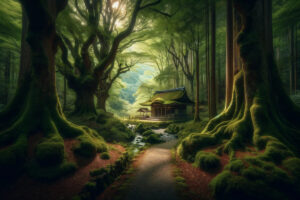
5 Off-The-Beaten-Path Locations: Unveiling Kyoto Prefecture’s Best-Kept Secrets

10 Mystical Kyoto Temples You Need To Experience

10 Hidden Gems: Discover The Most Authentic Sake Breweries In Kyoto

10 Must-See Museums In Kyoto For Cultural Enthusiasts
Leave a comment cancel reply.
Your email address will not be published. Required fields are marked *
Save my name, email, and website in this browser for the next time I comment.
AAB Kyoto, under the guidance of its founder, has become a beacon for exploring the hidden treasures of Japan’s ancient capital. With a mission to unveil Kyoto’s best-kept secrets, the organization is dedicated to sharing lesser-known wonders and off-the-beaten-path gems with visitors and locals alike.
- Amazon Disclaimer
- Accessibility Statement
- Legal Disclaimer
- Privacy Policy
- Terms and Conditions
- Accomodation
- Food and Dining
- Transportation
- 337-1256, Daigo Sannokiri, Fushimi-ku Kyoto-shi, Kyoto
- +8116-057-9658
- [email protected]
© 2024 AABKYOTO | All Right Reserved

The 48 best hiking trails in Kyoto
Navigate forward to interact with the calendar and select a date. Press the question mark key to get the keyboard shortcuts for changing dates.
Navigate backward to interact with the calendar and select a date. Press the question mark key to get the keyboard shortcuts for changing dates.

Attractions

1 Mount Hiei
2 Mount Atago

3 Mount Daimonji
4 arashiyama, 5 daigo-ji temple, 6 ohara michi, 7 fushimi inari taisha, 8 mount kurama, 9 kurama - asty kyoto, 10 kiyotaki, 11 kibune river, 12 shogunzuka mound, 13 sanzen-in temple, 14 kifune shrine, 15 kuramadera temple, 16 jakkō-in temple, 17 lake biwa canal, 18 higashiyama ward, 19 summit of mt. inari, 20 ninose station, 21 shizuhara river, 22 nishigamo bonoushirocho, 24 tetsugaku no michi, 25 nanzen-ji temple, 26 tōfuku-ji temple, 27 nidec kyoto tower, 28 kamo river, 29 higashi hongan-ji temple, 30 enryaku-ji temple, 31 saihōji (kokedera) temple, 32 hiyoshi taisha, 33 kyoto sento imperial palace, 34 michigan cruise (otsu port / lake biwa kisen), 35 garden museum hiei, 36 kyoto station, 37 fushimi-momoyama-jō castle, 39 togetsukyo bridge, 40 saga toriimoto preserved street, 41 daimonjiyama, 42 hozukyō station, 43 tsurugi-jinja shrine, 44 shūgakuin station, 45 kami-katsura station, 46 ebumi shrine, 47 arashiyama, 48 kyoto trail station 6 higashiyama, top searches in kyoto, popular road trips from kyoto, what's the weather like in kyoto.
It depends on when you visit! We've compiled data from NASA on what the weather is like in Kyoto for each month of the year: see the links below for more information.
- Weather in Kyoto in January
- Weather in Kyoto in February
- Weather in Kyoto in March
- Weather in Kyoto in April
- Weather in Kyoto in May
- Weather in Kyoto in June
- Weather in Kyoto in July
- Weather in Kyoto in August
- Weather in Kyoto in September
- Weather in Kyoto in October
- Weather in Kyoto in November
- Weather in Kyoto in December
All road trips from Kyoto
- Kyoto to Tokyo drive
- Kyoto to Nagoya drive
- Kyoto to Kanazawa drive
- Kyoto to Seoul drive
- Kyoto to Hiroshima drive
- Kyoto to Beijing drive
- Kyoto to Hakone-machi drive
- Kyoto to Himeji drive
- Kyoto to Ise drive
- Kyoto to Fukuoka drive
- Kyoto to Takayama drive
- Kyoto to Kamakura drive
- Kyoto to Busan drive
- Kyoto to Okayama drive
- Kyoto to Sapporo drive
- Kyoto to Nagasaki drive
- Kyoto to Matsumoto drive
- Kyoto to Nikko drive
- Kyoto to Takamatsu drive
- Kyoto to Taito drive
- Kyoto to Hamamatsu drive
- Kyoto to Fujikawaguchiko-machi drive
- Kyoto to Koya-cho drive
- Kyoto to Matsuyama drive
- Kyoto to Shirahama-cho drive
- Kyoto to Kochi drive
- Kyoto to Matsue drive
- Kyoto to Shizuoka drive
- Kyoto to Tottori drive
- Kyoto to Hakodate drive
Explore nearby places
- Kumiyama-cho
- Oyamazaki-cho
- Shimamoto-cho
- Ujitawara-cho
- Shijonawate
All related maps of Kyoto
- Map of Kyoto
- Map of Muko
- Map of Nagaokakyo
- Map of Otsu
- Map of Kumiyama-cho
- Map of Oyamazaki-cho
- Map of Yawata
- Map of Shimamoto-cho
- Map of Kameoka
- Map of Joyo
- Map of Kusatsu
- Map of Ujitawara-cho
- Map of Kyotanabe
- Map of Moriyama
- Map of Takatsuki
- Map of Ritto
- Map of Ide-cho
- Map of Hirakata
- Map of Yasu
- Map of Katano
- Map of Toyono-cho
- Map of Wazuka-cho
- Map of Ibaraki
- Map of Seika-cho
- Map of Nantan
- Map of Neyagawa
- Map of Settsu
- Map of Kizugawa
- Map of Shijonawate
- Map of Nose-cho
Kyoto throughout the year
- Kyoto in January
- Kyoto in February
- Kyoto in March
- Kyoto in April
- Kyoto in May
- Kyoto in June
- Kyoto in July
- Kyoto in August
- Kyoto in September
- Kyoto in October
- Kyoto in November
- Kyoto in December
Looking for day-by-day itineraries in Kyoto?
Get inspired for your trip to Kyoto with our curated itineraries that are jam-packed with popular attractions everyday! Check them out here:
- 1-Day Kyoto Itinerary
- 2-Day Kyoto Itinerary
- 3-Day Kyoto Itinerary
- 4-Day Kyoto Itinerary
- 5-Day Kyoto Itinerary
Best hiking trails in nearby cities
- The best hiking trails in Kanazawa
- The best hiking trails in Otsu
Best attractions in nearby cities
- Top things to do and attractions in Osaka
- Top things to do and attractions in Nagoya
- Top things to do and attractions in Kobe
- Top things to do and attractions in Otsu
- Top things to do and attractions in Nishinomiya
- Top things to do and attractions in Koka
- Top things to do and attractions in Ise
- Top things to do and attractions in Takatsuki
- Top things to do and attractions in Uji
- Top things to do and attractions in Omihachiman
- Top things to do and attractions in Hirakata
- Top things to do and attractions in Moriyama
- Top things to do and attractions in Toyonaka
- Top things to do and attractions in Hikone
- Top things to do and attractions in Takarazuka
- Top things to do and attractions in Itami
- Top things to do and attractions in Kashihara
- Top things to do and attractions in Ikeda
- Top things to do and attractions in Mino
- Top things to do and attractions in Ikaruga-cho
- Top things to do and attractions in Namba
- Top things to do and attractions in Nippombashi
Best restaurants in nearby cities
- Where to eat: the best restaurants in Nagoya
- Where to eat: the best restaurants in Kobe
- Where to eat: the best restaurants in Otsu
- Where to eat: the best restaurants in Koka
- Where to eat: the best restaurants in Ise
- Where to eat: the best restaurants in Takatsuki
- Where to eat: the best restaurants in Uji
- Where to eat: the best restaurants in Omihachiman
- Where to eat: the best restaurants in Moriyama
- Where to eat: the best restaurants in Suita
- Where to eat: the best restaurants in Toyonaka
- Where to eat: the best restaurants in Itami
- Where to eat: the best restaurants in Yawata
- Where to eat: the best restaurants in Kashihara
- Where to eat: the best restaurants in Ikeda
- Where to eat: the best restaurants in Mino
- Where to eat: the best restaurants in Nippombashi

- Itinerary + map in one view
- Live collaboration
- Auto-import hotels and reservations
- Optimize your route
- Offline access on mobile
- See time and distance between all your places

Exploring Kyoto & Beyond: The Ultimate Walking Tour Guide
Home » Exploring Kyoto & Beyond: The Ultimate Walking Tour Guide
- March 28, 2024
Kyoto, steeped in history and brimming with serene temples, gardens and geisha districts, is a magnet for travelers worldwide. While navigating a city of 1.4 million people might seem overwhelming, it’s actually one of the easiest cities to explore (thanks to excellent public transportation). We spent 5 nights in Kyoto and were able to explore its neighborhoods and nearby towns using trains, buses and our own reliable feet.

This guide will tell you all you need to know to plan your own walking-focused trip to Kyoto, including transportation tips, best day trips to neighboring towns, day hikes, and our recommended walking tour operators.
Table of Contents

Transportation in & around Kyoto
The transportation system in Japan is one of the best in the world, especially in the Kansai region where Kyoto resides. Trains connect every major city and town, subways connect inter-city locations and buses connect everything else. Inside Kyoto was super helpful when we were planning our trip and it covers all aspects of travel to Japan, but here’s a quick summary of how we explored Kyoto and neighboring towns:
Get an ICOCA card
Assuming you fly into Osaka (like we did), go directly to the Japan Rail (JR) station at the airport and look for a kiosk selling ICOCA cards. Add however much you think you’ll need (machines take CASH ONLY). We estimated how much we’d need BEFORE our trip, knowing we’d be tired and overwhelmed upon arrival. We did NOT purchase train tickets in advance as we wanted flexibility to hop on the most convenient route. We used several trains that were not JR lines, so it didn’t make sense to get a JR Pass.
Lesson-learned: When swiping your ICOCA card only do it once, then quickly walk through the gate. If you swipe several times the card will lock and you will need to visit a JR office to get it fixed. We discovered this the hard way.
Pre-book JR Shinkansen Trains
If arriving from Tokyo, it’s advised to purchase high-speed train tickets in advance. This guide offers excellent advice for making train reservations.
Get Internet
You’ll need data to navigate Kyoto and while free WiFi is easy to find in Japan you’ll want it always accessible. We use GoogleFi since we travel so much but you have several options for internet in Japan, including renting a WiFi hotspot, purchasing an eSim or international data plan.
Use Google Maps
Some blogs suggest using Jorudan (Japan’s transit site) but we found Google Maps to be much easier and just as accurate. In case of data being unavailable, look up your transit routes for the day and screenshot them while you have WiFi.
Prepare for the Buses
Trains announce in English but buses do not, so prepare ahead of time for bus rides:
- Look up your route while you have internet and screenshot the detailed bus stops so you have an idea when your stop is coming up. Not all of the buses had digital signs showing the stops, so you have to pay attention.
- Screenshot the cost, this is much easier than trying to figure it out on the bus when you’re watching for stops.
- Have coins. The ICOCA card worked for every bus in and near Kyoto, but there’s always a chance machines can malfunction and the more rural buses don’t always take the card.
- When you get on the bus, take a ticket (you’ll see it as soon as you step in). Give this ticket to the driver when you depart. If not using ICOCA you’ll need to have exact change ready.
- Sit towards the front if possible.

The GETTING HERE instructions below are meant as a guide. Transit routes change, especially during high season when additional routes may be added, so ALWAYS CHECK CURRENT ROUTES.
Explore Kyoto's Neighborhoods on Foot
Kyoto can be divided into the following neighborhoods, each of which can be explored on foot in a day (or less) and easily accessible by public transportation. For this guide, we’re going to assume you are staying somewhere near Kyoto Station as it’s the most convenient location for visiting multiple places within and outside of Kyoto. If you are here for a longer stay, consider renting an Airbnb anywhere in Higashiyama near a subway/train station.
Southeast Kyoto
This is the easiest neighborhood to start with as it’s closest to Kyoto Station. It’s also home to the popular Fushimi-Inari Taisha. If you start early enough, you could combine this with a half day of walking in Uji (which is reached using the same train). If you want to escape cities, consider an off-the-beaten-path walk to Mt. Oiwa .
Getting here: JR Nara Line from Kyoto Station to Tofukuji Station (10mins)
Highlights: Tofuku-ji, Fushimi-Inari Taisha
RECOMMENDED TOURS
Chris Rowthorn Tofuku-ji Temple to Fushimi-Inari , 4hr guided ($266 per group)
Japan Tour Adventures Fushimi , 5hr guided ($80 per person)

Southern Higashiyama
Temples, shopping and people-watching kimono wearers are the top attractions in Kyoto’s southern Higashiyama neighborhood. It’s a fun place to walk and can take a full day if you explore all the major temples, from Kiyomizu-dera to Shoren-in.
Getting here: City Bus from Kyoto Station to Kiyomizumichi (20mins)
Highlights: Kiyomizu-dera, shopping & people-watching on Ninnenzaka & Sannenzaka Streets, Kodai-ji, Shoren-in Temple, Yasaka Shrine & Maruyama Park, Chion-in Temple, Yūzen-en garden
RECOMMENDED TOUR
Chris Rowthorn Classic Southern Higashiyama , 4hr guided ($266 per group)

Geisha Districts & Nishiki
The geisha districts are in southern Higashiyama but we list it separately because we recommend saving this section for an evening stroll. The neighborhoods of Gion and Pontocho are popular for geisha sightings, but be careful to follow the rules here. Kyoto is actively trying to protect local residents by charging fines if you take photos of geisha and a new rule preventing access to private alleyways. Best advice, get a trustworthy guide who follows the rules and leave the phone in your pocket.
Getting here: Subway Karasuma Line from Kyoto Station to Shijō Station (10mins)
Highlights: Nishiki Market, Hanamikoji Street, Kamo River, food hall underneath Takashiymaya department store, Gion Shinbashi Bridge, Pontocho Park
Pinpoint Traveler Kyoto Food Tour , 3hrs guided ($84 per person)

Northern Higashiyama
There is a LOT to see in this part of Kyoto so plan an entire day. The Philosopher’s Path and temples around Nanzen-ji and Eikandō are the primary draw, but don’t overlook the canal walking and hydroelectric facilities which are equally fascinating.
Getting here: Subway Karasuma Line & Tozai Line to Keage Station (20mins)
Highlights: Keage Incline & Tunnel, Philosopher’s Path, Konchi-in garden, Tenju-an garden, Nanzen-ji complex, Lake Biwa Canal, Garyūrō Spiral Staircase, Eikandō Temple, Ōtoyo Shrine, Kōun-ji, Nishida Kitaro’s Poem Stone, Hōnen-in Temple, Higashiyama Jisho-ji, Ginkaku-ji
Chris Rowthorn’s Northern Higashiyama Highlights , 4hrs guided ($266 per group)

Further north you’ll find Mt. Hiei , where Kyoto residents escape to the mountains. Both a hiker’s paradise and spiritual destination, exploring the trails and Enryakuji Temple is worth a full day.
Getting here: several options but all require at least one train/bus + cable car (1-1.5hrs)
Highlights: hiking Mt. Hiei, mountains and wildlife, Enryaku-ji
Kyoto Guided Walks Mt. Hiei , 6hrs guided ($264 per group)

Central Kyoto
Sites are more spread out in central Kyoto so be prepared for a lot of walking or some bus hopping. This is the one neighborhood we would skip if you’re short on time. If castles are what you seek, we recommend leaving the city for Himeji Castle (1hr by high speed train).
Getting here: City Bus 50 or 9 from Kyoto Station to Nijojo-mae (20mins)
Highlights: Nijo Castle & Ninomaru-Goten Palace, Kyoto Imperial Palace & gardens, Sento Gosho, Rozan-ji, Shimogamo-Jinja, Kyoto Botanical Gardens
GPSMyCity Imperial Kyoto , self-guided (free)

Northwest Kyoto
There aren’t as many attractions in Kyoto’s northwest neighborhood but it is where you will find the iconic Kinkaku-ji , also known as Golden Pavilion . Several temples reside nearby, many with quiet gardens, so prepare to walk a lot! You can also make a full day of it and visit Saimyō-ji temple complex which is beautifully tucked away in the mountains.
Getting here: City Bus 26 from Kyoto Station to Omuro Ninnaji (40mins); City Bus 8 to reach Saimyō-ji (30mins)
Highlights: Kinkaku-ji (Golden Pavilion), Ryoan-ji, Daitoku-ji, Ninna-ji, Haradani Garden
Kyoto Guided Walks Northern Kyoto , 5hrs guided ($198 per group)

The Bamboo Forest may be one of the most crowded tourist destinations in Kyoto, but this area offers plenty of space to walk with views of a river, quiet forests and plenty of temples. Even better, avoid the crowds by walking through the more serene bamboo forest at Adashino Nenbutsu-ji Temple . We suggest planning a full day, as it takes a bit of work to get here, and adding a ride on the Sagano Romantic Train .
Getting here: Train to Arashiyama Station and taxi to Otagi Nenbutsuji Temple
Highlights: Adashino Nenbutsu-ji bamboo forest, Togetsukyo Bridge, Saimyō-ji, Otagi Nenbutsu-ji, Tenyru-ji & garden, Okochi Sanso Villa, Sagano Train, Horen-ji
Delightful Travel Notes Arashiyama , self-guided (free)
Chris Rowthorn’s Arashiyama , 4hrs guided ($266 per group)
Kyoto Guided Walks Arashiyama , 8hrs guided ($330 per group)

Best Day Trips from Kyoto for Walking
Unlike Kyoto, where temples and gardens are more spread out and surrounded by urban sprawl, Nara packs everything into one gigantic green space. Most tourists only visit for the day but you need at least 2 days. We spent one night in Nara and I would have preferred to stay several nights – it’s truly a special place. Walk the Yamanobe-no-michi Trail if you have time. Since Nara Park is easy to navigate on your own, we’ve focused on food walking tours to give you a more immersive experience.
Getting here: Kintetsu Limited Express from Kyoto Station to Kintetsu-Nara Station; do NOT take a JR train as their station is much further and you’ll end up walking more than necessary
Highlights: Nara Park (museums, deer, temples & shrines, old forest), artisan shops, Naramachi, hike Mt. Wakakusa, Isuien and Yoshikien Gardens
NaraWalk Old Town Stroll , 2hrs guided ($20 per person + $3.30 sake tasting)
Japan Adventure Nara Beer/Sake/Food , 3.5hrs guided ($100 per person)
Fermentation Homestay , 3 days ($330 per person, all-inclusive + time to walk)

It’s unfathomable to me that more tour companies aren’t including Uji in their itineraries, but I’m also glad because this beautiful river town remains unblemished by mass tourism. Known for its matcha tea and excellent food shops, as well as the gorgeous Byodo-in Temple , Uji is a perfect day trip for walking and food tasting. See why we loved Uji so much.
Getting here: JR Nara Line from Kyoto Station to Uji Station (20mins)
Highlights: Byodo-in & Museum, Uji River, Tale of Genji statues, matcha tea shops & pastries, Daikichiyama Observation Deck, Ujikami Shrine
Journey through Southern Kyoto , self-guided tour of Uji and other tea towns (free)
Pinpoint Traveler Uji Tea Tour , 4hrs guided ($60 per person)

Kurama & Kibune
Look northeast of Kyoto and you’ll find the villages of Kurama and Kibune, which are connected by walking paths leading to Kurama-dera Temple . This is a fantastic way to explore Kyoto’s mountains, villages and beautiful shrines without having to go too far. It started snowing the day we planned to visit so I changed our plans (kinda regret it).
Getting here: several options which require a train + bus (1hr)
Highlights: Mount Kurama, Kurama-dera Temple, Kifune Shrine, lunch on the Kibune River
Inside Kyoto Kurama to Kibune , 3hrs self-guided (free)
Chris Rowthorn’s Kurama to Kibune , 4hrs guided ($266 per group)

Hiking Trails near Kyoto
If you want to escape the city entirely, it’s easy to do because Kyoto is surrounded by mountains that offer forested paths and shrines. Here are the favorite hiking trails near Kyoto, recommended by local guides and outdoor enthusiasts.
Lake Biwa to Kyoto
7mi (11km), one-way
Start with a train to Miidera Station then walk back towards Kyoto, following the Lake Biwa Canal until you reach Keage Station. This route can be combined with the Philosopher’s Path for a long day of walking. You can also shorten the walk by ending at Misasagi Station.
Takao to Hozukyo
7mi (11km), one-way (return by train)
A day hiking along a river, beginning in the village of Takao and stopping to enjoy bridges, a waterfall and a temple where you can throw kawarakenage (clay discs representing evil juju) into the river.
Mt. Daimonji-yama
1mi (1.5km), roundtrip
Short climb up to Mt. Daimonji-yama from Ginkaku-ji Temple. If you’re planning to visit this temple, save time to add this extra hike.

Long Distance Trails near Kyoto
The Kumano Kodo takes center stage for long-distance hikes in this region, and we’ll cover it in a separate post, but there are some other alternatives.
Kyoto Trail
52mi (84km), one-way
Sometimes called the Kyoto Circuit , this is a network of trails that connect mountain and forest paths surrounding the city from the west, north and east. It’s not a true loop, but if you want a long-distance loop hike that exists a little further northwest in the Keihoku region. Both trails are managed by the Kyoto Trail Guide Association .
62mi (100km) 9-day inn to inn hike
This multi-day hike connects Oe to Tateiwa through the mountains northwest of Kyoto and ending with UNESCO San’in Kaigan Geopark on the Sea of Japan. Designed by Adventure Travel Kyoto to highlight the oni (malevolent spirit) legends and statues of this region, the Oni Trail can be walked inn to inn. NOTE: THIS IS A NEWLY DEVELOPED TRAIL AND WE ARE WAITING FOR CONFIRMED DETAILS ON HOW TO WALK THIS ROUTE. WILL UPDATE AS SOON AS WE HEAR BACK FROM THEM.

Preferred Walking Tour Companies
While you don’t need a tour guide to explore Kyoto, there is much value to be had in hiring a local guide for at least 1 day. We suggest booking a tour for your first or second day and choose one that covers an area for which you would like a deeper knowledge.
Chris Rowthorn Tours
Hands-down our favorite selection of walking tours in Kyoto and Nara. Rowthorn is the creator of InsideKyoto.com and his tours focus on covering each neighborhood on a deeper level (instead of cramming multiple areas into one day). Great choice if you’ll be in Kyoto for several days. Tours range from $233 (2hr) to $499 (8hr) per group.
Kyoto Guided Walks
We equally love Kyoto Guided Walks because they offer full day tours focused on specific neighborhoods, often taking you away from the crowds for a more local experience. Their tours incorporate vegetarian options and visiting with local shopkeepers, which also makes them a stellar choice. Tours range from $132 (2hr) to $330 (8hr) per group.
Japan Tour Adventures
Excellent choice for tours in Nara, plus they provide walking tours for the Fushimi neighborhood and Arashiyama. Tours start at $80 per person.
Japan Guide Agency
For a customized day of walking that’s supported by a private driver, JGA is a good choice. They offer a 6-hr self-guided tour with an English speaking driver ($466 up to 3 people) as well as walking tours focused on gardens.
Pinpoint Traveler
One of the few offering day tours to Uji (for now) plus an evening food tour of Gion/Pontocho and day tours covering Higashiyama and Arashiyama. We took their Gion tour and loved it! Tours start at $48 per person.
Rediscover Tours
US based tour company with an office in Japan that offers multi-day private and small group travel all over Japan. Look at their destinations to see a sample of what’s possible in the Kansai region or look at their 7-day Rural Cultural Tour on Responsible Travel. Good choice for customized trip or add-on to extend traditional walking tours such as the Kumano or Shikoku pilgrimages. Prices range $400-$650 per person per day (midrange) to $1300+ per person per day (luxury).

Recommended Resources
- Inside Kyoto : I dare you to find a better resource for travel to Japan! Everything you need, with expert and updated advice, is on this site.
- Lonely Planet Best Day Hikes Japan : best English hiking guide still in print (as of 2024)
- Willie Walks : If you want inspiration to hike mountains, here’s a guy who set out to hike 100 mountains in Japan – and succeeded! He has an entire series of 100 Mountains of Kyoto on his YouTube channel.
We walked many of the places mentioned in this guide and you’ll find our personal stories and photos at Exploring Japan, the Slow Way and Planning a Trip to Japan’s Kansai Region . Stay tuned for our comprehensive guide for walking the Kumano Kodo.
Recent post
Best food vacations for walking enthusiasts, cruises for hikers: yes, they do exist, hiking trails & walking holidays of donegal, start your search.
Feeling inspired? Search our extensive reviews to find the best walking holiday company for you.
New to walking holidays?
Start here to learn about walking holidays – what they are, inn to inn hiking vs. center-based, how they differ from hiking, how to find the best company and what to pack for a walking holiday.

Quick Links
Trips to Walkabout is an Independent Affiliate of A.S.A.P. Cruises, Inc., Florida Seller of Travel Ref. No. ST15578, California Seller of Travel No. 2090937-40, Washington UBID No. 603189022, Iowa Registered Agency No. 1202.
Privacy Overview
Looking Through the Windows of History
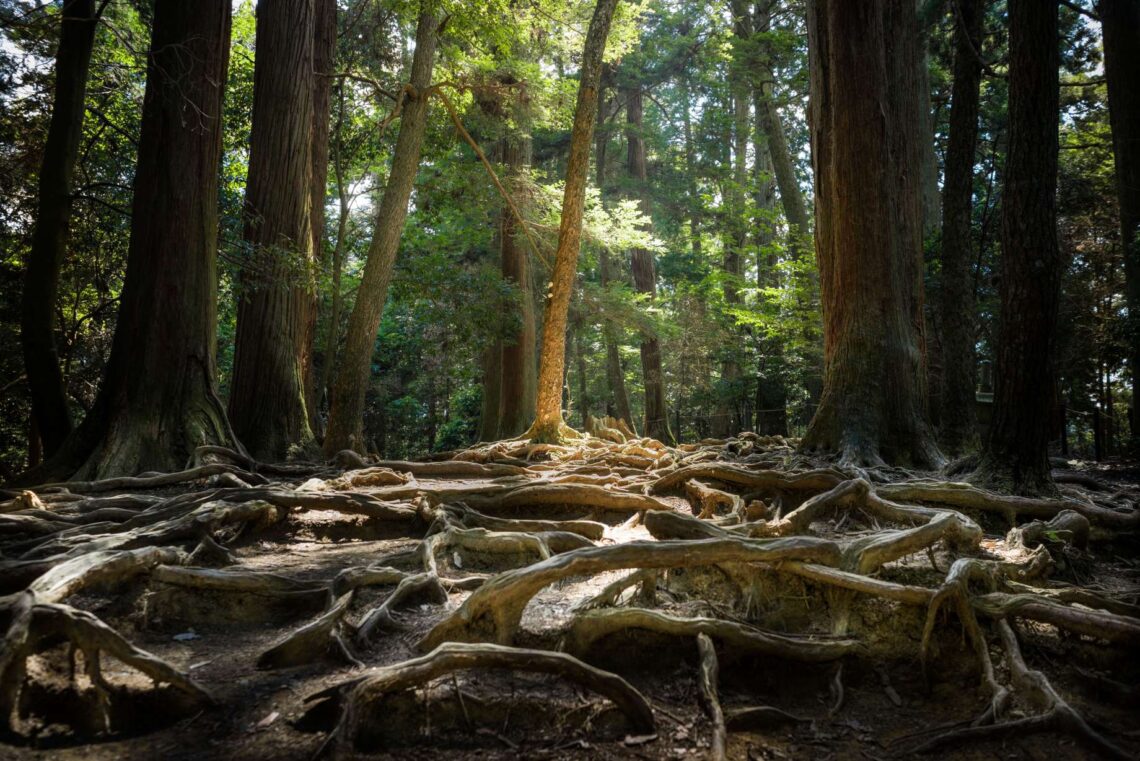
Kurama to Kibune Hike – A Complete Day-Trip Guide from Kyoto
An enriching experience not to be missed is to visit the villages of Kurama (鞍馬) and Kibune (木船) up north of Kyoto; and part of the experience is the Kurama to Kibune hike itself. The hike itself connects Kurama (known for its temple with esoteric religious belief) and the picturesque Kibune which is famous for its shrine and high-end restaurants.
Along the hike, one will go through the holy mountains of the area that gave birth to Reiki therapy (霊気), filled with towering cedar trees, little rustic shrines and a combination of dirt trails and paved paths. With that expectation in mind, let’s go deeper into this unique hiking experience.
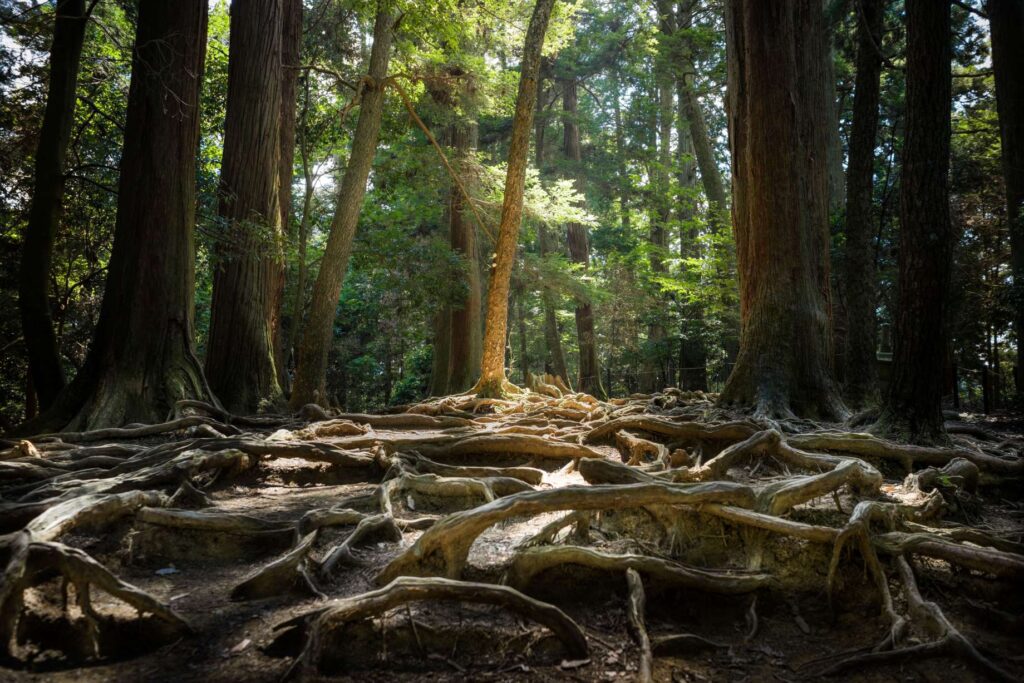
Table of Contents
Kurama to Kibune Hike - Some Basic Info Before You Go
Firstly, the hike from Kurama to Kibune itself is considered fairly easy by hiking standards. My wife and I did the hike during autumn; and even though we are not seasoned hikers, we managed to hike between both villages without getting ourselves exhausted. Nevertheless since this is still a hike, here are some tips to take note of before you begin:
- Distance: Approximately 5km
- Duration: 2 hours for seasoned hikers (add 1 hour extra if you love taking photos like us)
- Best time to start: Anytime from 10 am to 1 pm (give yourself sufficient time to explore both villages)
- Not advisable for: Families with toddlers or babies and also those that require strollers, pregnant women as well as those with walking disabilities
- What to bring: Comfortable walking shoes, insect repellent, sunblock and sunglasses for sunny days, umbrella for rainy days, hiking stick if necessary, a phone with good camera and most importantly, water!
- Best time to hike: Any season is fine, but spring (Mar – Apr) and autumn (Oct- Nov) are preferred simply for the milder temperatures
- Familiarise yourself with the name Minamoto-no-Yoshitsune (源義経) as I will be spamming his name throughout the article given the his strong association with this area. See my trivia article here and also Wikipedia for more info.
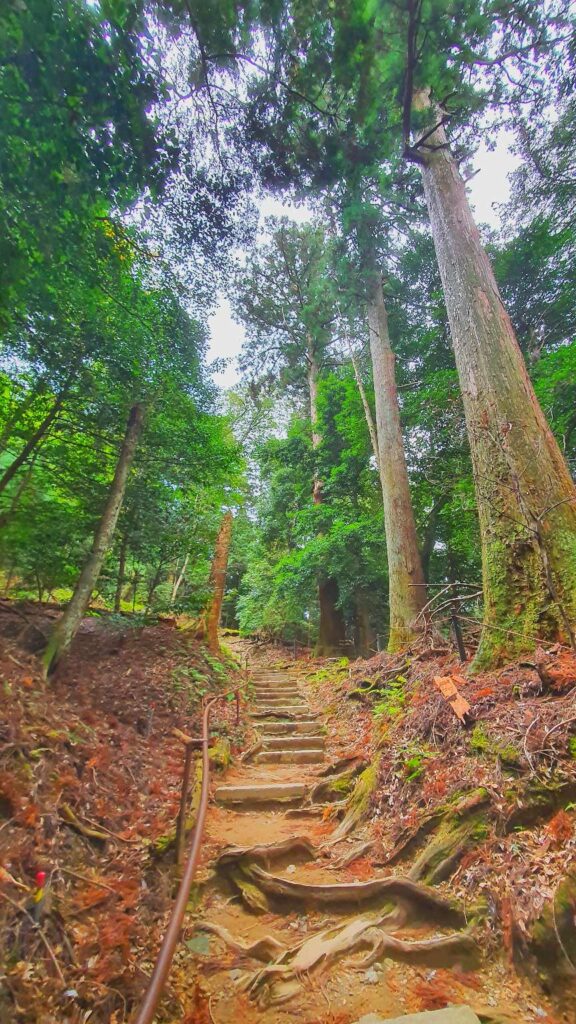
Also, here are some commonly asked questions and answers to them regarding the hike:
- Can I hike from from Kibune to Kurama instead? Yes, it is possible. See my separate section here for more info.
- Are there train services from both Kibune and Kurama? Yes, both villages are serviced by trains ( see here for more info ). Just make sure you have a rechargeable IC card (i.e. ICOCA, Suica, Pasmo and etc) or cash with you to pay for the train rides.
Now that we have the basic info out of the way, lets get into the actual hike itself.
Kurama to Kibune Hike - The Hike Itself
Hiking from Kurama to Kibune itself is an adventure, albeit a spiritual once that takes you across the sacred mountains of Kyoto. As the hike itself will take a few hours at least, it is best to attempt this early till mid-day as the path itself becomes dark towards the evening.

Here is a rough guide on what the path looks like from Google Maps (courtesy of Wanderlog); in which we will be going through 10 landmarks (numbered 1 – 10) throughout the course from Kurama to Kibune.
Our Starting Point at Kurama Dera Temple
Firstly, we begin our journey from Kurama Dera Temple (鞍馬寺) . Head to the left side of the temple’s main hall and there should be a path leading up towards the mountain as shown below next to a stone lantern.
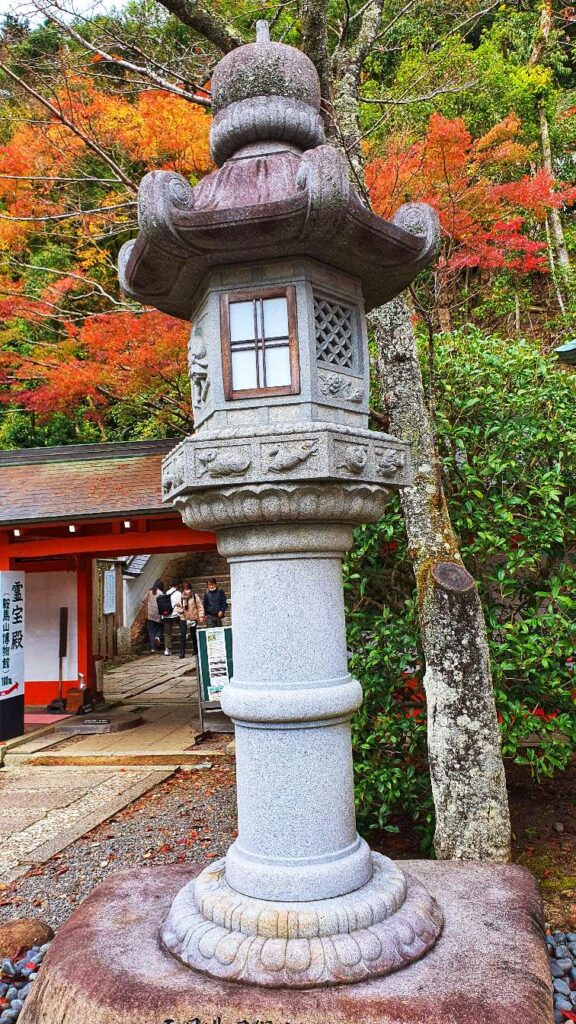
Walk up a few stairs and we will then encounter landmark no 1 which is the temple’s belfry. Fun fact; this is one of the few temples in Japan that allow you to sound the belfry. So feel free to do so and listen to the chimes of the bell resonating across the surrounding mountains.
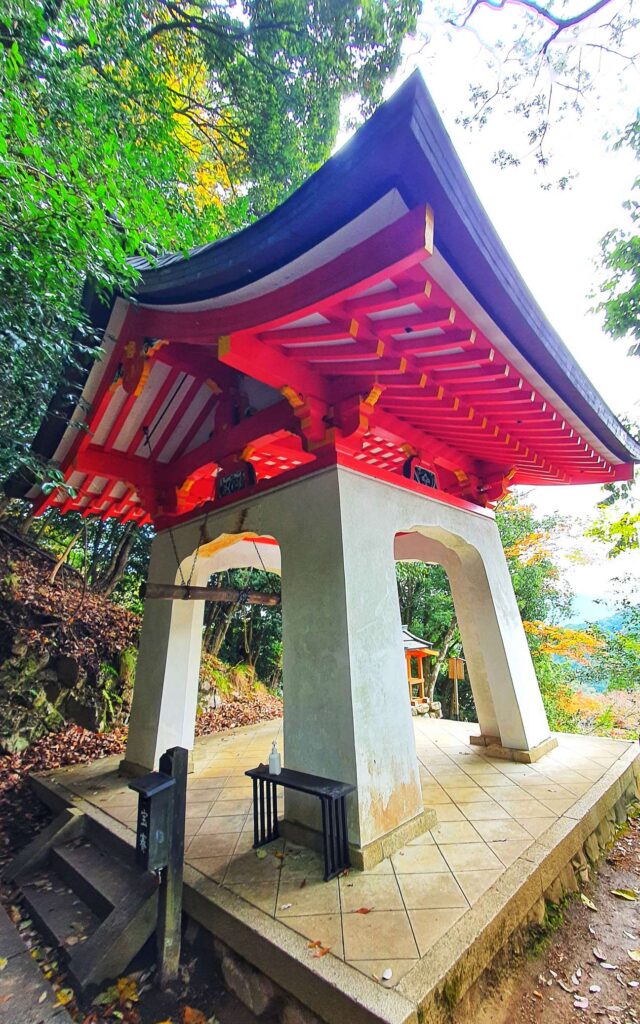
Continue on walking and we will pass by landmark no 2 which is the Kurama Mountain Museum or Reihoden (霊宝殿). This is a museum that exhibits the exclusive treasures of Kurama-dera. Entry is 200 Yen per person (100 Yen for child) and I would advise going for it only if you have sufficient time or if you are into Buddhist exhibits.
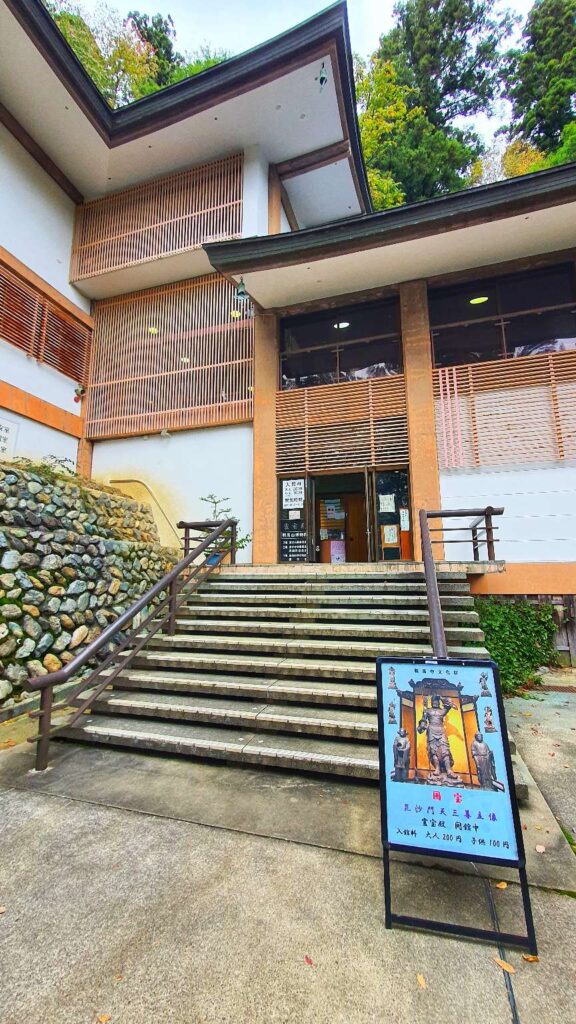
After some time, we will arrive landmark no 3 , a small temple called Byobuzaka-no-jizodo (屏風坂の地蔵堂). This little structure gets its name from the steep stairs in front of it that resembles an opened Japanese folding screen or Byobu (屏風); which was carved out of a monolith.
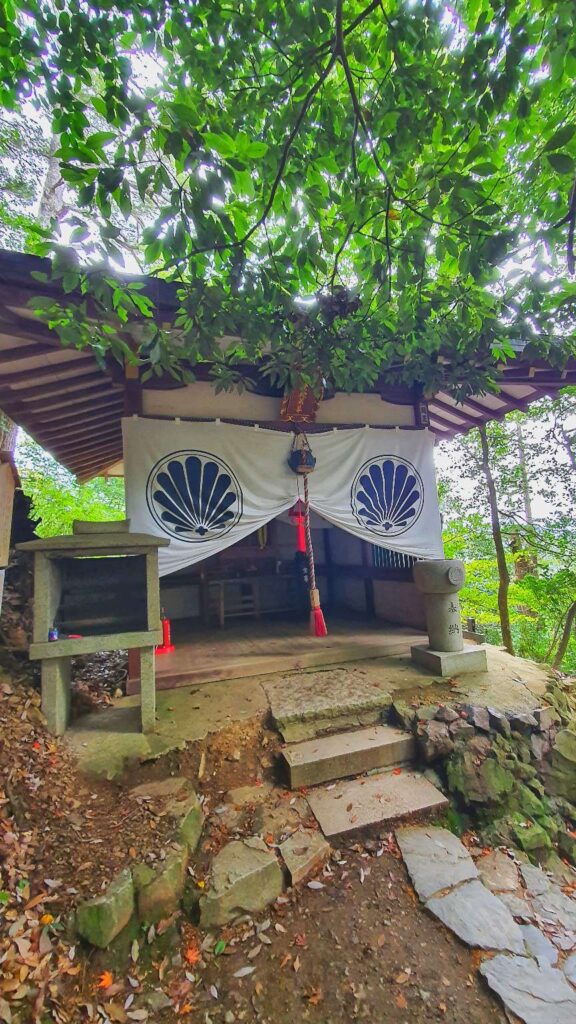
A Tale of Reiki and Minamoto Yoshitsune
From here onwards, we will be hiking through a series of steep staircases while being greeted by towering trees (thank god they have railings along these stairs). Following the stairs here leads to some beautiful forest scenery across the tall and lush trees of Kyoto’s mountains. Amidst the tranquility and the silence of the forest, one can hear only the occasional chirping of the birds. Honestly, this feels like an entirely new world when compared to the bustling tourist crowd of Kyoto.
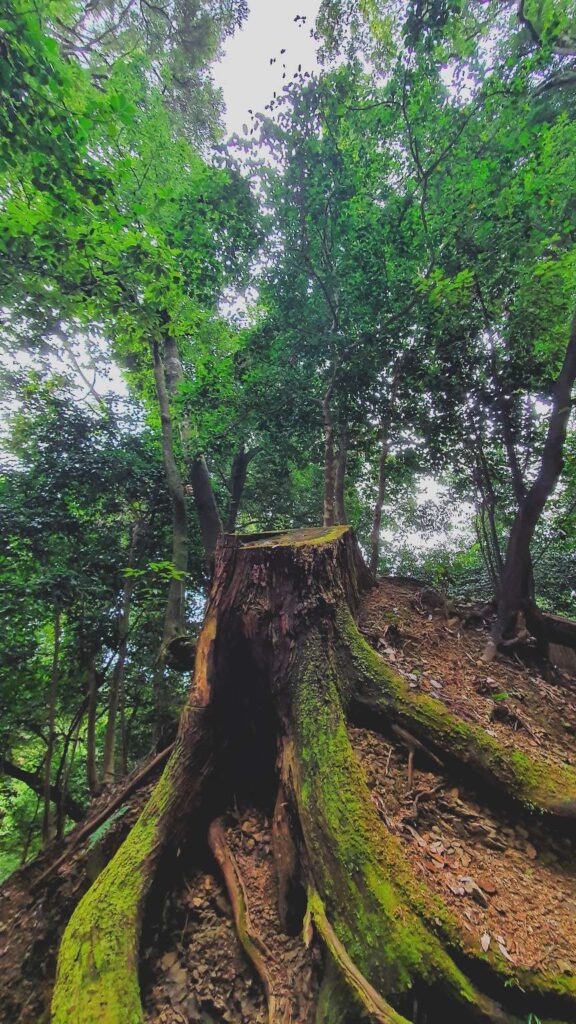
We then hit landmark no 4 , the Yoshitsune-ko Sekurabe-ishi (義経公背比べ石). According to legends, the general Minamoto-no-Yoshitsune (源義経) trained martial arts here with the tengus before he joined his brother, Minamoto-no-Yoritomo (源頼朝) to defeat the rivalling Taira clan.
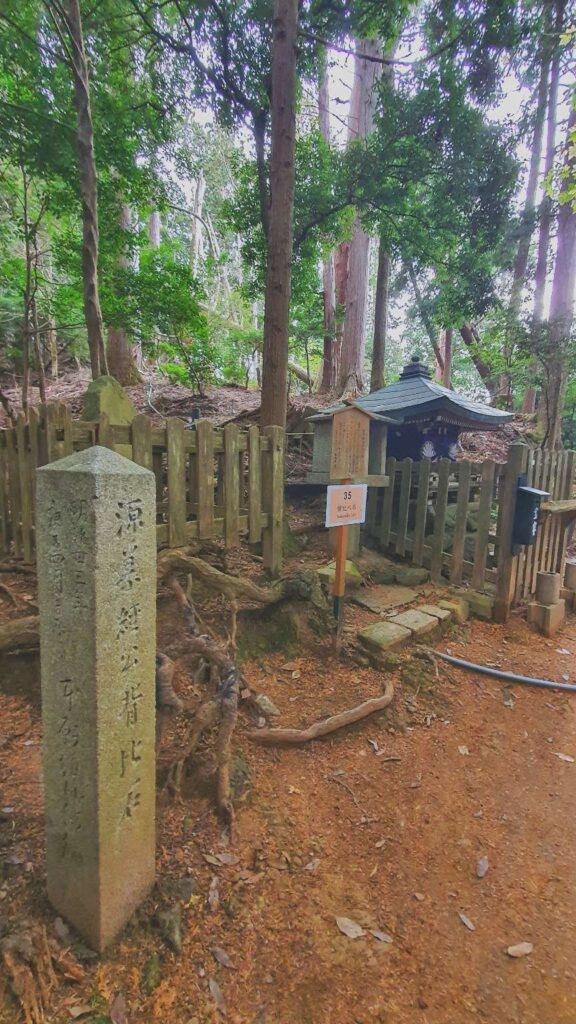
The event itself is called the Gempei War (源平合戦) and was the catalyst that lead to the founding of the Kamakura shogunate (鎌倉幕府), Japan’s first military government in AD 1185. Now back to this stone, the height of this stone was said to equal the height of Yoshitsune when he was 7 years old.
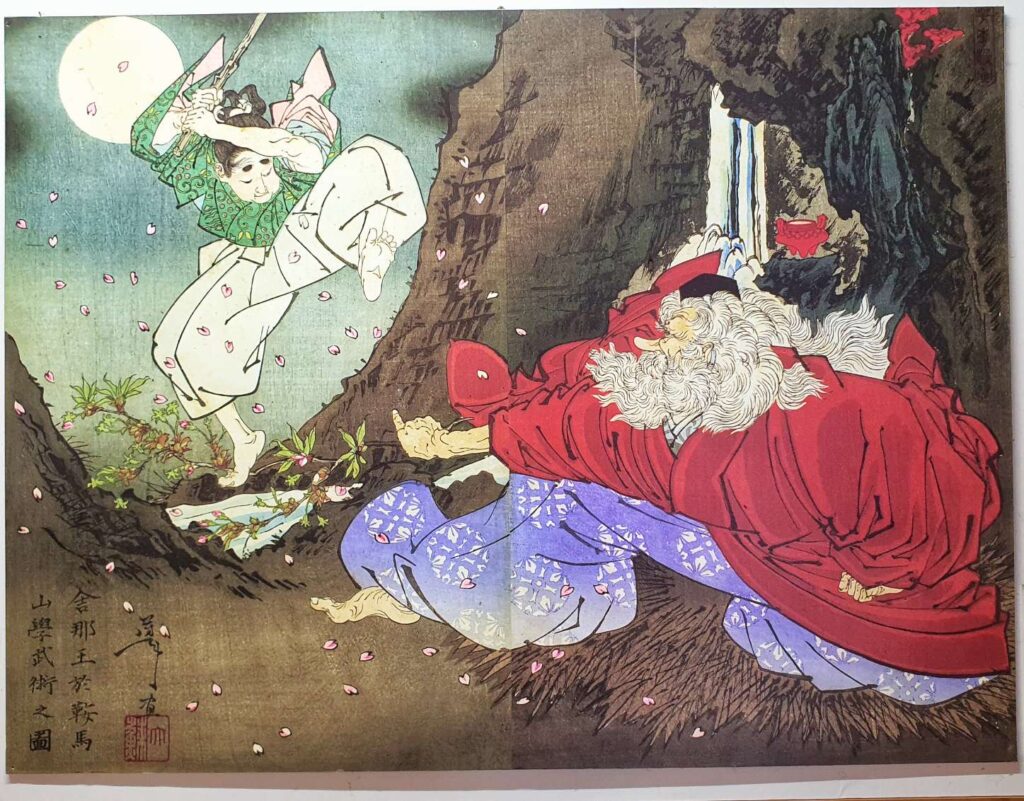
Also nearby the stone is landmark no 5 , our favourite landmark of the hike, the Root Path or the Ki-no-ne Michi (木の根道). The charm of this spot lies in the large tangled exposed roots of the ancient cedar trees. The roots themselves resemble a spiderweb; each of them tangling across each other to create wild patterns.
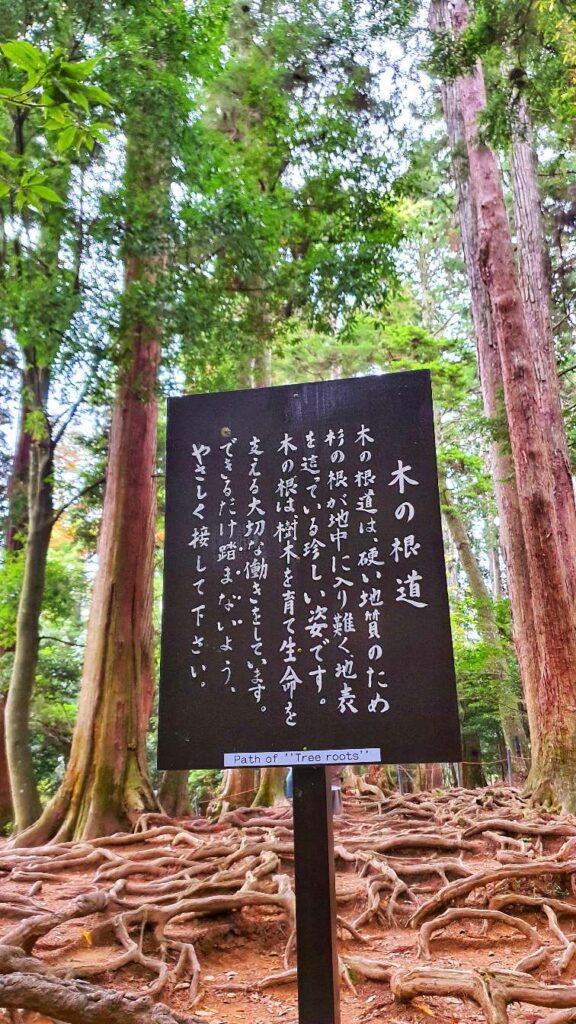
It’s like an eccentric artwork created by nature; yet also fascinating to admire at the time especially with the calm and soothing surrounding. Also, right next to it is landmark no 6 , the Osugi Gongen-sha (大杉権現社), the very spot where Reiki (霊気); a hand-to-hand energy healing technique was born. Given the soothing environment of the area, it is no surprise that this was the site of traning for Yoshitsune as well as the birthplace of Reiki.
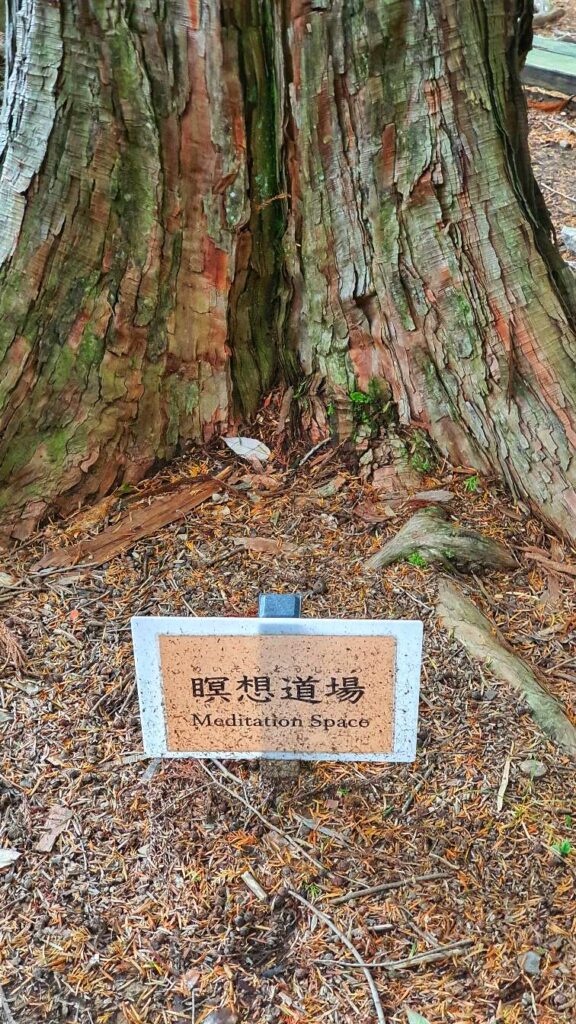
Continue Our Hike From Kurama to Kibune
Continue our Kurama to Kibune hike and we will soon encounter landmark no 7 . This is the Sojo-no-tani Fudo-do Temple (僧正谷不動堂). The hall itself is a place of worship for the Buddhist deity Fudo-myoo (不動明王) and the building itself is not historically significant. However, this spot is said to be the spot where Yoshitsune and the tengu Sōjōbō (僧正坊) first met before they began training according to legends.
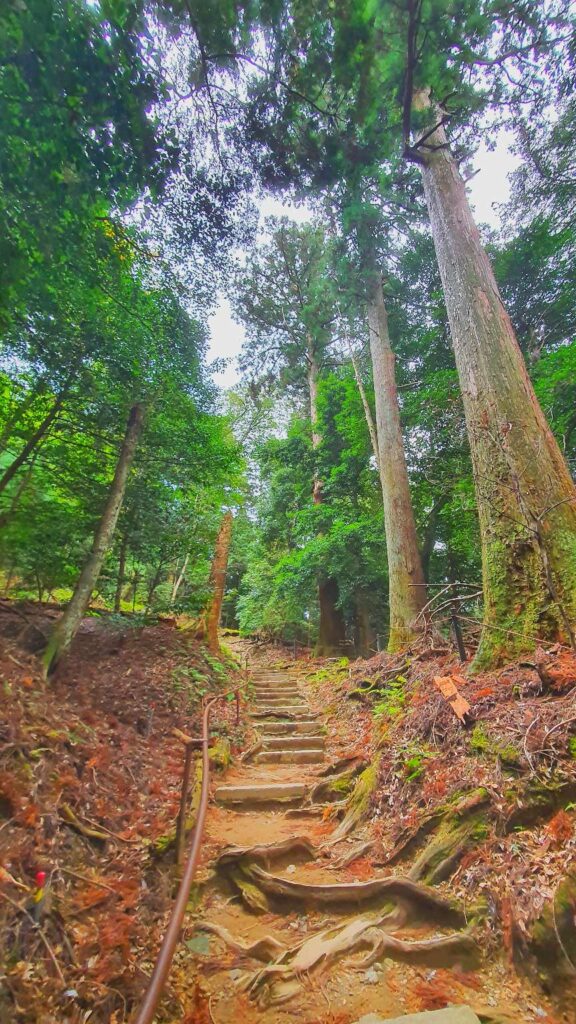
Just nearby the hall itself is landmark no 8 , a little shrine known as Yoshitsune-do (義経堂). It was said that after Yoshitune was betrayed by his allies and forced to commit suicide in Hiraizumi (平泉), his soul returned to Kurama. Locals then built this shrine to enshrine him as a local deity.

Continue walking down along several uneven stairs and we will arrive at landmark no 9 , Oku-no-In Maoden (奥の院魔王殿). This little shrine worships Maoson (魔王尊), a tengu-like deity that is believed to have arrived from Venus to Earth 6.5 million years ago via a meteorite. Maoson also happens to be a unique deity worshipped at Kurama-dera .
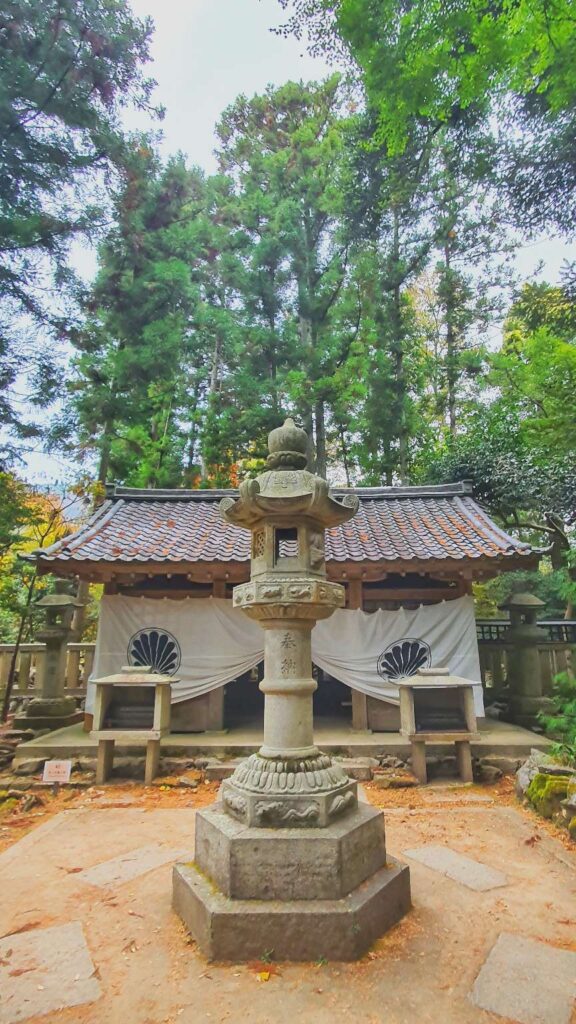
As we hike along the uneven stairs, be sure to take your time to admire the towering forest trees and enjoy the sheer tranquility of the area. In fact, I would say it is a luxury to enjoy such level of peacefulness especially in a city that is infamous for its overtourism.

After descending down the mountain, we will then encounter a river and a small gate ( landmark no 10 ) leading to a town. Ladies and gentlemen; congratulations, we have finally arrived at Kibune and also completed our hike from Kurama to Kibune.
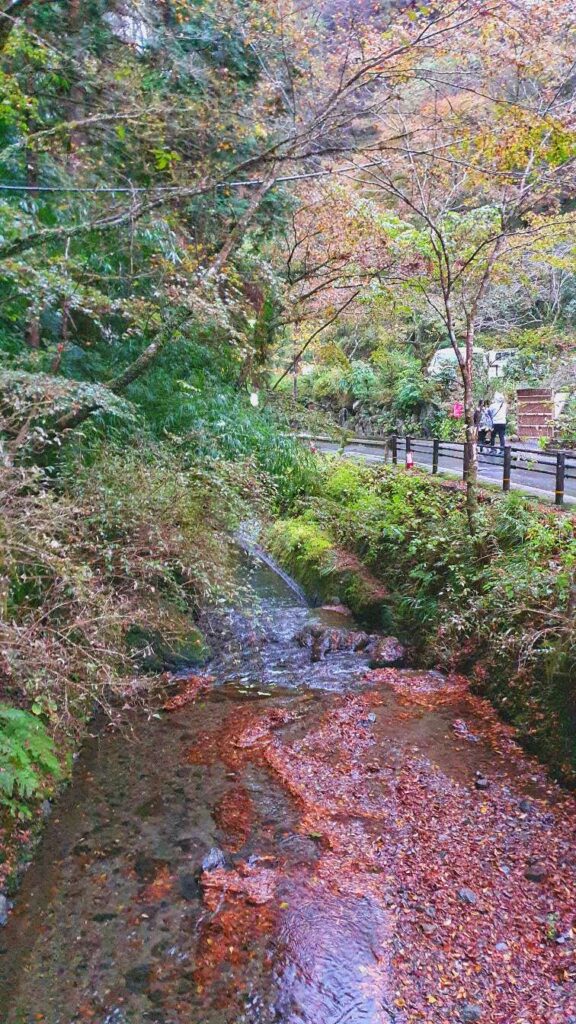
Can I Hike from Kibune to Kurama?
Yes, it is also possible to hike from Kibune to Kurama. Do note however that Kurama-dera opens until 4pm; whereas Kibune’s main attraction, Kifune Shrine (貴船神社) opens until 6pm. Moreover, Kifune has a lot more restaurants that are open for dinner; making it a better destination to visit in the evening. Be sure to subscribe as I will cover more about the quaint village of Kibune and its charming shrine in the future.
Loving the content here?
Subscribe and get your free hidden gems in Japan bucket list here.

Where Do I Start?
- If you plan to start from Kurama : Get to Demachiyanagi Station (出町柳駅) in Kyoto. From there, board the Eizan Kurama Line (叡山電鉄) and disembark at Kurama Station (鞍馬駅) . and head to Kurama-dera .
- If you plan to start from Kibune: Get to Demachiyanagi Station (出町柳駅) in Kyoto. From there, board the Eizan Kurama Line (叡山電鉄) and disembark at Kibuneguchi Station (貴船口) . From the station, take a ride on local bus no 33 for 6 minutes (170 Yen one-way) and disembark at Kibune .
- The journey to either stations takes about 30 minutes and costs 470 Yen one-way.**
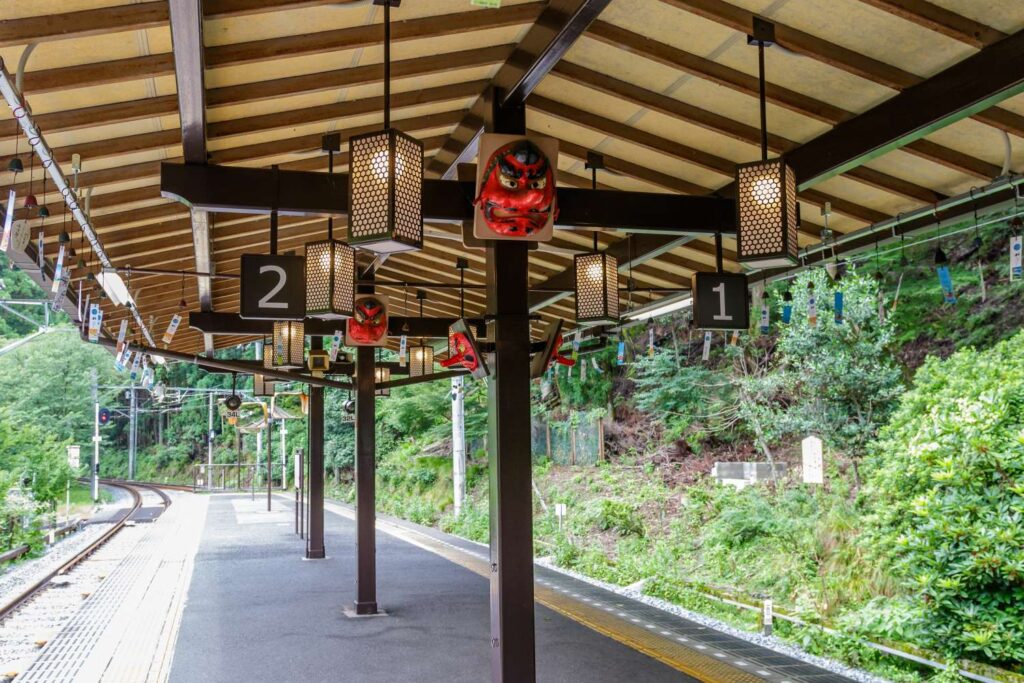
**If you are boarding the train during autumn (mid-Oct to early-Dec), pay close attention to the outside scenery in between Ichihara Station (市原駅) and Ninose Station (二ノ瀬駅間). As the train passes by the maple leaf tunnel, you will be treated to a short yet dazzling display of autumn leaves illumination during this portion of the ride. Check out the below video to see how it is like (courtesy of Keihan Electric Railway).
- Or if you are like me who prefer road trips, consider renting a car to drive to Kurama and Kibune. Driving around Japan is one of the best ways to explore off the beaten destinations that are notoriously hard to access via the standard public transportation. This is especially convenient if you are attending the evening festivals such as the Kurama Fire Festival (鞍馬火の祭り) that lasts until late night.
The Hike from Kurama to Kibune - Is It Worth It?
Absolutely yes! Especially if you are in Kyoto for at least 4 days and above and have time to spare for a day trip. The hike from Kurama to Kibune is considered easy overall and you do not need intensive training to attempt this. Not to mention, it is a great way to get out of the city and connect closer with the beautiful mother nature of Kyoto. And it is also one of the best ways to travel to the quaint and beautiful village of Kibune.
See my other articles here for both Kurama and Kibune:
- A Complete Guide to Kurama-dera
- Fun travel facts behind the village of Kurama
- A Complete Guide to Kifune Shrine
- Fun travel facts behind the village of Kibune
You might also be interested in…
- 5 Secret Kyoto Travel Tips for First Timers

You May Also Like
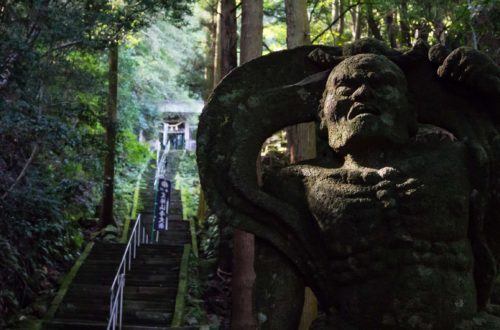
Monjusenji Temple – The Ultimate Spiritual Wisdom Spot of Kunisaki
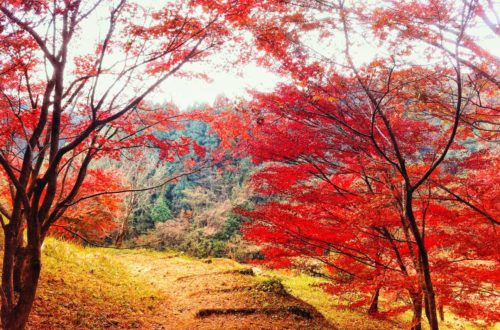
Bungoono – Admiring the Beautiful Autumn in Japan’s Enchanting Countryside
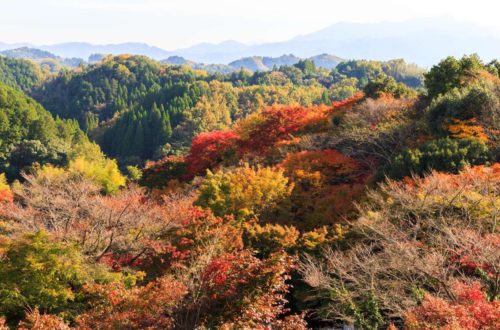
Bungoono – A Complete Guide to Japan’s Secret Beautiful Geopark
Leave a reply cancel reply.
Your email address will not be published. Required fields are marked *
Hiking Between Kurama and Kibune in Kyoto
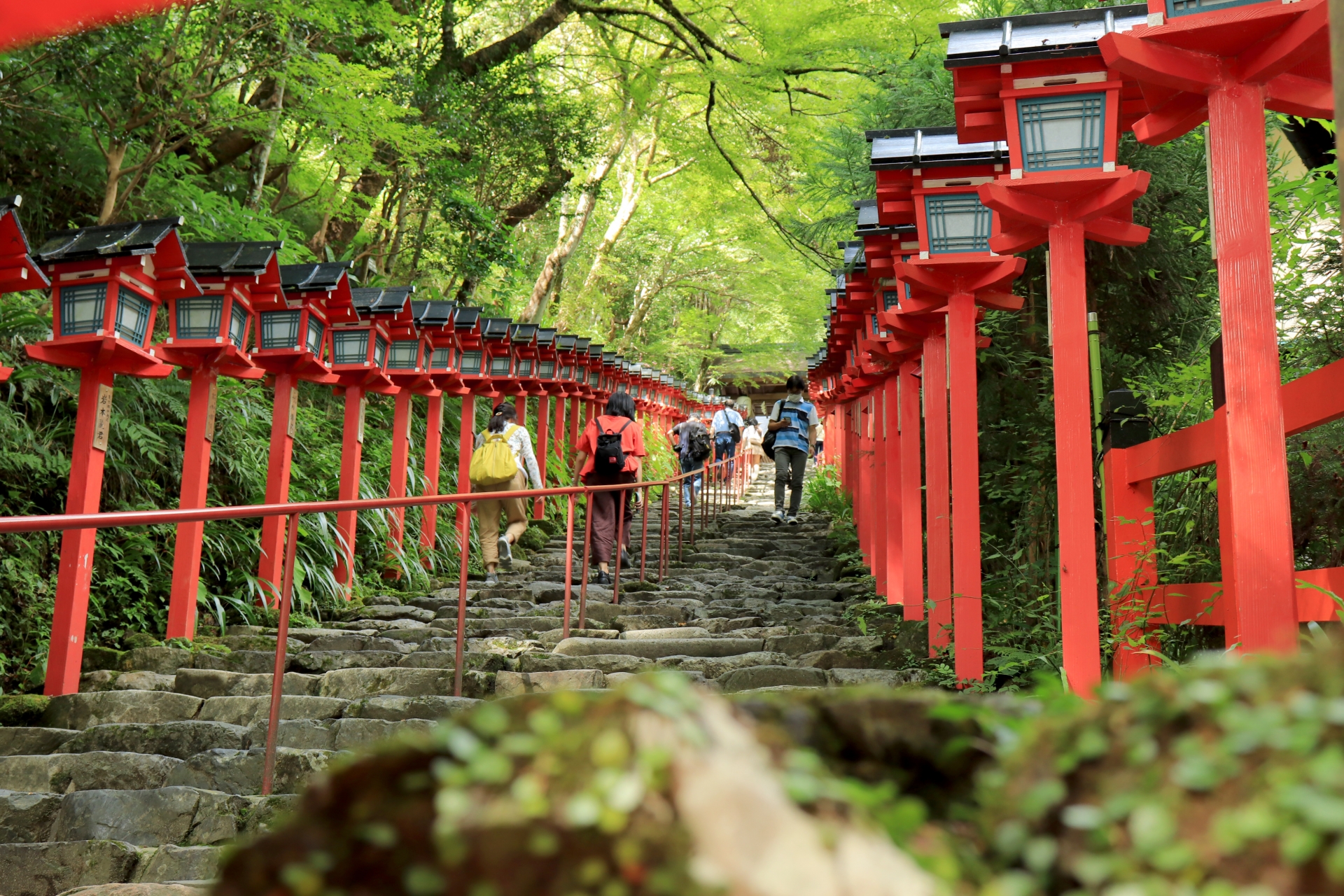
The villages Kurama and Kibune (also called Kifune) in the mountainous area just north of Kyoto offer a perfect opportunity for a (half) day trip for those in need of a fix of nature after having traveled around Kyoto’s historical central area . If you would like a bit more than a few hours of peace, tranquility, and forest bathing , you can easily turn your day trip into an overnight stay in a picturesque accommodation with a nice hot spring bath. Keep reading for more about the gorgeous area with itinerary ideas for a hike from Kurama to Kibune!
Tengu and the Legend of Mt Kurama
Itinerary in kurama and kibune, kawadoko riverside dining, how to get to kurama and kibune, where to stay in kurama, japan wonder travel tours in kyoto, other article you might like.
First, a little more about an interesting folk story that is inextricably connected to the area.
Have you ever heard about the Tengu ? He is a mythical figure in Japanese folklore who you can recognize by his goblin-like exterior with a very long nose. Tengu are said to have lived in the forestry area around Mt Kurama, and they allegedly taught some of Japan’s old warriors exceptional fighting techniques that helped them defeat their enemies. Tengu can, however, be quite wishy-washy, and instead of helping they can also thwart human beings. This unpredictable character is represented in the fortunes that you can draw from the Yuki shrine Tengu, as your fortune might be in your favor or against you (no worries, if you tie up your bad fortune slip in the designated area, it won’t come home with you). There are several Tengu statues in the area, with the most famous one near Kurama station. Make sure to take a picture of this interesting-looking statue when you pass by, as it is one of the famous symbols of the area!

So what should you see and what’s the best way to walk between Kurama and Kibune? There are 2 popular routes that lead past most of the highlights of the area. The easiest and shortest trek starts at Kurama station and ends at Kibuneguchi station. This trail that connects the Kurama temple with the Kifune shrine is 3.9 kilometers long and is classified as ‘easy’. Depending on your tempo, it will take 2 to 3 hours to walk the full trail. Starting at the Kurama temple, you will see the earlier-mentioned statue of the Tengu. Walking past the statue and up the stairs, the main path is very easy to follow. Once you see a very large sugi tree, you know you have arrived at the Yuki shrine.
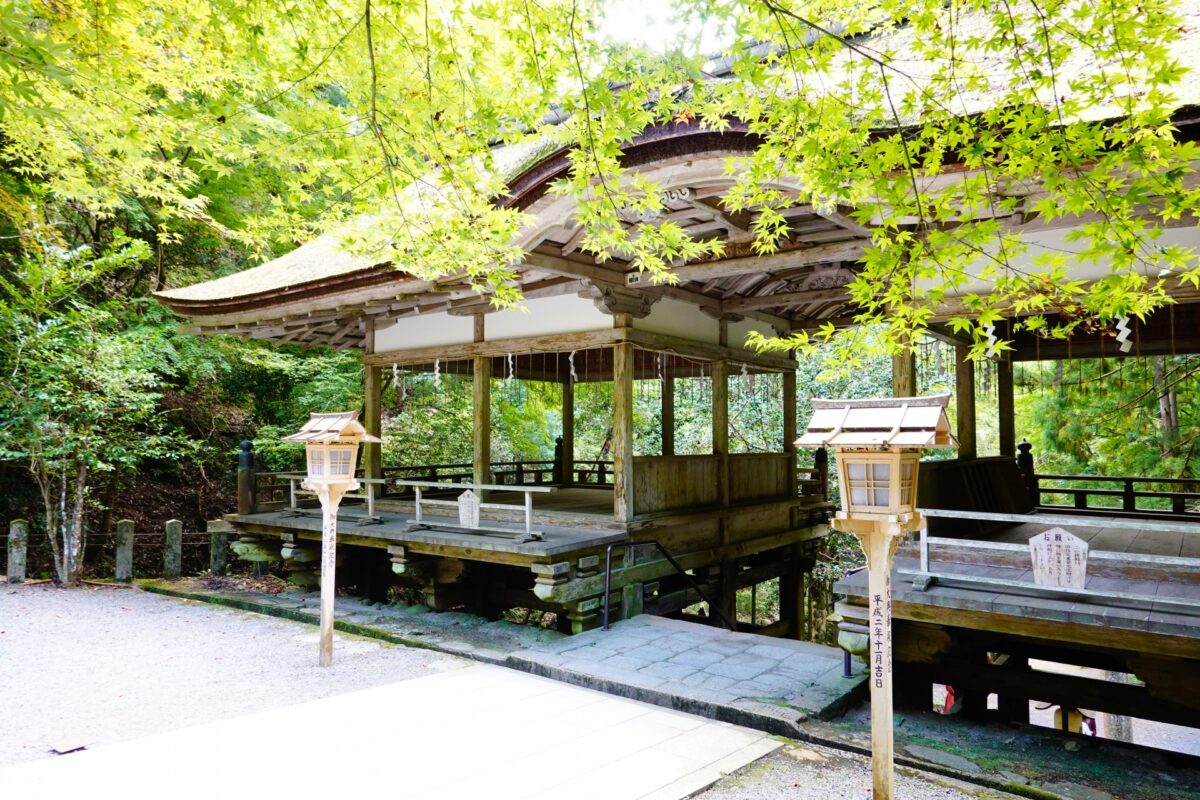
After passing through a wooden gate, you will follow a beautiful stairway lined with lanterns to the main part of the Kurama temple.
You will then go back down through the forest on the other side of the temple grounds via the Kinone Sando. Once you hit the bridge and cross the river, you go to the right to walk through Kibune village where you will quite easily find the lantern-lined steps to the Kifune shrine.

Kifune Shrine enshrines the deity of water, and it’s famous for the unique omikuji , fortune slips. Here, you can buy your blank omikuji and the result will appear when you put the slip on the surface of the sacred water streaming down from the mountain. And when it gets dry, the result will disappear again.

After enjoying the shrine, you can continue on the main street downstream to Kibuneguchi Station.
The second trek is for those who want to make their hike a bit longer and add a hot spring visit at the end of their walk. In this case, you will do the trail the other way around, start at Kibuneguchi Station and add the Kifune Shrine Okumiya to your route. Once you hit Kurama town, you can take a left and go to the Kurama Hot Spring to have a nice soak to relax your worked-out muscles. The total length of this trek is 7 kilometers.
Another experience that cannot be missed when you are in Kibune during the warmer months is riverside dining in Kawadoko style. If you are in the area between May and September and walk past the riverside, you will see many specially set up wooden platforms right next to the river. These are made to enjoy kawadoko riverside dining, which is especially enjoyable on the balmy evenings of late spring and summer when the cooling effect of the nearby river and the sound of streaming water is especially welcome. The views are phenomenal and the food is traditional and delectable. There are numerous restaurants that offer kawadoko-style dining, and Kibunesou is one of the most popular restaurants to enjoy this quintessential Kyoto-style riverside dinner.
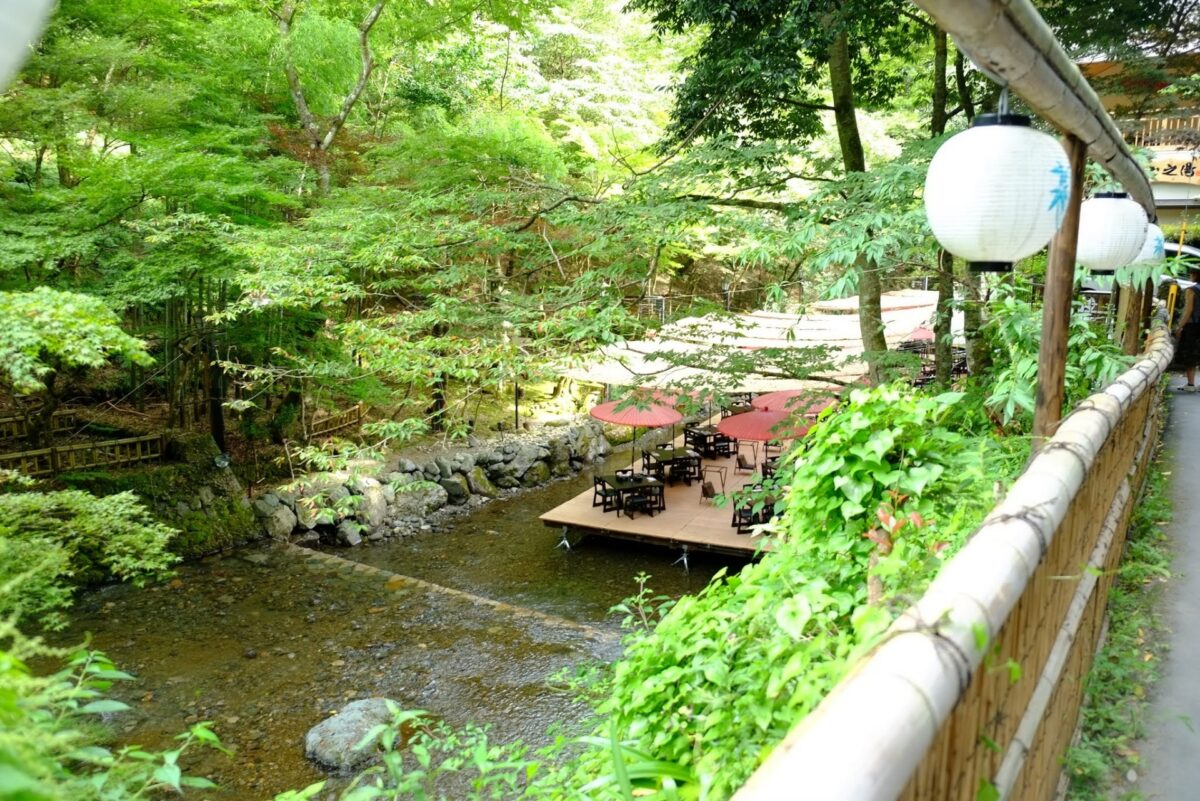
If you come from outside of Kyoto, you have to go to Kyoto Station first. From there, you can walk 1 kilometer to Shichijo Station, then take the Keihan Main Line to Demachiyanagi Station and switch to the Eizan Main Line in the direction of Kurama. You can get off at either Kurama Station or Kibuneguchi Station. From Kyoto station, it takes a little over one hour to get there.
And if you want to make things really easy for yourself, why not book our private Kurama & Kibune trekking tour ? Your guide will not only pick you up at Kyoto Station or your Kyoto hotel and lead the way, and they will also tell you many interesting stories about this area full of history.
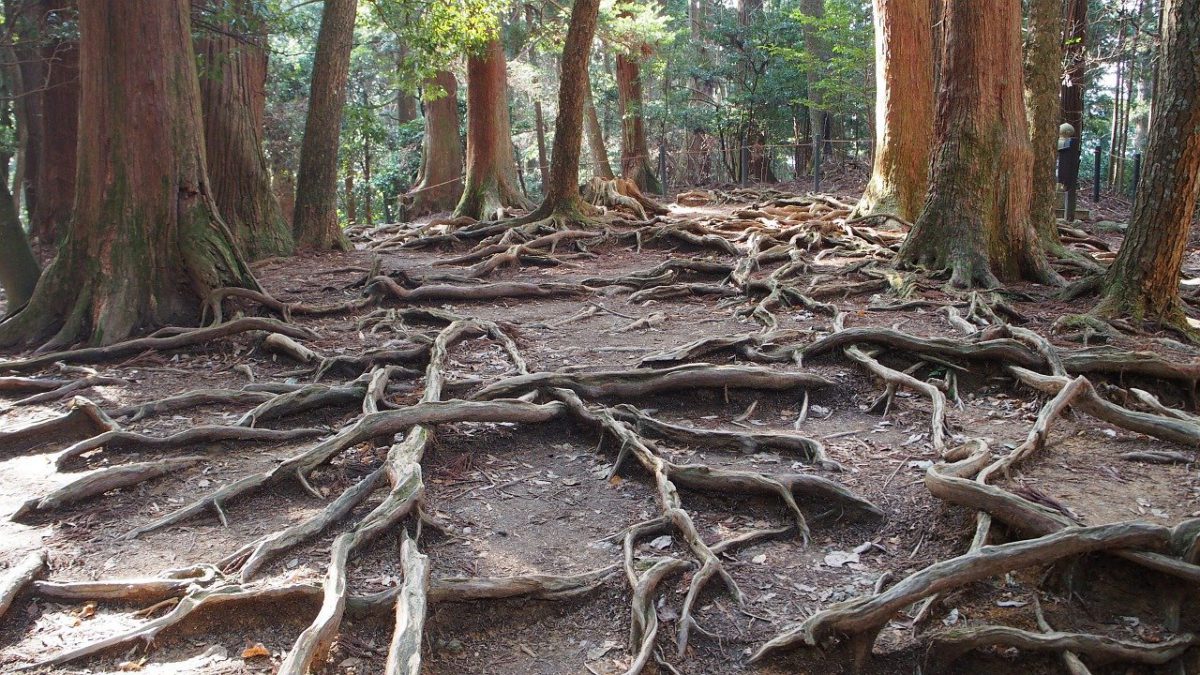
Do you want to turn it into an overnight stay in the mountains? Seryoan (芹生庵) is a gorgeous villa in the middle of the forest where you can enjoy comfortable traditional rooms and warm hospitality. You can cook or bring your own food, and there is a barbeque and pizza oven in the beautiful garden. There is also a large stone bath from where you can enjoy a view of the garden. Please note that you have to hike 4.5 kilometers to get here and do the same the next day to get back to Kibune. Staying in Seryoan will be an unforgettable and very relaxing experience for sure! ▶Book a room at Seryoan
Do you prefer to stay in cheaper accommodation in Kyoto with good access to Kurama and Kibune instead? Then you should consider Benidaruma Sakuramochi , a simple hostel with a good cost-performance. ▶Book a room at Benidaruma Sakuramochi
If you want to stay in a regular hotel we recommend Stay Sakura Kyoto Gyoen East , a comfortable 3-star hotel with easy access to northern Kyoto. ▶Book a room at Stay Sakura Kyoto Gyoen Eas
When you are visiting Kyoto and you need some help organizing your trip, you came to the right place. We’re happy to help you make your trip to Kyoto the best trip ever. We can advise you on where to go or even better, show you around with a local, English speaking guide. Let us help you create safe, comfortable, and unforgettable memories in Kyoto!
▶ Kyoto 8h Private Custom Highlight Tour with Licensed Guide On this full-day private tour of Kyoto, you will be able to see the highlights of Kyoto in just one day and at the same time develop a deeper understanding of both the culture of the area and Japan as a whole.

▶ Kyoto Arashiyama Best Spots 4h Private Tour with Licensed Guide If you only have a day or two in Kyoto, we offer a half-day tour combined with must-visit spots in one of the most popular areas in Kyoto – Arashiyama. A knowledgeable bilingual guide will make sure that you can get the full experience in just a half-day!

▶ Explore Nishiki Market: Food & Culture Walk If you’re looking to learn more about the culture and the local cuisine of Kyoto, this is the perfect tour for you! Take part in this Kyoto food and drink tour and explore the 400-year-old market and the famous surrounding areas.
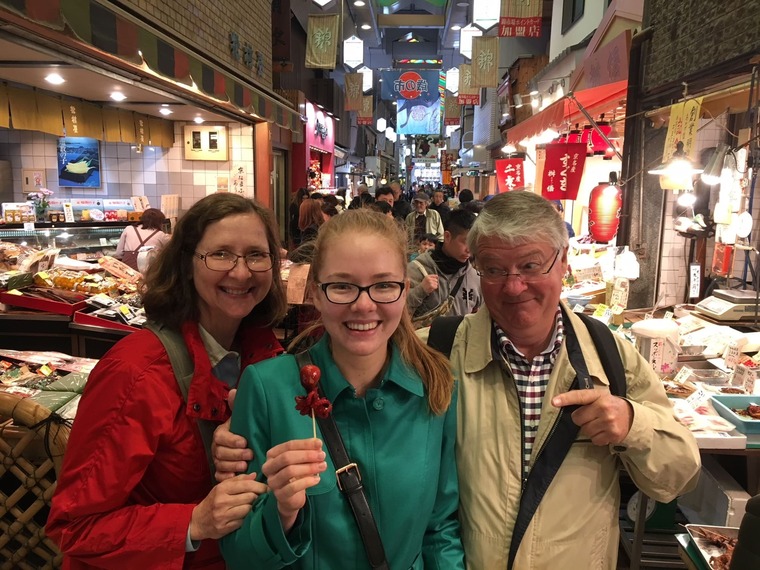
▶ Kimono Experience Kyoto is the best city to explore in kimono, Japanese traditional clothing. You can choose the one you like the most from several patterns and colors at the rental shop. In Kyoto, two locations are both accessible from the main tourist attractions which makes it easy to try it on and explore the city for a day!

Follow us on Instagram , Facebook , Twitter , and TikTok for more travel inspiration. Or tag us to get featured!
Happy traveling!

Stefanie Akkerman moved from the Netherlands to Japan in 2013 with her Japanese husband and son. She jumped into the niche of Dutch tour guiding in Tokyo and Kamakura in 2015 and occasionally writes articles about all the great sights and activities Japan has to offer. She loves (Japanese) food, and to work that all off she goes diving, snorkeling, cycling, or hiking.
This post may contain some affiliate links. When you click through and make a purchase we may receive some commission, at no extra cost to you .

- Popular destinations
- Hidden places in Japan
- Tours and workshop
- Food and drink in Japan
- Itinerary in Japan
- Places to visit in Tokyo
- Food and drink in Tokyo
- Seasonal events
- Tours & workshops
- Tokyo This Week
- Day trip from Tokyo
- Itinerary in Tokyo
- Places to visit in Kyoto
- Food and drink in Kyoto
- Itinerary in Kyoto
- Day trip from Kyoto
- Travel tips
- Accommodation
- Cultural tips
- Transportation
- Tokyo Tours
- Kyoto Tours
- Kimono Rental
- Fukushima Tours
- Mount Fuji Tours
- Tour Package
- Travel Concierge Service
- Media Kit(English/日本語)

The 7 Best Trails & Hikes in Kyoto! Enjoy Scenery and Amazing Nature
Kyoto is one of Japan's most popular tourist destinations, captivating many foreign visitors with its elegant atmosphere. The city's parks and hiking trails offer a perfect blend of natural beauty and cultural heritage.
Kyoto was the capital of Japan for over 1000 years, serving as the cultural center where many people gathered until the capital was moved to Tokyo in 1869. This rich tradition is still deeply rooted today, with shrines, temples, and historic buildings harmoniously integrated into the lush natural landscape, creating a majestic and profound scenery.
The greatest appeal of hiking in Kyoto is that you can not only enjoy nature but also experience this history firsthand. In this article, we'll introduce you to some perfect spots for hiking in Kyoto. Understanding the historical background of these places will make your Kyoto hiking experience even more fulfilling.
Kyoto Has Many Hiking Spots Where You Can Feel "Nature" and "Traditional Culture"
Kyoto boasts numerous hiking spots surrounded by rich nature, with historic shrines and temples scattered throughout. This is deeply connected to the influence of Shugendo, a unique Japanese religious practice.
Shugendo is a Japanese religion that considers mountains as sacred places and aims to achieve enlightenment through rigorous training of body and mind in these locations. In other words, Kyoto's hiking spots are not just about nature walks; they are deeply rooted in historical and religious backgrounds.
By hiking with knowledge of this historical and religious context, you can have a valuable experience of touching Japan's traditional spiritual culture.
4 Hiking Courses You Can Easily Enjoy in 2-3 Hours
Daimonji mountain hiking.
Source: YAMAP
In Japan, during the annual Obon period in August, it is believed that the spirits of ancestors return home. Daimonji Mountain is famous for the "Okuribi" ceremony held every August 16th, where a large character "dai" (meaning "big" in Japanese) is illuminated on the mountain with flames. This ceremony is a religious ritual to send the returned spirits back to the other world.
There are several hiking courses, but the most recommended one starts from Keage Station near Nanzenji Temple, passes through Ginkakuji Temple, and descends to the Philosopher's Path.
Benches are installed at the summit, allowing you to relax amidst the lush greenery. A little down from the summit, there's a wide area set up for lighting the Okuribi flames. From this spot, you can enjoy a panoramic view of Kyoto city.
This mountain is easy to enjoy, so please combine it with your Kyoto sightseeing.
Address: Nyoigatake-cho, Ataguchi, Sakyo-ku, Kyoto Access: Keage Station on Kyoto Municipal Subway Tozai Line Recommended season: Autumn (for autumn leaves)
Fushimi Inari Hiking (Mount Inari)
Source: Inari-Haneikai
Mount Inari features photogenic vermilion torii gates lined up. Beyond these gates lies a hiking course of about 4km in circumference.
At Yotsutsuji along the way, you can enjoy beautiful views of the southern part of the city or take a break at a tea house before heading to the summit. A little further from Yotsutsuji is Kojinmine, a hidden viewpoint. This spot is quiet with few visitors, allowing you to have the beautiful scenery all to yourself. Be sure to soak in the sacred atmosphere of Mount Inari.
At the Okusha Hohaisho near the entrance, try the "Omokaru Ishi" challenge. It's believed that if you lift this stone and feel it's lighter than you expected, your wish will come true. Conversely, if it feels heavier, your wish may not be granted.
Enjoy this traditional Kyoto entertainment along with your hike.
Address: 68 Fukakusa Yabunouchicho, Fushimi-ku, Kyoto Access: Right next to Inari Station on JR Nara Line Recommended season: Early summer The fresh green leaves and pleasant breeze make it enjoyable.
Fushimi Inari Hidden Hiking Tour
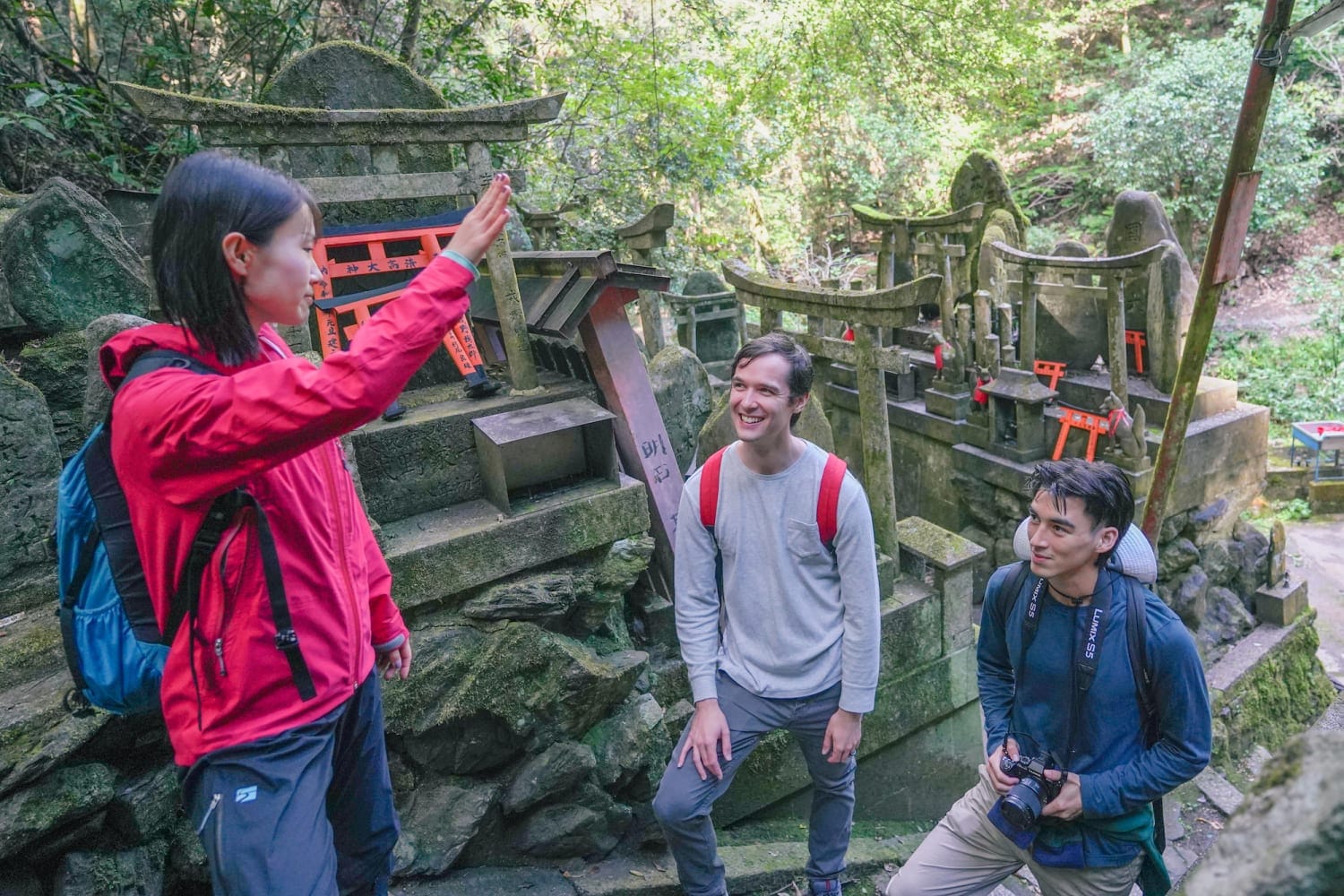
The "Fushimi Inari Hidden Hiking Tour" offers a special way to enjoy Fushimi Inari Taisha, guided by locals who know secrets unknown to regular tourists.
You'll walk through Kyoto's streets and lush bamboo forests while avoiding crowds. The charm of this tour is learning about Buddhist and Shinto beliefs and customs, as well as Japanese history and culture. Even spots that might usually be overlooked have important historical backgrounds.
With detailed explanations unique to locals, you'll gain a deeper understanding of Kyoto. Experiencing nature while learning about the history of Fushimi Inari Taisha and Japanese culture will surely become a special and unforgettable memory.
Details here
Daigoji Temple Area Hiking (Mount Daigo)
Source: hiking.coror.net
Mount Daigo hiking allows you to experience Japanese culture and history along with rich nature while enjoying historical landmarks along the way.
The course starts from Rokujizo Station, climbs Mount Hino, passes through Kamidaigoji Temple near the summit, and traces down to Shimodaigoji Temple at the foot of the mountain.
One highlight is the view from Panorama Rock on Mount Hino. You can see the townscape of Joyo City and Fushimi Ward in Kyoto Prefecture, and even the skyscrapers of Umeda and Abeno Harukas in Osaka in the distance. The beauty will make you forget the fatigue of hiking.
Another attraction is the "Daigosui" in Kamidaigo. This sacred water, which has been flowing since 847, is the origin of Daigoji Temple's name. The delicious and cold water will quench your thirst.
Through hiking, why not deeply feel the fusion of Japanese history and nature by touching the historical buildings of Daigoji Temple?
Address: Daigo Daigoyama, Fushimi-ku, Kyoto Access: 30 minutes walk from JR Rokujizo Station (to Mount Hino trailhead) Recommended season: Spring Daigoji Temple is famous for its cherry blossoms, with Toyotomi Hideyoshi planting 700 cherry trees in 1598 for a grand party. Late March, when the cherry blossoms bloom, is recommended.
From Kurama Temple to Kifune Shrine (Mount Kurama)
Source: maimai-kyoto.jp
The hiking course from Kurama Temple to Kifune Shrine is an attractive route that takes you through Kyoto's nature and historical places of faith.
Kurama Temple has long been known as a spiritual mountain for mountain ascetic practices. It's also famous as a place associated with Tengu, mythical creatures deeply connected to mountain worship.
Furthermore, the pattern in front of Kurama Temple's Golden Hall is said to be modeled after a mandala, a sacred Buddhist diagram. It's believed that standing in the center of the triangle grants cosmic power. Kurama Temple can truly be described as a place overflowing with energy.
Passing through the mountain path from Kurama Temple, you'll reach Kifune Shrine, which enshrines a water deity. Kifune Shrine is a place of faith for improving fortune. At Kifune Shrine, why not try the popular and accurate Mizuura fortune-telling? The fortune slips come with QR codes and are available in English, allowing you to enjoy Japanese culture in English as well.
The charm of this hiking course is that you can spend healing time in a nature-rich place full of energy, bathing in refreshing air. You'll surely feel refreshed both mentally and physically.
Address: 1074 Kurama Honmachi, Sakyo-ku, Kyoto (Kurama Temple) Access: 4-minute walk from Kurama Station to Nio-mon Gate Recommended season: Early summer The temperature is always a few degrees lower than in the city center, making it refreshing even during Kyoto's hot summers.
3 Hiking Courses Where You Can Fully Enjoy Nature in 4-6 Hours
Takao to kiyotaki hiking (western kitayama).
Source: mapple.com
The Takao to Kiyotaki hiking course is a route that takes you through the rich nature and historical sites of western Kitayama in Kyoto. With no significant elevation changes and well-maintained walking paths, it's suitable for beginners.
The course starts from Jingoji Temple in Takao and proceeds to Kiyotaki along the Kiyotaki River, enjoying the beauty of the valley. Before starting, you might want to visit Jingoji Temple and experience the "Kawarake Nage" ritual to ward off bad luck.
Along the way, you can feel the grandeur of nature with beautiful forest roads of Kitayama cedar used in traditional Japanese wooden architecture, dynamic rock walls, and emerald green water surfaces. The sound of the river flowing through the valley will soothe your heart. You'll also feel the Japanese atmosphere with scattered historical stone Buddhas and old bridges.
Immerse yourself in the cool and dynamic nature of Kyoto.
Address: Takao, Umegahata, Ukyo-ku, Kyoto Access: 10-minute walk from "Takao" bus stop on JR Bus Recommended season: Spring With many maple trees, you can enjoy the beauty of fresh green leaves in spring.
Mount Atago Hiking
Mount Atago is the second highest mountain in Kyoto City, with Atago Shrine at its summit, known as the deity of fire prevention and extinguishment. In an old Kyoto custom, fire prevention talismans from Atago Shrine are pasted in kitchens.
There are several hiking courses, but the most popular route is the main approach from Kiyotaki, passing through mysterious waterfalls and the quaint Tsukinowadera Temple before returning to Kiyotaki.
While daytime hiking is good, if your schedule allows, it's recommended to participate in the "Sennichi Mairi" held on the night of July 31st. Sennichi Mairi is a special day when climbing once is said to bring the benefits of a thousand days of worship.
On this day, people descending greet those ascending with "Onobori yasu," while those ascending greet those descending with "Okudari yasu." This warm exchange, unique to this day, is also a highlight.
When you climb Mount Atago, don't forget to get a fire prevention talisman. Also, during Sennichi Mairi, remember the greetings "Onobori yasu" and "Okudari yasu" to enjoy interactions with locals.
Address: Saga Atago-cho, Ukyo-ku, Kyoto Access: Right at Kiyotaki bus stop on Kyoto Bus (trailhead) Recommended season: Summer The night of July 31st to August 1st, when "Sennichi Mairi" is held, is recommended.
From Shugakuin to Enryakuji Temple (Mount Hiei)
Source: Official website
The Mount Hiei hiking course from Shugakuin to Enryakuji Temple is a route that takes you through nature and historical training grounds. The entire Mount Hiei is part of the World Heritage site Enryakuji Temple grounds, known as a place where monks have undergone rigorous training.
The course starts from Shugakuin and aims for the summit while walking along the ascetic's path of the Sennichi Kaihogyo, a monk's training regimen. Sennichi Kaihogyo is a practice where monks walk tens of kilometers every day for seven years, visiting sacred places on Mount Hiei and worshiping. By walking the same path as the training monks, you can feel the sacred energy.
Near the summit, you can enjoy breathtaking panoramic views with Kyoto's cityscape to the west and Lake Biwa in Shiga Prefecture to the east. You can also enjoy an aerial walk by using the Eizan Ropeway along the way.
Walking while feeling the rich beauty of Mount Hiei, which is also a place of ascetic practice, will surely calm your mind.
Address: Ichijoji Idegaya Chosenguchi, Sakyo-ku, Kyoto Access: Get off at Shugakuin Station on Eizan Electric Railway Recommended season: Spring In May, you can enjoy a carpet-like scenery of blooming azaleas covering the area in pink.
Precautions When Hiking in Kyoto
Wear appropriate clothing and equipment.
For the Kyoto hikes introduced here, you don't need full-scale mountaineering wear. However, it's generally best to wear long-sleeved shirts and long pants that allow easy movement and avoid skin exposure. Choosing clothes made of moisture-wicking, quick-drying materials will make your hiking experience more comfortable.
The nature-rich mountain paths in Kyoto can have rough terrain, and there's a possibility of encountering insects or snakes, so sturdy shoes that protect your feet are necessary.
Follow Hiking Etiquette
When hiking in Kyoto, adhere to proper etiquette. First, check your route on a map beforehand. Although mountains like Daisen and Atago are not very tall, there have been over 40 rescue incidents annually.
Additionally, many Kyoto hiking trails are tied to local beliefs. Avoid littering and picking plants to respect the area’s cultural significance.
Subscribe to Magical Trip Media
Get the latest posts delivered right to your inbox
Osaka Manga & Anime Spots 2024! 8 Pilgrimage Places for Otaku
Toei uzumasa eigamura (kyoto studio park) guide/opening hours, kyoto gion festival in july: highlights, fushimi inari taisha shrine highlight and model course.
8 day trips from Kyoto for history, deer, street food and much more

Jan 26, 2024 • 9 min read

Within an hour or so from Kyoto, historic castles, beautiful canals, nature and much more awaits © PR Image Factory / Shutterstock
Kyoto offers a tantalizing glimpse of ancient Japan – which is why it's one of the most popular destinations in the country. Might we suggest escaping the temple crowds by exploring an alluring spot nearby?
Its position at the heart of the Kansai region makes Kyoto a handy base for hopping on a train to explore fairy-tale castles, go on tasting journeys in matcha towns and float along ancient canals.
Each of these itineraries is accessible by train in under two hours. As you plan, keep in mind that if you plan to make several trips within a five-day period, you should consider a Kansai WIDE Area Pass . (All routes are covered by this or a Japan Rail Pass , except in Hiroshima, as noted below.)
These are the most rewarding day trips from Kyoto.

1. Find your favorite matcha in Uji
Travel time: 20 minutes
Mmm…matcha. Green-tea-obsessed Uji lies just next door to Kyoto, yet draws far fewer crowds. Meander along its Omotesando laneway, dipping in and out of charming stores dedicated to selling locally sourced green tea. Pause in cafes to try matcha-flavored treats – ice cream or soba noodles (or both). As you hold up a skewer of dango to the light, you'll first see the scorch marks, then taste them as you chew through the rice-cake balls. The flavors dance between chargrilled, bitter tea and sweet rice.
At the laneway's end, the vermilion Byōdō-in seems to spread its wings and levitate above a green pond (a sight immortalized on the 10-yen coin). The temple's Phoenix Hall is an excellent example of architecture from the Heian Period; after taking in the ambiance, linger in the gardens and delightful tea salon for an hour. If you want more Heian history, explore the on-site Hoshokan Museum to ponder a temple bell and other Buddhist treasures.
Japanese literature enthusiasts should make a visit to the Tale of Genji Museum, dedicated to Murasaki Shikibu's famous 11th-century work (perhaps the world's first-ever novel). The exhibits provide insights into the portion of the narrative that unfolds in Uji.
Cross the Uji River to visit teahouses where artisans demonstrate how to brew the perfect green tea. In summer, finishing the half-day with a cruise in a wooden boat on the river is a pleasant finale indeed – cormorant-fishing demonstrations optional.
How to get to Uji from Kyoto: From Kyoto Station, take the JR Nara line to JR Uji Station.

2. Encounter history – and deer – in Nara
Travel time: 1 hour
When you come eye to eye with the deer in Nara , you might decide for yourself if, as legend has it, they are divine messengers from the heavens. The 1000-plus placid deer that roam leafy Nara-kōen are an iconic symbol of Japan's first imperial capital. (Feel free to feed the free-roaming deer with crackers sold on-site.) You can take in plenty of Nara's history-rich sights while you're in the park, including the Great Buddha at Tōdai-ji , who is seated with an open hand as tall as a person. Early risers: if you get to Nara by 9am, it's worth observing morning prayers within the splendor of vermilion and cedar shrine pavilions at Kasuga Taisha .
How to get to Nara from Kyoto: From Kyoto Station, take a 55-minute Rapid train on the JR Nara line to Nara Station.

3. Climb Japan's best-preserved castle at Himeji-jō
Tilting your head skywards to be dazzled by the five splendid white stories of Himeji-jō is the stuff of Japanese fairy tales. In fact, the "White Heron" castle has been showcased in movies and TV series aplenty – which is no wonder, given how rare it is to find a truly intact (and not reconstructed) medieval castle in Japan.
Himeji-jō is a stunner, and it's worth visiting early to beat the crowds. Set aside an hour or two to climb to the top for great city views, then to take in the surrounding nine gardens within Kōko-en, designed in Edo Period style. A great time to visit is during cherry blossom season, when everything is framed in pink blooms and petals float atop the moats.
How to get to Himeji-jō from Kyoto: From Kyoto Station, take a JR Hikari train for 55 minutes to Himeji Station.

4. Eat real wagyū in Kōbe
Travel time: 2 hours
Kōbe is Japan's easy and breezy nature city, with countless things to do . Here, the mountains hug the seaport, with great views at every turn that make you stop and smile. Stop to dig into authentic wagyū (Japanese beef) – registered restaurants (identifiable by indoor plaque written in Japanese) are the most reliable. A superb place to start is with the good-value set beef menu at Tor Road Steak Aoyama – or by going all out with an exquisite teppanyaki experience (watching your chef work a hot plate) at Genkichi Kobe Beef . Head uphill from Sannomiya Station to a district of tree-lined streets with merchant houses, quaint cafes and unique shops.
Even with a population of 1.5 million, Kōbe offers easy access to nature. Mt Rokko, a popular hiking spot (accessible by cable car, too), towers over the city's narrow streets and features the landscaped Nunobiki Herb Gardens . Meanwhile, further up, Nunobiki Falls has been a muse for artists, poets and worshippers for centuries.
How to get to Kōbe from Kyoto: From Kyoto Station, take a JR Limited Express Super Hakuto train for 50 minutes to Sannomiya Station. There are two loop buses plying all the sights of the port and city.

5. Daydream along the canals of Kurashiki
Willow trees dip into the canals, while handsome black-and-white Edo period (1603–1868) warehouses are tucked away off side lanes. A day trip to Kurashiki is like encountering an outdoor museum. Those buildings – many now converted into denim boutiques, cafes and art workshops – make up the atmospheric Bikan quarter.
Wander the laneways lined with old wooden houses and shops first before popping into the popular Ōhara Museum of Art , which displays works by Picasso, Cézanne and Matisse. Kids will love seeing the exhibits at the Japan Rural Toy Museum , or snacking on a denim-blue ice cream or burger in the Kojima district. (Kurashiki has been jeans-obsessed since its trading-hub days).
A traditional boat tour of Kurashiki Canal is a lovely way to pass the afternoon. On land, Ivy Square is a pretty courtyard that once housed textile factories but now often plays host to live entertainment.
How to get to Kurashiki from Kyoto: Ride the 90-minute Hikari bullet train to Okayama Station, then change to the 15-minute JR Sanyo line train to Kurashiki Station.

6. Reflect on peace in Hiroshima
Hiroshima may be synonymous with the devastating atomic bomb attack in 1945. But this leafy, laid-back city has much more to offer visitors these days than just its past. If you want to reflect on the preciousness of peace in the face of war, definitely start at the Peace Memorial Park , then take in the haunting Atomic Bomb Dome , one of very few buildings left standing near the epicenter, whose shell has been preserved as a memorial alongside the Hiroshima Peace Memorial Museum . Seeing the colorful garlands of origami paper cranes sent from schools across the world at the Children's Peace Monument is joyfully moving.
It's ambitious but possible to tackle Hiroshima as a day trip from Kyoto; we'd recommend lingering in the city and staying the night. That way, you can dig into a Hiroshima-style okonomiyaki (savory pancake), which adds a layer of yakisoba noodles for delicious heftiness. A fun way to taste it is by choosing one of the dozens of okonomiyaki restaurants at the multi-level Okonomimura food hall.
Another reason to stay into the late afternoon is the short trip over to the gorgeous island of Miyajima , home to Itsukushima-jinja , a bright red shrine rising out of the ocean – and one of Japan's most iconic views. From here, you can wander through streets lined with machiya (old wooden townhouses) and, if you have another spare hour, take a cable car up to the summit of Mt Misen for breathtaking views of the Seto Inland Sea.
How to get to Hiroshima from Kyoto: From Kyoto Station, take the Shinkansen Nozomi bullet train to Hiroshima (1 hour 40 minutes; this is not covered by JR Pass alone – an additional fee is required). Tourist loop buses and trams depart regularly from Hiroshima Station to the Peace Park. To reach the ferry port from Hiroshima Station, take the JR Sanyo line for 25 minutes to Miyajimaguchi Station.

7. Taste the sizzle of street food in Osaka
Travel time: under 30 minutes
Osaka's street-food stalls are a festival of lanterns and delicious, sizzling smells, enjoyable day or night – easily done in a quick jaunt from Kyoto. Since the city is known as "Japan's kitchen," arrive hungry.
Its motto of kuidaore literally means "to eat oneself bankrupt." Which means you can expect to carve up okonomiyaki (savory pancakes) and devour takoyaki (fried octopus balls) along the canal in Dōtombori , peering up to see the iconic Running Man sign. Then try kushikatsu (crumbed meat and vegetables on sticks) near the Tsutenkaku Tower in the kitschy, retro neighborhood of Shin-Sekai .
As you wind through the alleyways of Ura-Namba to Torame Yokacho (Tiger Alley), you can try a range of favorite dishes under one roof. When full, walk off your excesses in the expansive grounds of Osaka Castle or browse boutique and vintage clothing shops in the hip neighborhoods of Amerika-Mura , Horie and Nakazakicho.
How to get to Osaka from Kyoto: From Kyoto Station, take a 28-minute JR Special Rapid train bound for Himeji to Osaka Station. Bullet trains also run between Kyoto and Shin-Osaka Station.

8. Cycle, swim, hike and ride canal boats around Lake Biwa
Travel time: 35 minutes
Japan's largest lake is rich with outdoor life. Along its shores, visitors find an almost overwhelming number of temples, castles, cities and activities spread hours apart. Start in the lake's most wonderfully preserved town, Ōmihachiman, far away from foreign crowds. From here, you can rent bicycles and follow the color-coded path markings for straightforward, self-guided cycling on a section around the lake. Or take it slow with a canal boat ride on the narrow waterways, gazing at the feudal-era merchant houses of Ōmihachiman, which once held goods brought across the Sea of Japan.
If you head up the Hachimanyama Ropeway, you'll be rewarded with great views across Lake Biwa, as well as short hiking trails. In summer, listen for the waves pattering the lake shore, inviting you for gentle beach swimming.
With more time, you can chase down the torii (gates) of Shirahige Shrine, which seem to float on the lake, or 17th-century Hikone-jō , shrouded in beautiful autumnal colors in mid- to late-November.
How to get to Lake Biwa from Kyoto: From Kyoto Station, take a Special Rapid train to Omi Hachiman Station.
This article was first published Jul 8, 2019 and updated Jan 26, 2024.
Explore related stories

Destination Practicalities
Mar 25, 2024 • 9 min read
With its myriad islands, towering mountains and megacities, Japan can be a daunting destination to get around. We've got everything you need to know.

Dec 17, 2023 • 6 min read
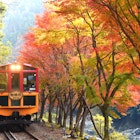
Mar 1, 2020 • 2 min read

Jan 31, 2020 • 7 min read

Aug 23, 2024 • 7 min read

Aug 8, 2024 • 13 min read

Aug 5, 2024 • 6 min read

Jul 12, 2024 • 6 min read

Jun 12, 2024 • 8 min read

May 3, 2024 • 13 min read
- Haneda Airport
- Okachimachi
- Shimokitazawa
- Kiso Valley
- Nozawa Onsen
- Shinanomachi
- Kumano Kodo
- Japan Journeys Style
- Things to do
- Restaurants
- Hiking and Walking
- Amusement Parks
- Animal Attractions
- Museums and Digital Art
- Parks and Gardens
- Sports and Stadiums
- Temples and Shrines
- Experiences
- Places to stay

- Attractions
- Destinations
- Things To Do
A Great Half-Day Hike Near Kyoto: the Kibune – Kurama Hike
Looking for a way to enjoy nature, soak up culture and get some exercise, all at the same time? Well, look no further than the Kibune – Kurama hike. This easy two hour hike covers almost 4 kilometers through the Kitayama mountains north of Kyoto, passing numerous wonderful sights along the way—most notably the Kurama dera Temple. You can start at either village; most people start from Kurama, but the hike is actually easier when starting from Kibune. Plus it has the added benefit of a relaxing hot bath once you reach Kurama! Join me as I sweat it out on this unforgettable summer hike just 1 hour from Kyoto !
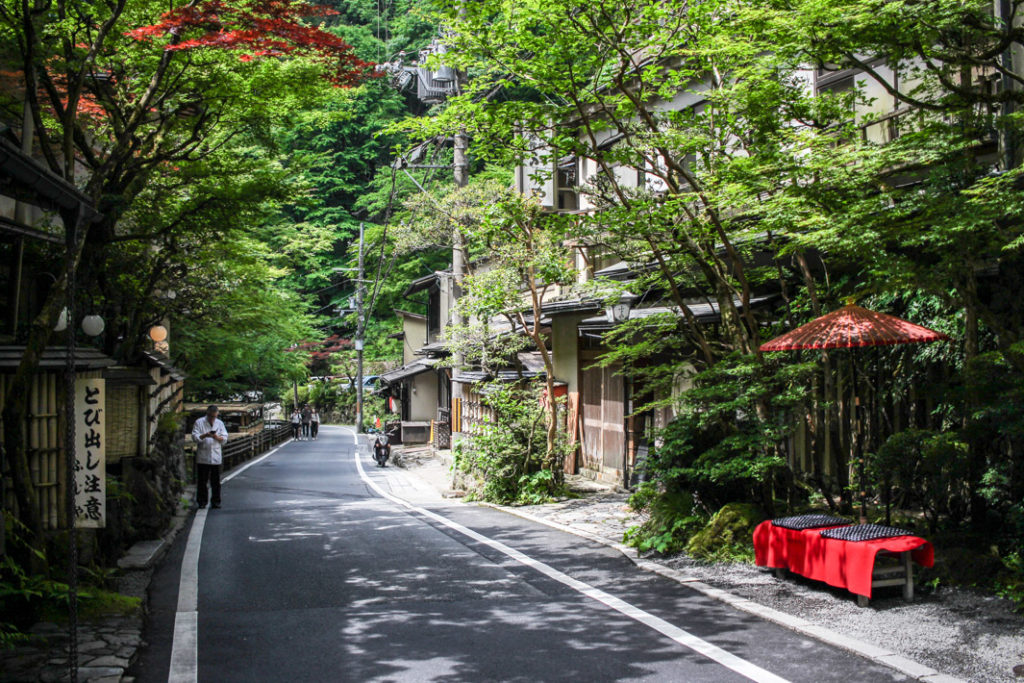
Setting Out From Kibune
After exploring Kifune Shrine and enjoying some lunch by the riverbed, it was time for me to hike. From the main street in Kibune, I crossed over the Kibune River via the small red bridge below. Just around the corner lies a ticket booth, where a few hundred yen hiking fee gets you a ticket and a map outlining the sights. The map lists 42 points of interest, though I’ll only cover some, leaving the rest for you to experience!
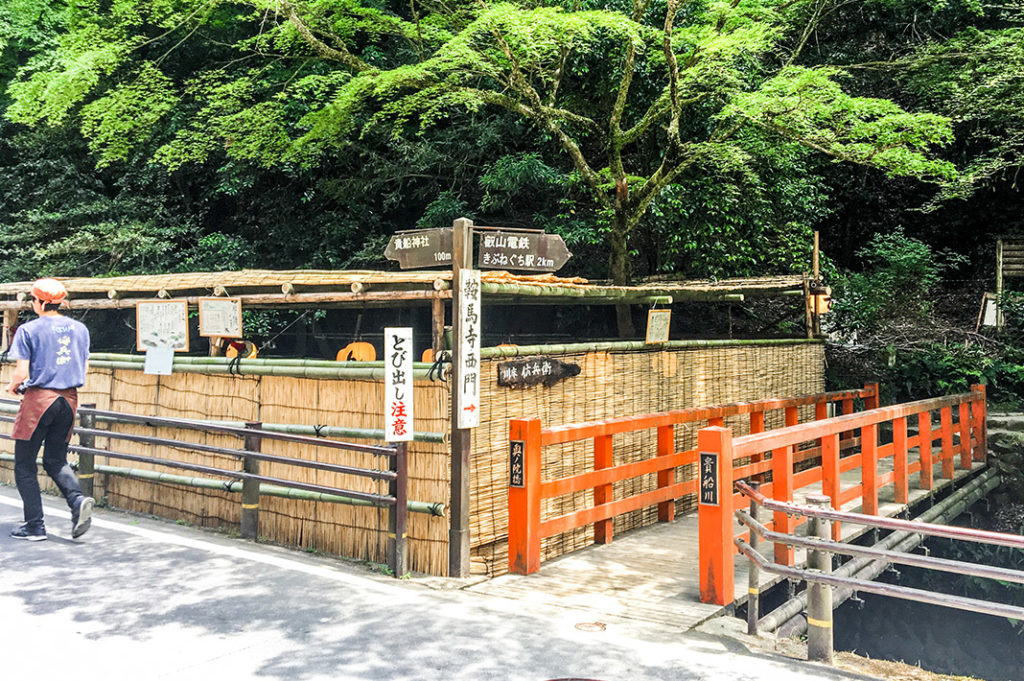
The path immediately leads uphill via some stone steps, but eventually turns into a more natural looking path. The somen noodles from lunch were feeling heavier with each step uphill and I, along with other hikers, periodically stopped to catch my breath. Warranted in the 30 degree (85F) heat, I think.
Okunoin Mao-den
After perhaps fifteen minutes, I reached Mao-den—the first stop. Sitting in a small clearing, this building enshrines Mao, the ‘Magic King’. As the shaded interior was hard to resist, I made my way in to sit and contemplate the rock garden. Once I had cooled down and regained some energy, I set off.
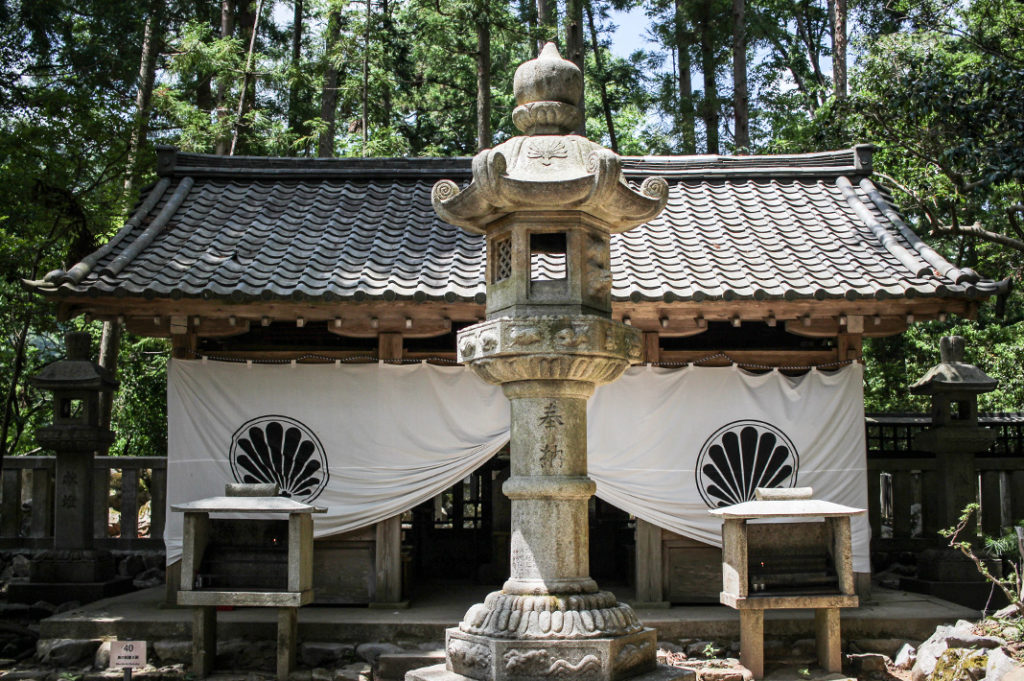
The next section of the hike does involve a little more uphill walking but, believe me, the reverse direction is much harder. You’ll see what I mean later. A quick look at my map showed that the next 500m would contain another 10 points of interest, one of the first being Fudo-do.
This sub-temple of Kurama Dera bears an image of Fudo Myoo, ‘The Immovable One’. In Buddhist belief, he is one of the ‘Five Bright Knights’ who looks frightening but purifies evil.
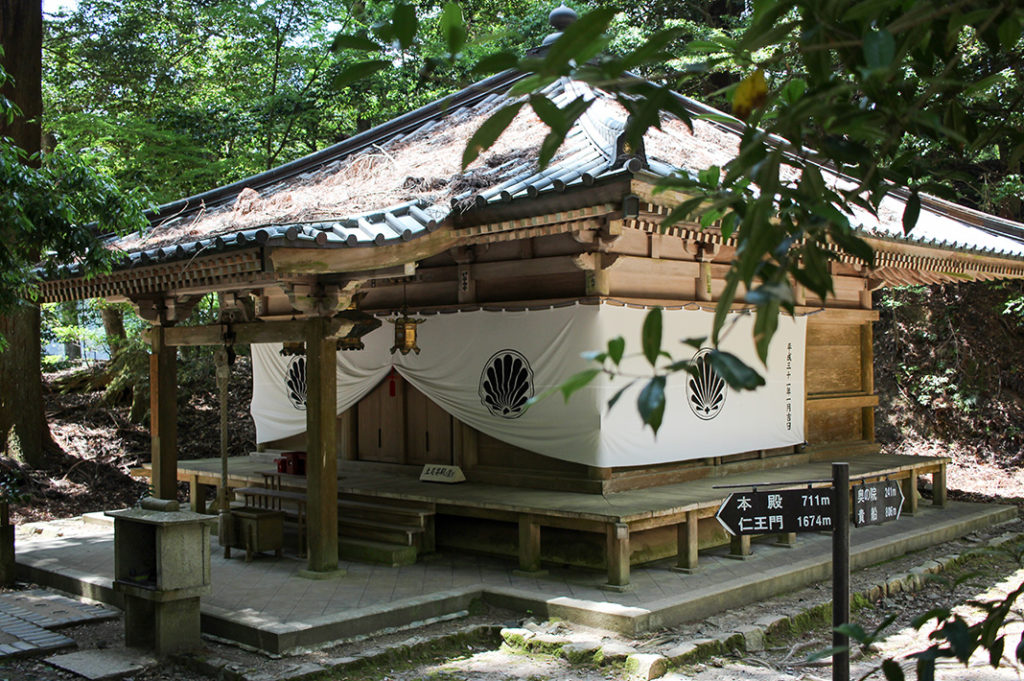
This area is quite pretty with its giant cedar tree and intricate paving. Make a quick prayer and continue on.
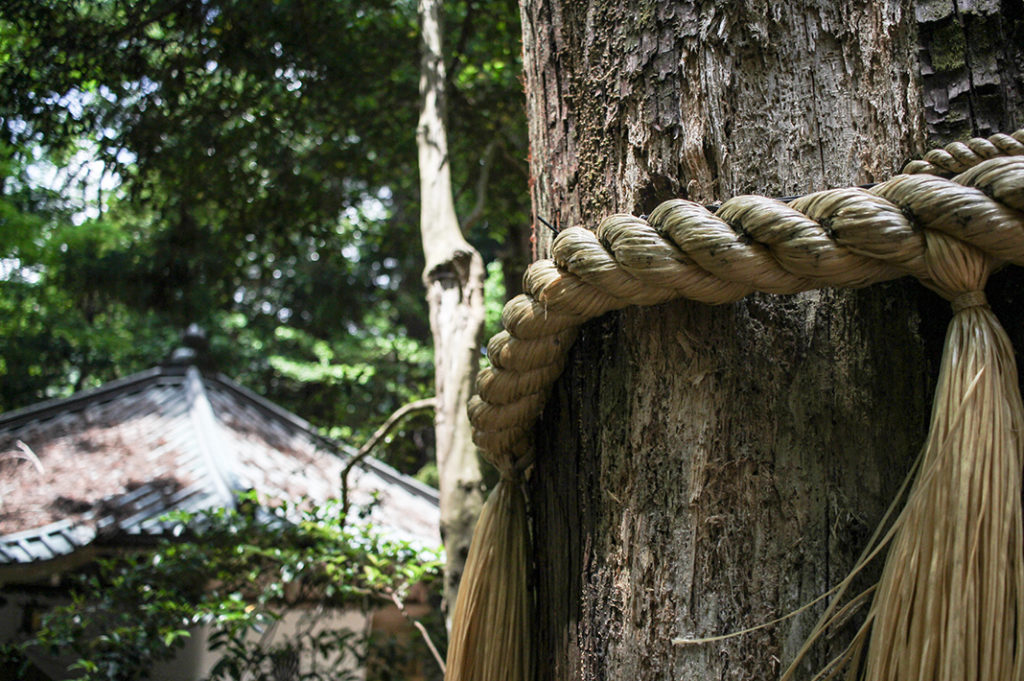
Facing the Fudo-do building, take the stone steps to your left and continue the uphill journey. You’ll soon pass by Osugi Gongen (giant sugi tree gongen) and Kinone Sando (tree root path). It was here that I heard the first of many distant bell gongs ringing out over the landscape. Turn left at the fork just before marker 35, and you’ll arrive at Sekurabe Ishi.

Sekurabe Ishi
At Sekurabe Ishi (marker 35), legend has it that the stone inside the fence was used as a height-measuring device by 12th Century ‘young warrior’ Minamoto Yoshitsune. It really wasn’t very tall, so I’m curious about just how young this ‘young warrior’ was!
This is the highest point of the hike, so many people were stopping to catch their breath here. With water in hand and the indispensable sweat towel (it’s a thing), I was really looking forward to the onsen at the finish line. After a short break, it was time to head downhill!
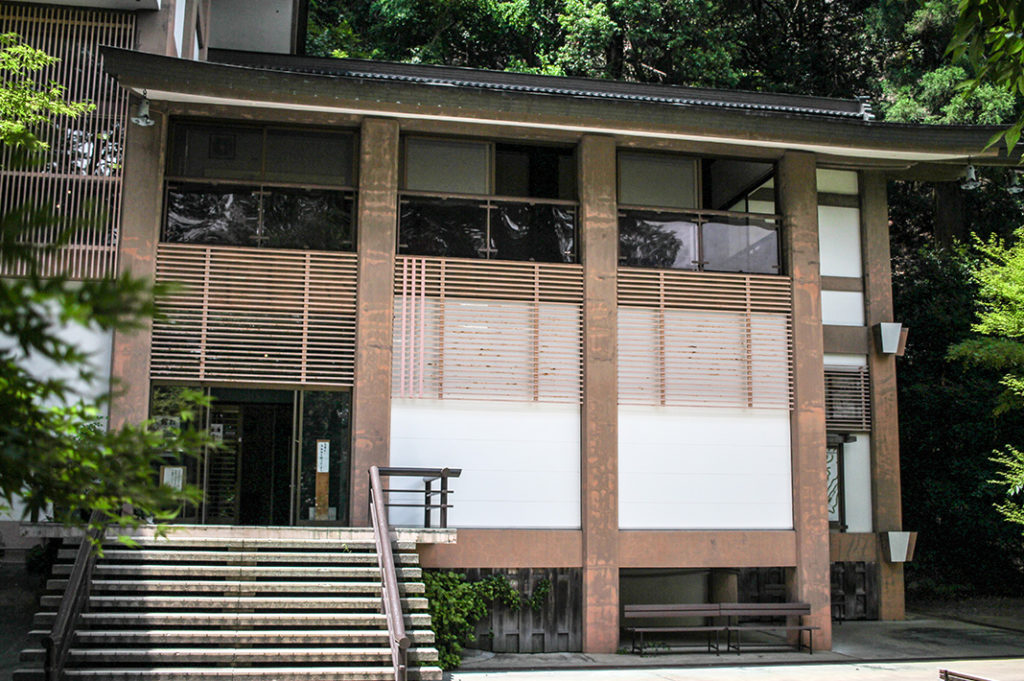
After a while snaking downhill, you’ll come across the Reihoden Museum. Inside is a natural history display as well as information about the religion and history of the area. Kurama dera is very close at this point; head to the right of the building and follow the stone steps down to emerge into the main shrine complex.
Kurama Dera
As you enter the wide-open space, you’ll notice the Main Hall (honden) on your left and sweeping views ahead of you. Take your time to explore.
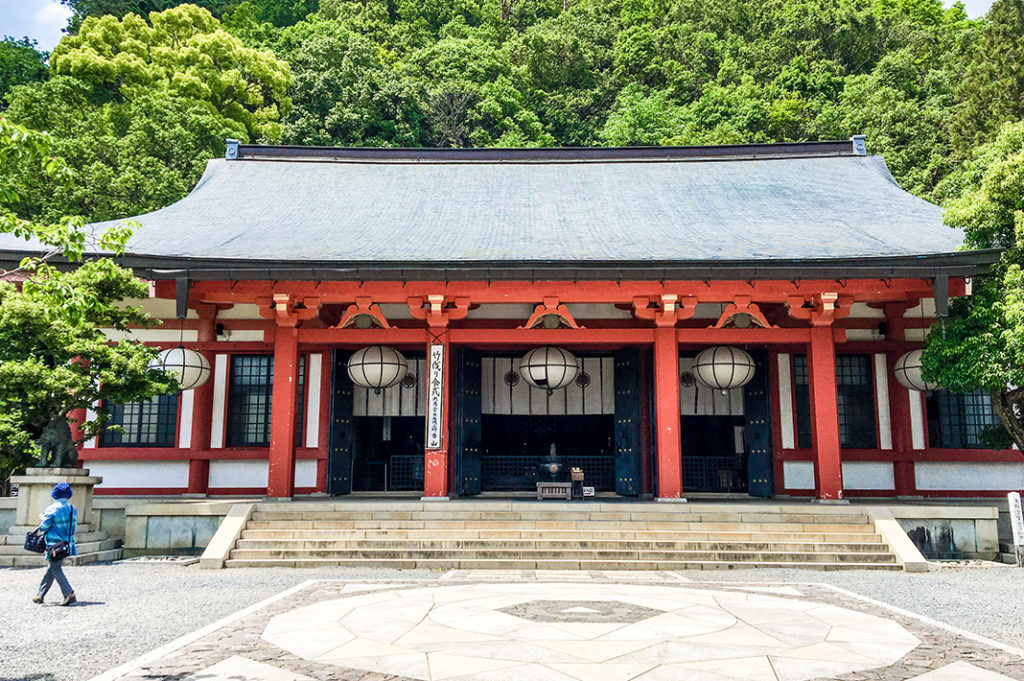
Kurama Dera has a history dating all the way back to the year 770; it has long been a powerful, spiritual place for locals. In 1949, it moved from the Tendai sect of Buddhism to the newly founded Kurama-Kokyo sect. Since then, people have come to worship Sonten, the supposed creator of the universe. Interestingly, Sonten is actually made up of three deities, rather than one. They say that if you stand on the triangle in the middle of the paved area above, facing the main hall, you will feel a surge of power through your body.
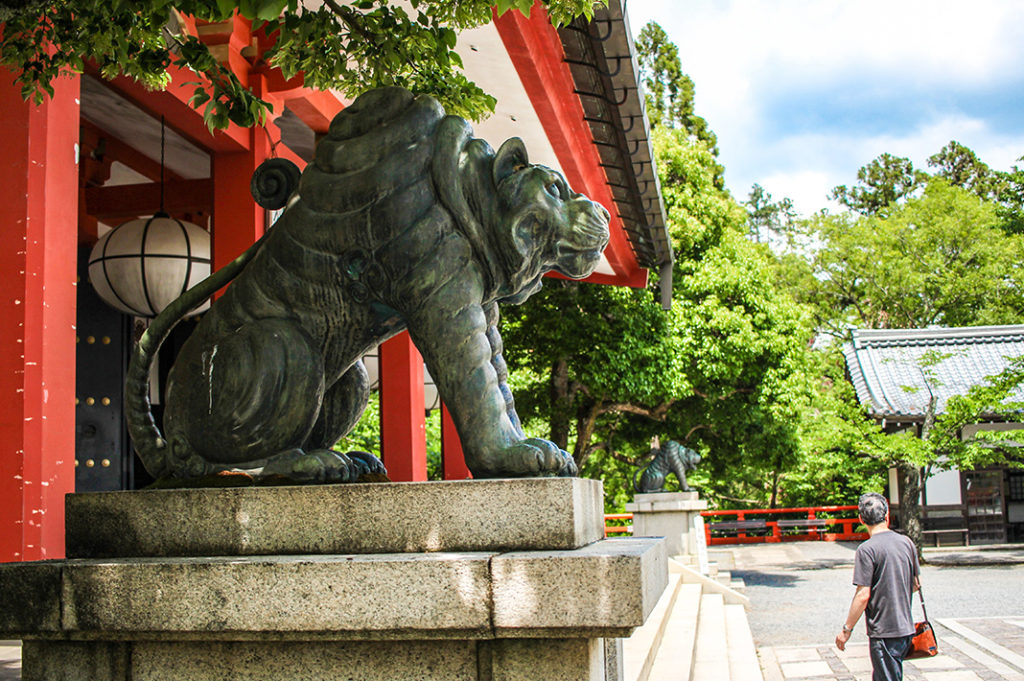
After the main hall it’s downhill again (aren’t you glad you’re walking this direction, now?). While there is a cable car available, it would seem I’m a glutton for punishment and chose to keep walking downhill. I’m glad I did, though; some of my favourite sights were in this section.
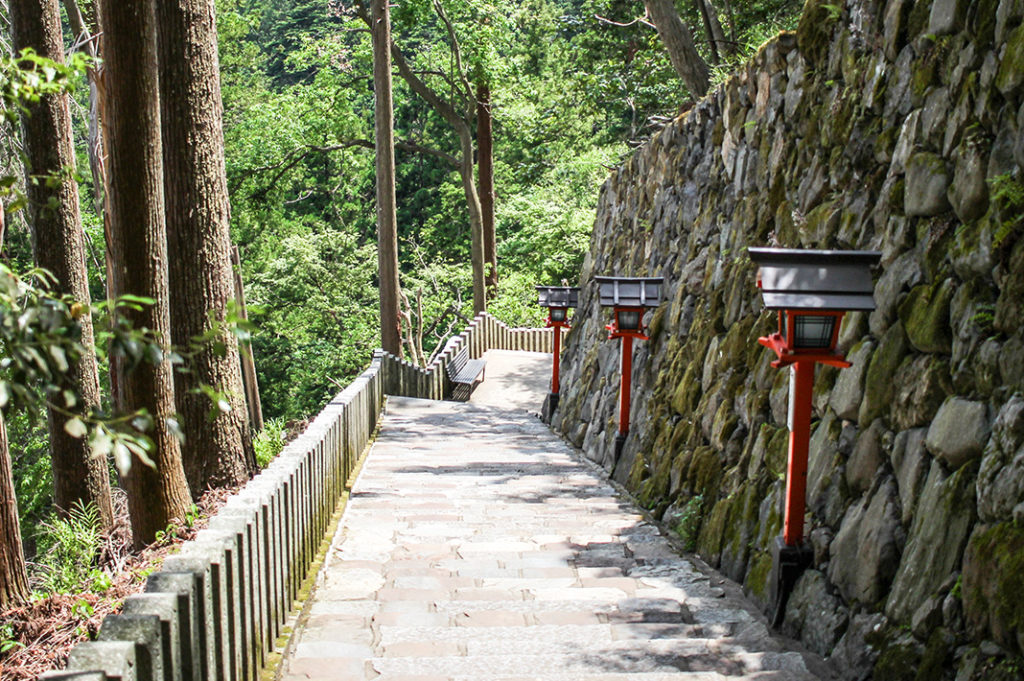
Yuki Jinja Shrine
Approaching Yuki Jinja, I caught the aroma of burning incense common in many shrines and temples. As the sites on the hike were so close together, the incense became an almost permanent fixture in the experience. A sudden movement on the ground broke my reverie: it was a little snake who promptly slithered off into the bushes! Coming from Australia, the land of terrifying snakes, I wasn’t too phased and continued on to explore the shrine.
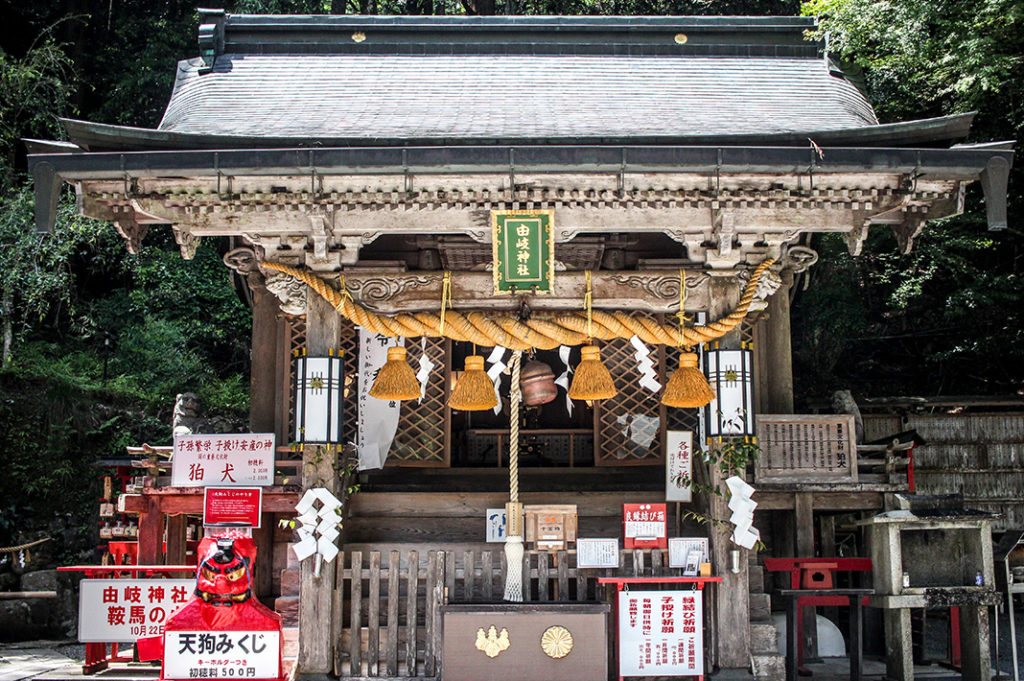
The Yuki Jinja shrine was one of my highlights of the hike. This small Shinto shrine is a protector of the Kurama dera and Kurama village and features an absolutely massive cedar tree (sugi). Images certainly can’t do it justice, you’ll have to go to feel the power of the place.

Head down through this wooden structure and you’re on the home stretch!
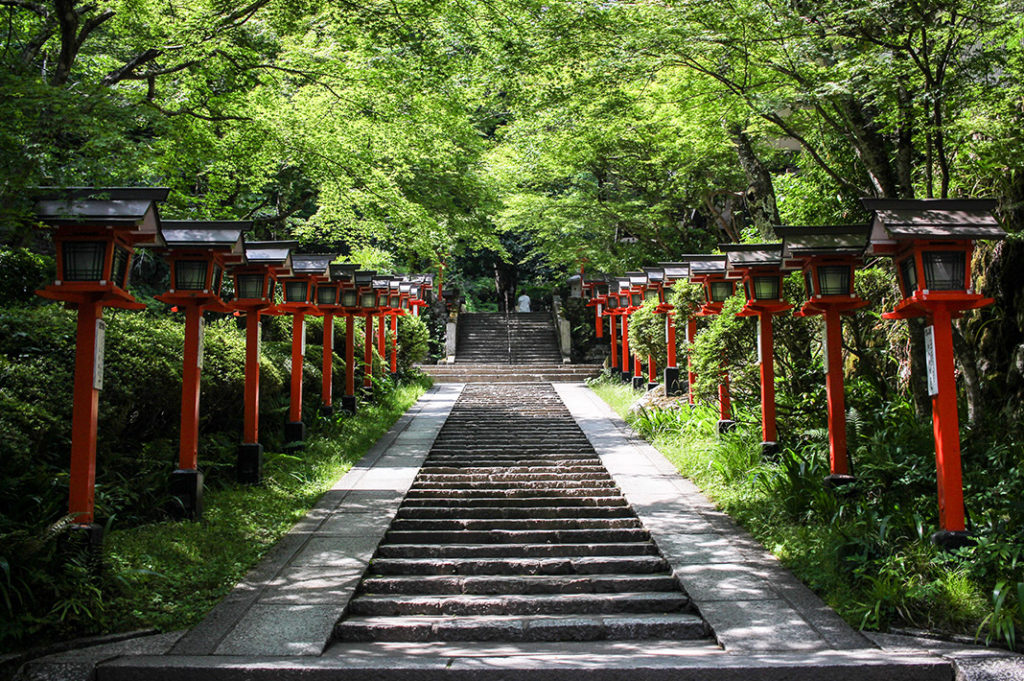
After descending this staircase, you’ll find yourself at the end of your hike—the Nio-mon gate. Head through it and into Kurama Village.
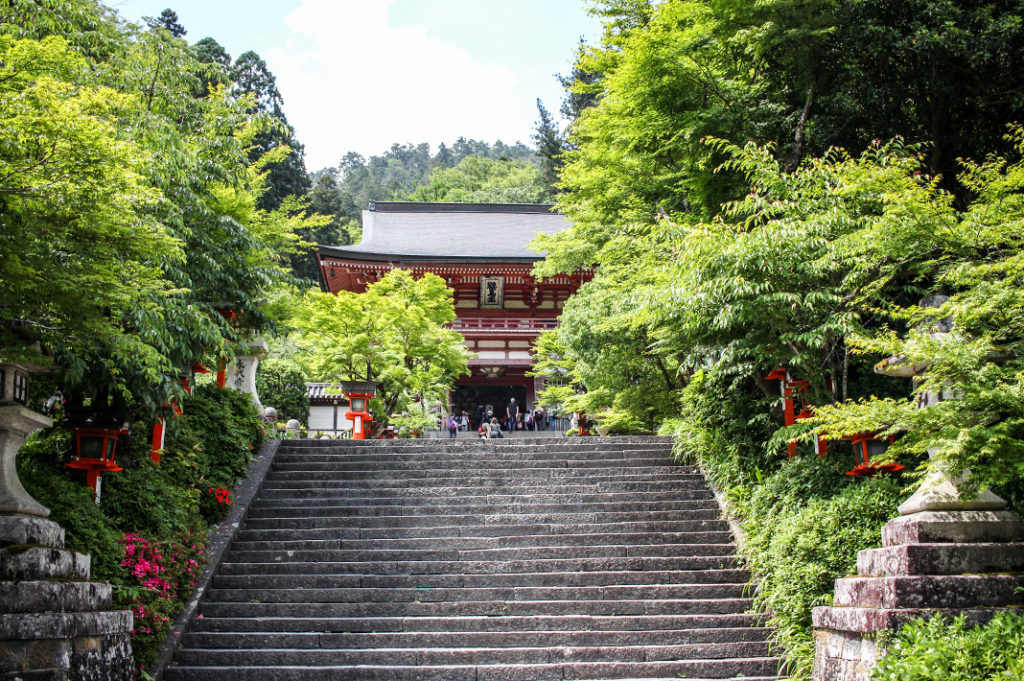
From here, you can explore the Kurama area and enjoy an onsen at Kurama Onsen . Or, if you’re ready to call it a day, head to Kurama Station for a train back to Kyoto.
Getting to Kibune
Take the Karasuma Subway Line from Kyoto Station to Kokusaikaikan Station (around twenty minutes). From there, head up to the bus area and board #52 bound for Kurama (via Kibuneguchi). Ride the bus for 20 minutes, departing at Kibuneguchi bus stop. From this point, you can walk into town or take the #33 bus two stops (five minutes). This will bring you to the start of the hike.

Getting from Kurama to Kyoto
From Kurama Station, take the Eizan Kurama Line to Demachi-yanagi Station. Transfer to the Keihan Main Line and ride into town.
Post by Japan Journeys .
RELATED ARTICLES MORE FROM AUTHOR
Yakusugi land: hiking for all on yakushima island, shiratani unsuikyo and kokemusu mori: yakushima’s magical moss valley, city strolling: meandering to uji shrine, most popular, retro cocktails, hip coffee, and michelin italian food: an evening..., hiroshima castle: more than a museum, fossil hunting at nojiriko naumann elephant museum, sapporo shines with 730,000 lights this winter, late night eats at ebisu yokocho, delicious tempura soba at nozawa onsen’s sobadokoro daimon, a sea of wisteria reflected in the rice fields near odate..., gachapon capsule toys: cheap souvenirs and a bit of fun, road trippin’ through kumamoto prefecture, aizuwakamatsu: an overnight stay in the samurai city.

13 BEST Day Trips from Kyoto, Japan
This post contains product affiliate links. These are mainly on items/hotels/tours that I personally endorse & love. I may earn a small commission if you make a purchase, but at no extra cost to you.
From the stunning cherry blossoms in Nara to the amazing food scene in Kobe and Osaka, these are the best day trips from Kyoto!
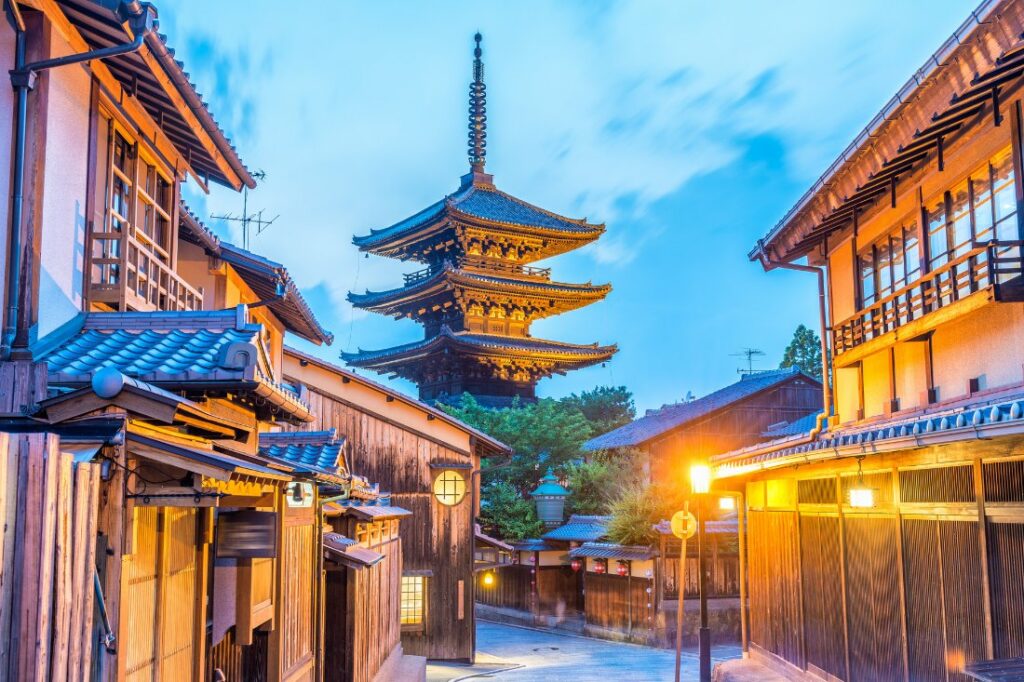
There’s no doubt about it, Kyoto is one of the most beautiful cities in Japan. In fact, it’s pretty much on most people’s itinerary when travelling around the country.
If you’re thinking about visiting Japan, basing yourself in the historic centre of Kyoto is a great idea. From here you can easily visit some of Japan’s most beloved attractions nearby before retreating to the city each evening.
Some of the best day trips from Kyoto involve travelling to nearby cities and towns to experience classic Japanese culture and history, and even exploring the stunning landscape during the famous cherry blossom season.
Personally, I love checking out experiences where I can get in touch with local food culture, so having Kyoto tours that go to foodie hotspots like Kobe and Osaka is a huge plus for me!
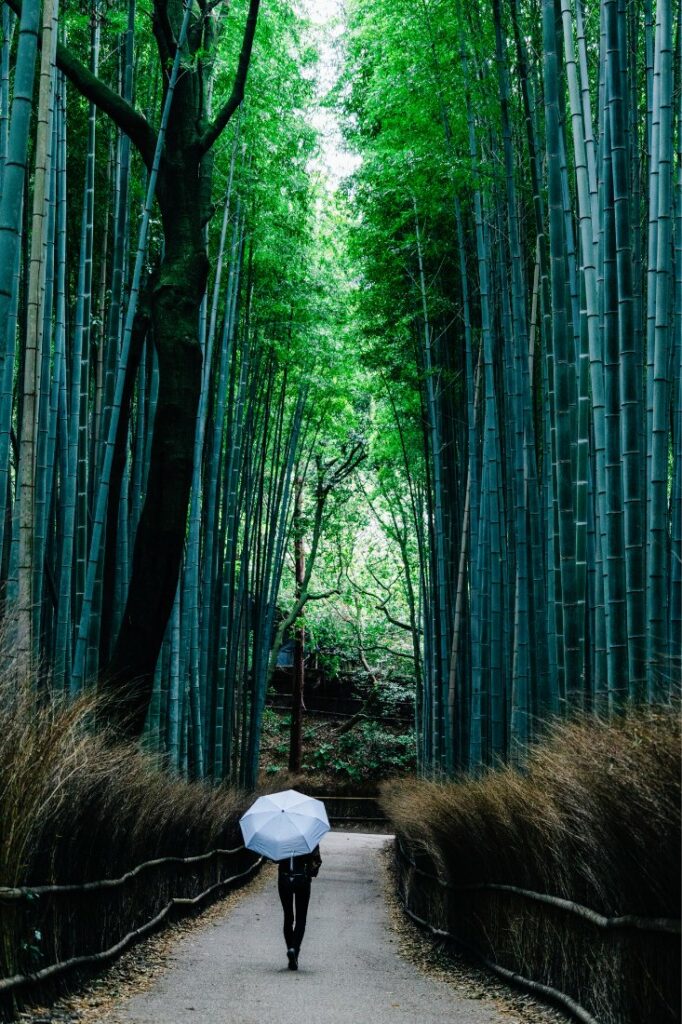
Whether you want to check out the historic Ishiyama-dera Temple, relax in the onsen heartland of Kinosaki, or travel further afield to the stunning Miyajima Island, these Kyoto day trips are sure to tick all your Japan travel bucket list boxes!
The vast majority of these destinations are accessible from Kyoto station using a Japan Rail Pass , so you don’t even need to hire a car for a lot of these trips. Personally, I would always recommend by taking advantage of the Japan Rail Pass. It’s by far the easiest way of travelling around Japan in my opinion, especially on a holiday.
But where are you going? We’re about to find out now!
Best day trips from Kyoto, Japan
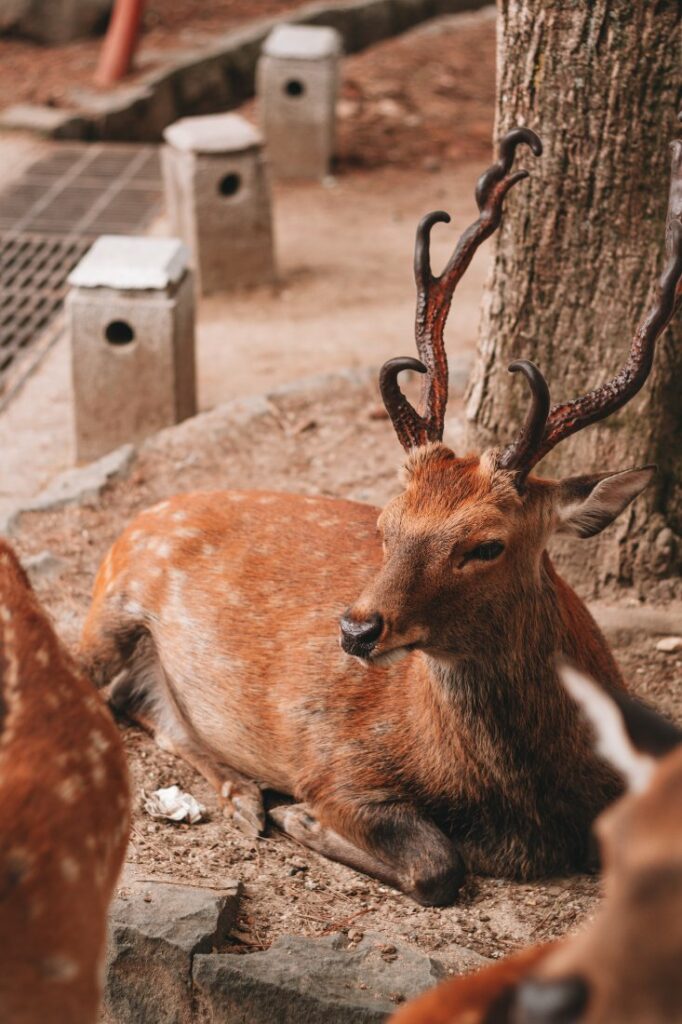
Nara is famous for a few things. You’ve probably seen photos and videos of wild deer bowing to tourists, and this is a major draw for Nara. There’s also the amazing Todai-ji temple which is a UNESCO World Heritage Site. Want to get one of the best views of the cherry blossoms? Hike up Mount Yoshino in the Nara prefecture and experience sweeping panoramic views. If you’re short on time, I’d recommend taking a tour of Nara . Then you get to see everything with a guide.
The ancient capital of Nara is probably the most popular Kyoto day trip due to its super close proximity. While you can get a fast private train from Kyoto to Nara in just 35 minutes, if you want to use your Japan Rail Pass you’ll need to jump on the JR Kyoto Nara line which can take between 45 and 75 minutes depending on the route.
Hiroshima Peace Memorial Museum
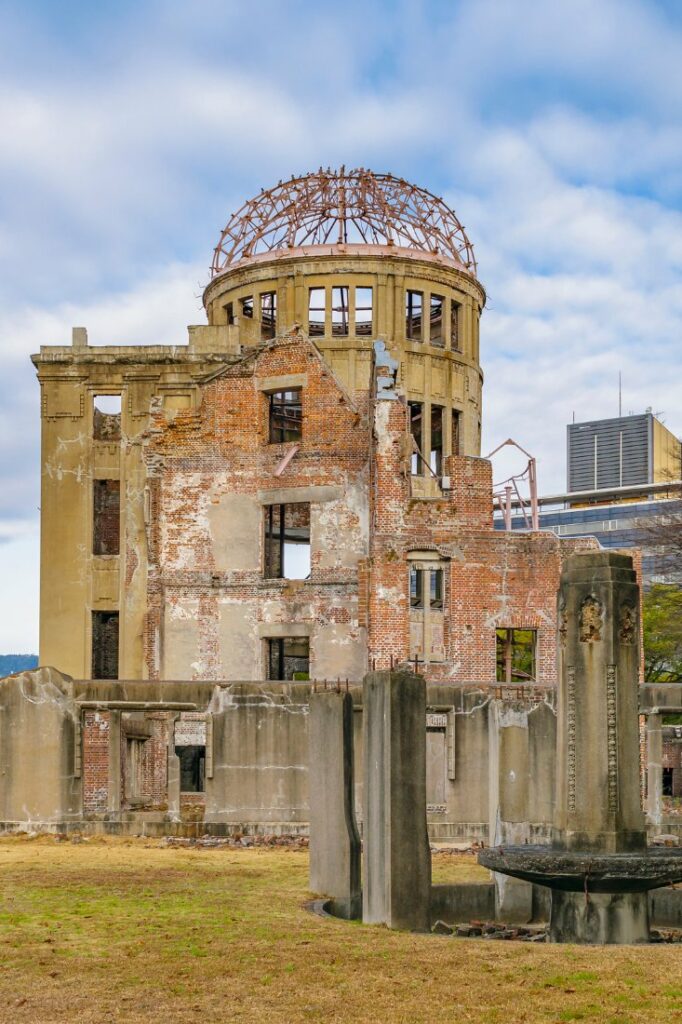
Even though it’s a tough visit, I’d really recommend visiting the Hiroshima Peace Memorial Museum . Following the horrific impacts of the Atomic Bomb during WWII, people come from all around the world to this site and to the museum to learn more about the people who lived here and the long-lasting ramifications.
As I said, it’s a tough visit but you get so much from the day here. One of the best ways of seeing the Peace Memorial is on a walking tour . Then you get to learn all about the history of the place from your local guide.
On the Nozomi Shinkansen, you can get to Hiroshima from Kyoto in one hour and 37 minutes. Alternatively, you can also use your JR Pass on the Hikari Shinkansen which gets to Hiroshima directly in one hour and 45 minutes. There are other options where you can change trains that take around two hours.
Kinosaki Onsen
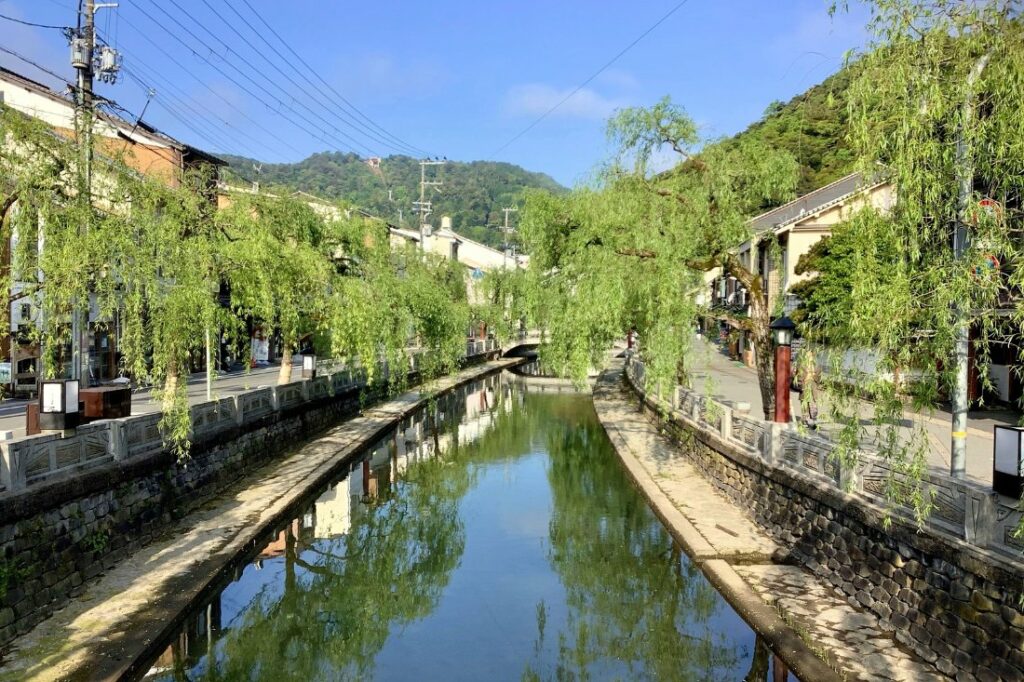
Commonly referred to as the best onsen town in Japan, a day trip to Kinosaki Onsen is a must for anyone spending time in Kyoto. Relax in some of the best hot springs, enjoy the amazing architecture all around you, and let nature do its thing. With seven onsens and plenty of ryokans (traditional Japanese houses to stay at), you can have your pick of the bunch.
To get to Kinosaki, you’ll need to take a two-and-a-half-hour train from Kyoto all the way to the Japan Sea Coast. It’s one of the furthest day trips from Kyoto on this list, but it’s absolutely worth the early start to spend the day in this historic spa town!
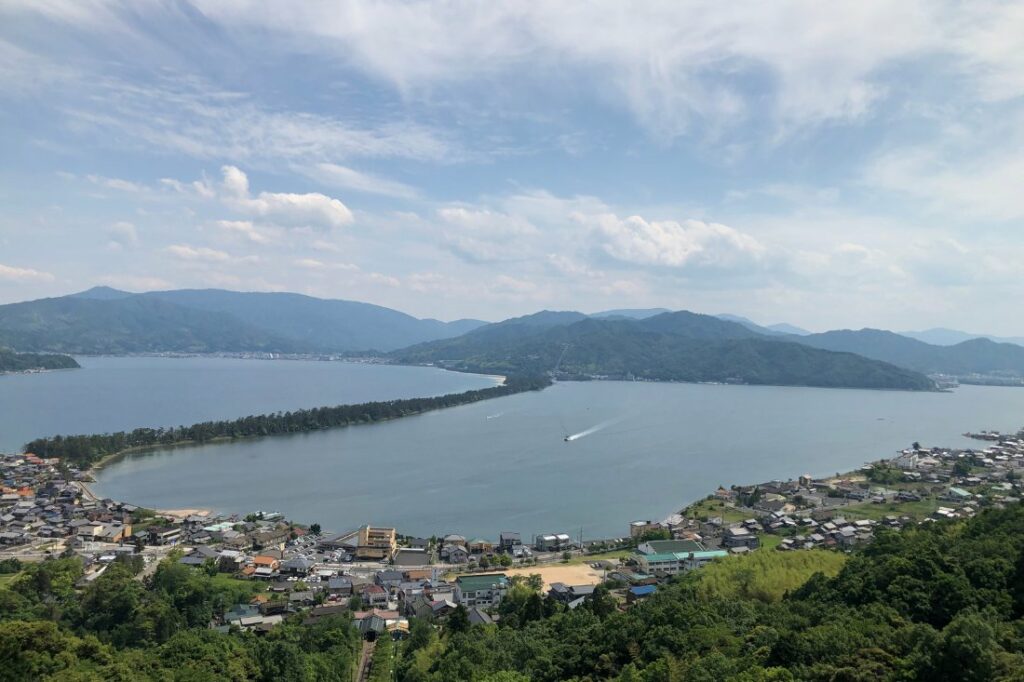
Looking for a day trip out to the seaside? Head to the fishing villages that make up the beautiful Kyotango area. Head up to the Bridge to Heaven, check out the panoramic vistas, and make sure you treat yourself to some of the freshest seafood in Japan. It’s seriously good here.
To get to Amanohashidate (the other name for Kyotango), you need to take a 75-minute train from Kyoto to Fukuchiyama and then swap onto another train to Amanohashidate which takes around 40-60 minutes.
Osaka
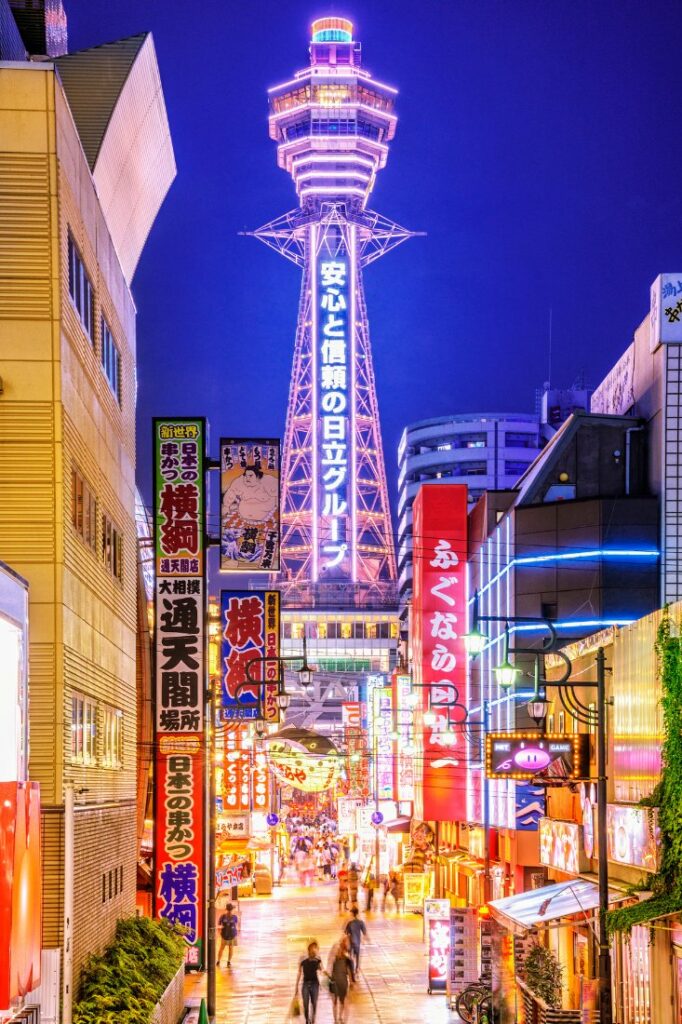
Another amazing day trip from Kyoto is to the bustling Japanese city of Osaka. Known around the world for its awesome food and nightlife scene as well as its historic buildings like Osaka Castle and Shitennoji Temple, there’s a little something for everyone here.
It’s definitely a busy vibe here, with tons of awesome markets, streets filled with vendors, and amazing restaurants. So, to find the best spots, maybe hire a local guide and go on a walking tour of the city. With Osaka only being a 28-minute train ride away from Kyoto, it really is the perfect day trip!
Arashiyama Bamboo Grove
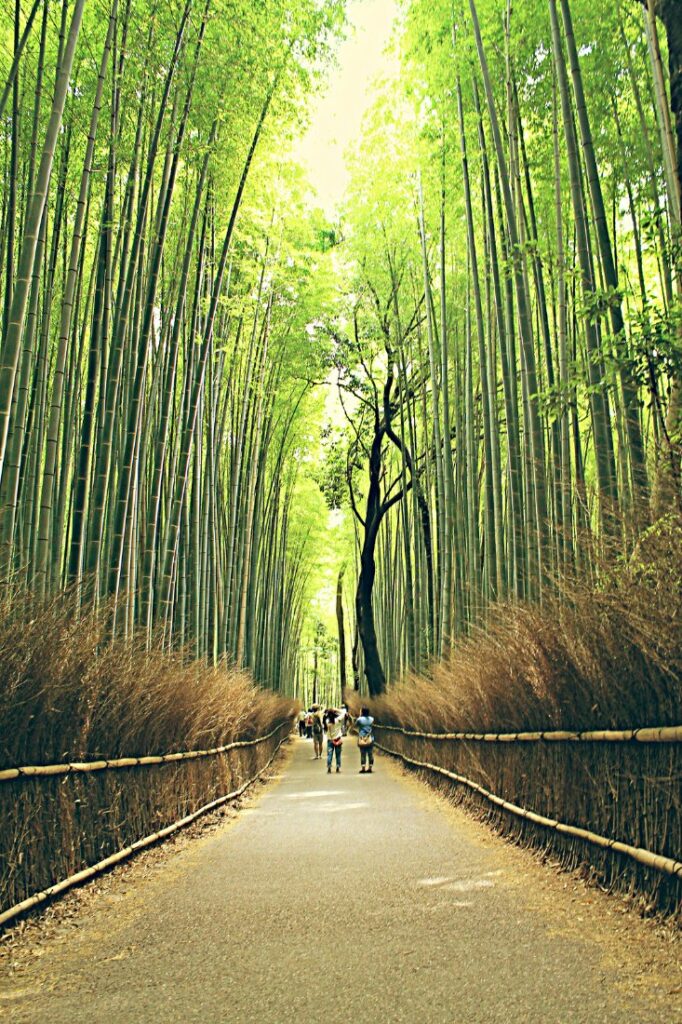
You’ve probably seen photos of the iconic Arashiyama Bamboo Groves on Instagram, and going to visit them on a Kyoto day trip couldn’t be easier. Explore the bamboo groves, check out the UNESCO World Heritage Tenryuji Temple, and experience ultimate tranquility.
To get to the bamboo groves from Kyoto, you can get a JR Sagano line train directly to the Saga-Arashiyama Station and it takes less than an hour. This gives me serious Japanese vibes!
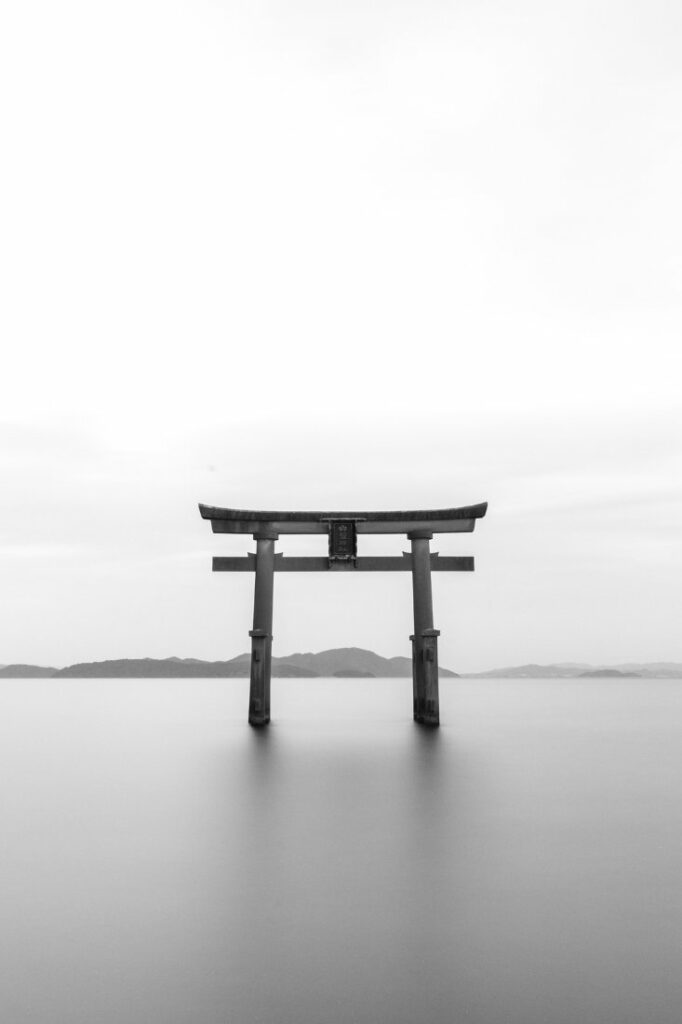
Who doesn’t love a day trip out to a picturesque lake? Well, Lake Biwa has a ton of towns and villages all around it. I’d recommend heading to Takashima, which is home to the mystical floating Shirahige Shrine. It’s a beautiful place to visit before heading to Otsu and the incredible Ishiyama-dera Temple.
It only takes around 45 minutes to get from Kyoto to Takashima, but for a quicker entry to Lake Biwa, head to Otsu which is just a 15-minute train ride from Kyoto.
Himeji Castle
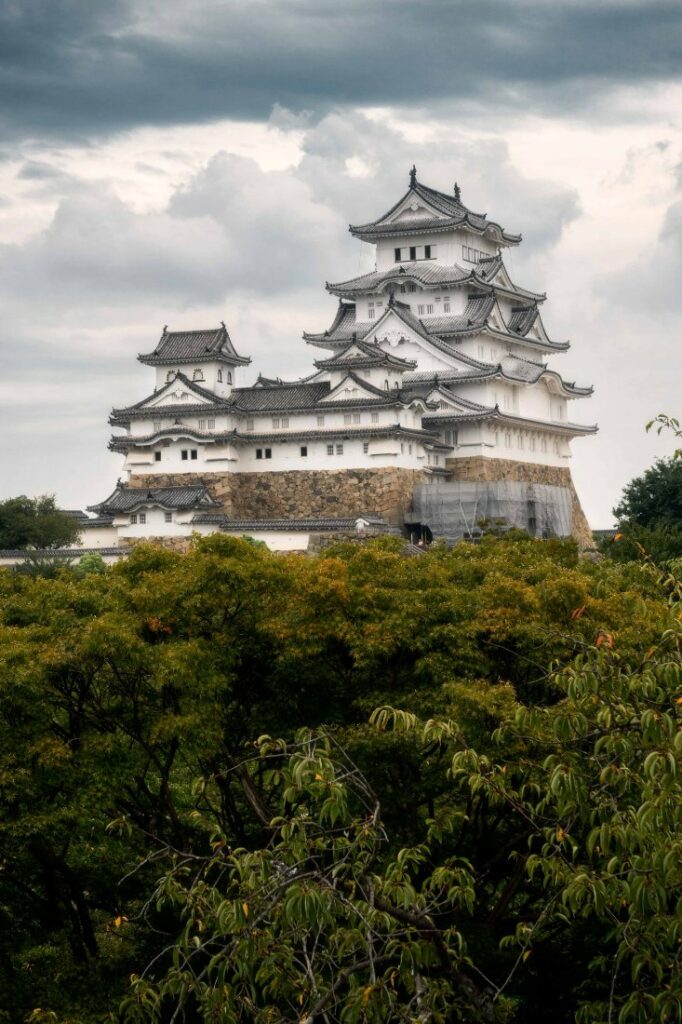
Okay, I love a good castle and I’ve seen plenty of impressive ones during my travels, but the UNESCO World Heritage Himeji Castle is on another level. In fact, it’s one of only 12 original Japanese castles that are still standing and it’s a masterclass in Japanese Feudalist architecture.
There are plenty of direct trains between Kyoto and Himeji that take just under an hour, but a few require a change at Shin-Osaka so watch out for those! From Himeji, it’s a 20-minute walk to the castle itself.
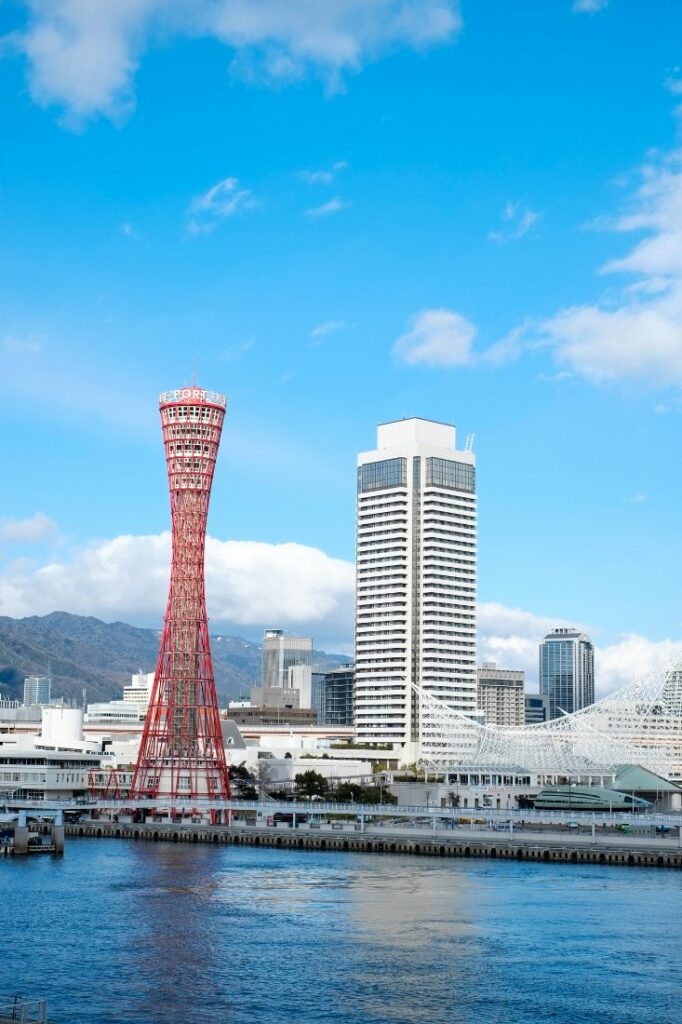
Home to one of the world’s most famous kinds of beef, Kobe is a foodie hotspot that’s also super well-known for its sake breweries and production. This is definitely the place for a food tour with a local as there are quite a few places that are selling low-quality meat to tourists and pass it off as high-end Kobe. Local guides will help you find the hidden gems and leave you happy and full!
From Kyoto, you can take the Shinkansen bullet train to Kobe in under 30 minutes, but if you want to use a JR Pass it’ll take you around 50 minutes.
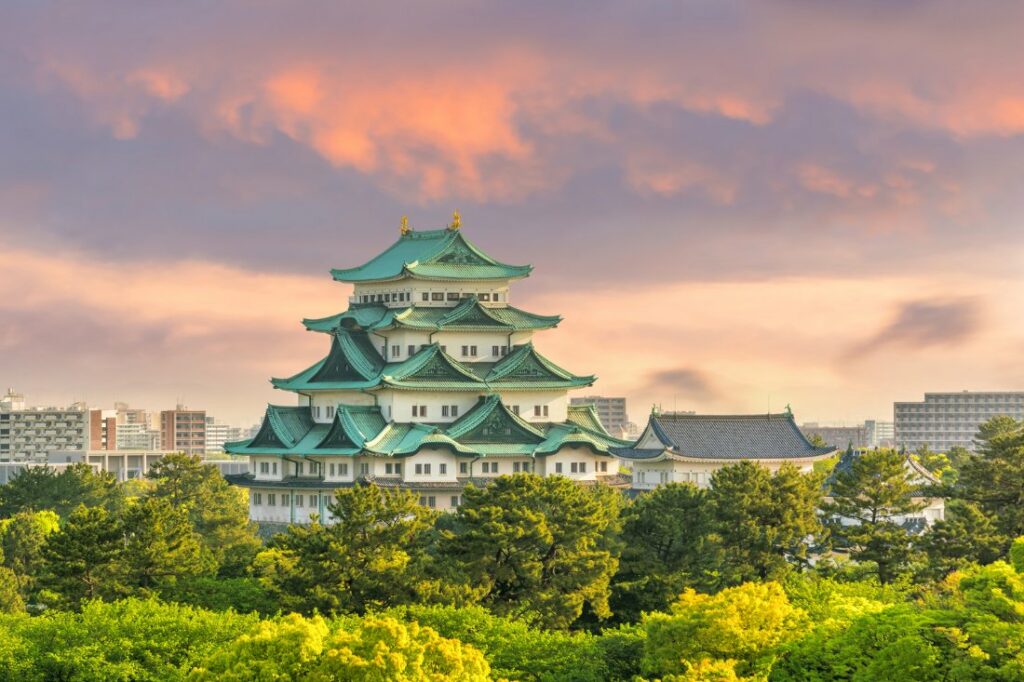
If you love history and old-world architecture, you’re going to love a day trip from Kyoto to Nagoya. With the rebuilt Honmaru Palace being completely reconstructed with traditional methods, it needs to be seen to be believed. The attention to detail is insane!
Love cars? Well, Nagoya is also the home of Toyota and a handful of car and automotive museums that are the perfect excursion for any petrolhead. To get from Kyoto to Nagoya, you can jump on the bullet train for 35 minutes or, if you’re using a Japan Rail Pass, you’ll need the Hikari or Kodama Shinkansen lines which take around 55 minutes in total.
Ishiyama-dera Temple
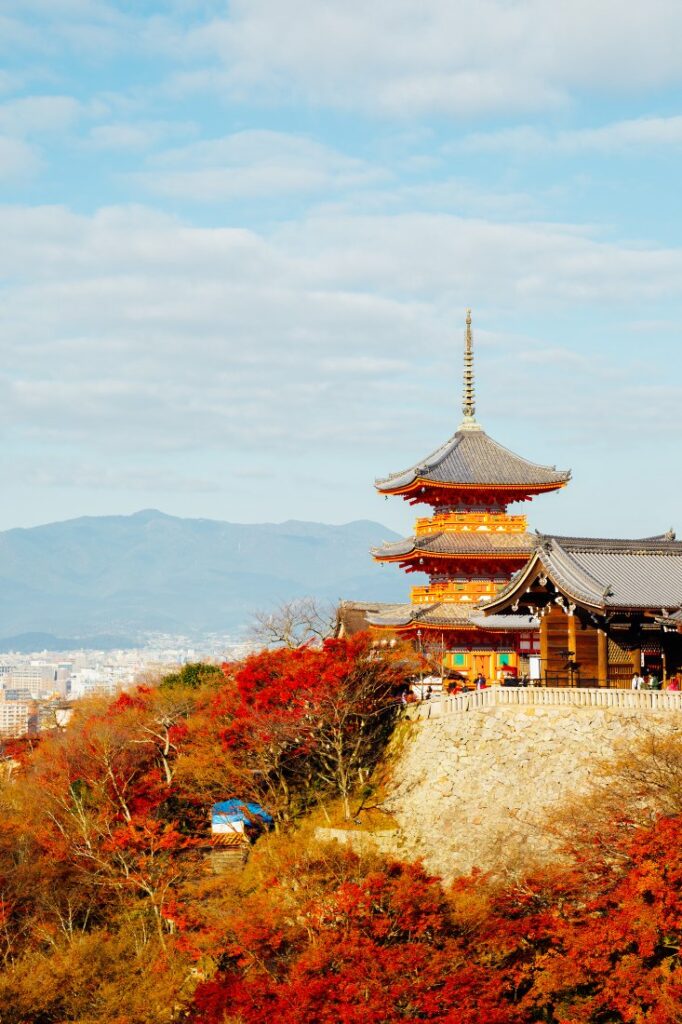
Located in Otsu City right next to the stunning Lake Biwa, the Ishiyama-dera Temple is one of the most popular Buddhist temples in the area. It’s influenced writers and is known as the Temple of the Flowers thanks to the heaps of foliage in the autumn months!
It’s a super quick day trip from Kyoto with the train ride only lasting 15 minutes. You can easily combine a visit to the Ishiyama-dera Temple with a day out on Lake Biwa, so you can have outdoor exploration and history all in one go!
Miyajima Island
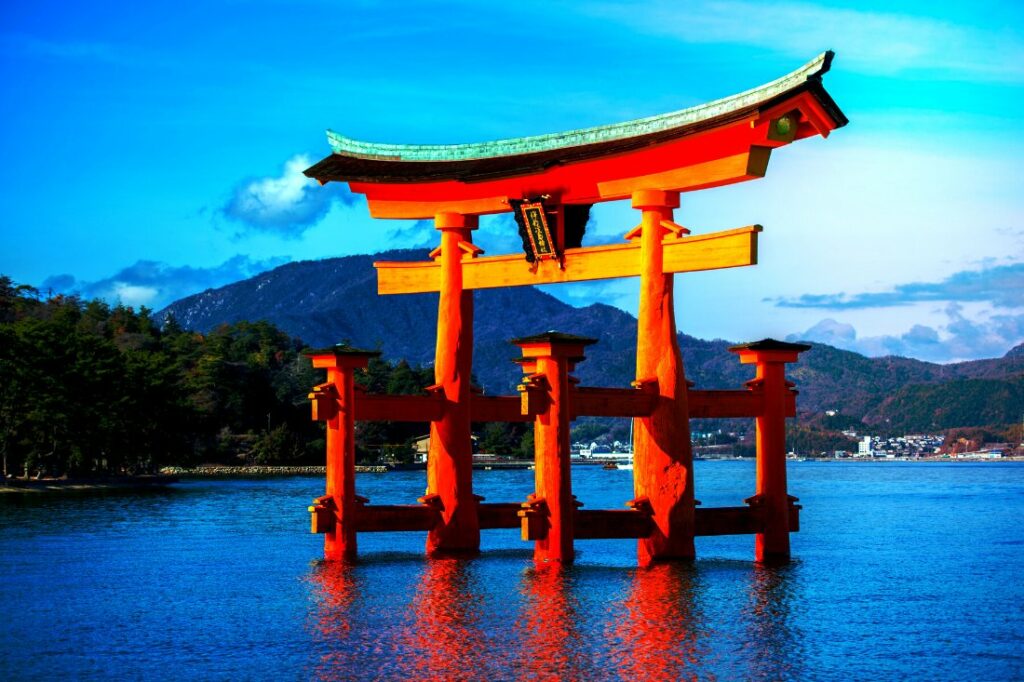
If you don’t mind traveling a little further afield, you should definitely take a Kyoto tour to Miyajima Island. Located in Hiroshima Bay, the island is probably best known for the Itsukushima Shrine, which is a UNESCO World Heritage Site. The island is full of stunning ancient forests and woodlands as well as plenty of temples to explore.
Want to shop until you drop? Head to Omote Sando Shotengai, the main shopping street, where you can enjoy delicious local sweet treats and novelties. To get to Miyajima Island you need to first get the train to Hiroshima and then swap onto a 28-minute train to JR Miyajima Guchi station and then hop a 15-minute ferry to the island.
So there you have it, the best day trips from Kyoto. Which ones are your favourite, or have you been to any of these before? Let me know in the comments below!
Like this blog post? Then Pin it for the future!
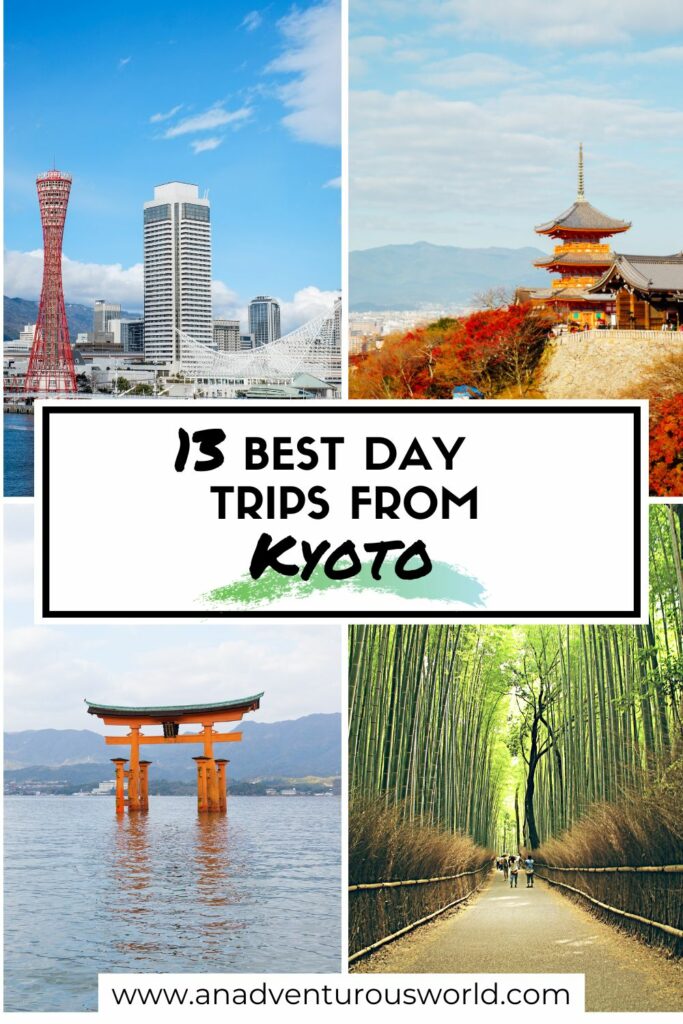
About the Author
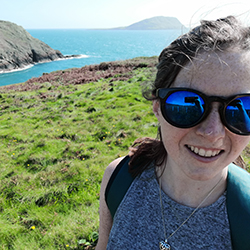
Rebecca Crowe is a freelance writer who specializes in writing about travel, food, and outdoor adventure. She is often found holding a taco, in an airport, or halfway up a climbing wall.
Leave a comment Cancel reply

Home » Travel » Destinations » 13 Easy Day Trips from Kyoto for Nature Lovers
13 Easy Day Trips from Kyoto for Nature Lovers
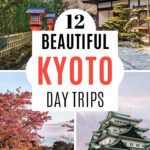
Kyoto is a wonderfully verdant city. Travelers flock here for bamboo groves, flower-lined paths, and tranquil shrine gardens. But if you have some time to spare, there are plenty of easy day trips from Kyoto that will particularly delight nature lovers.
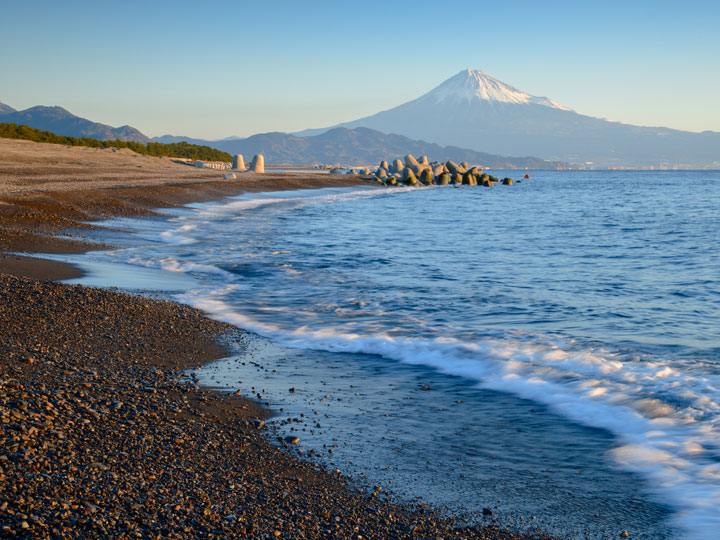
This post contains affiliate links. As an Amazon Associate, I earn from qualifying purchases. For more information, click here .
From sacred deer to waterfront shrines, these places to visit near Kyoto are beautiful and readily accessible by public transit. And if you have a JR pass , you can travel to most of these destinations for free!
Note: This post is part of my alternative 10 day Japan itinerary .
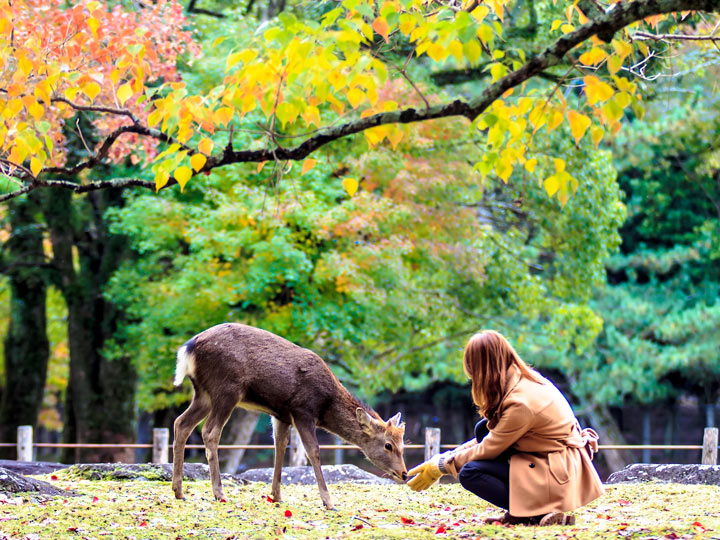
Japan’s ancient capital is easily the most popular Kyoto day trip. After all, who can resist visiting a town where deer freely roam the parks and temple grounds?
Nara’s local deer have been considered divine for over 1,300 years. Harming one was once punishable by death, and comes with hefty fines in modern times.
Today, Nara deer wander parts of the city, particularly near Todai-ji Temple , Kasuga Shrine , and Mount Wakayama . If you want to feed the deer, you can purchase a pack of specially-formulated biscuits from street vendors. Just be sure to feed them quickly, or you might find yourself being chased!
Nara is also home to eight UNESCO sites that make up the Historic Monuments of Ancient Nara. This includes Todai-ji Temple, whose Giant Buddha Hall is the world’s second-largest wooden structure, as well as several other shrines, temples, and a Primeval forest.
Check out my Nara day trip guide to plan your visit!
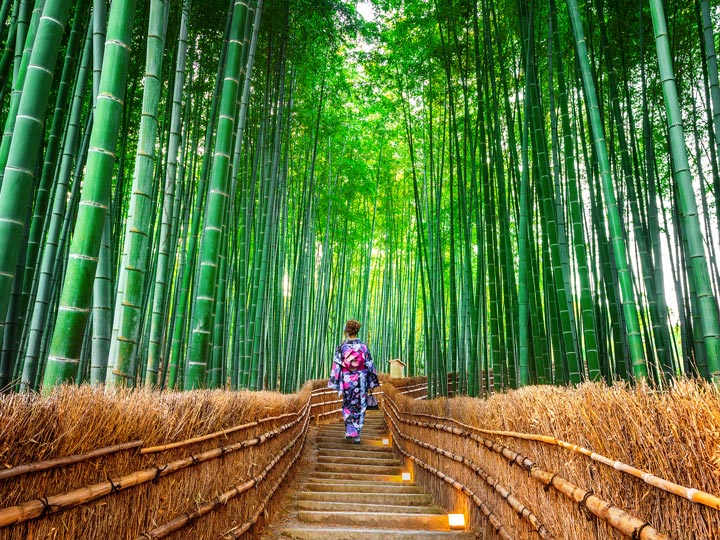
Bamboo groves, sparkling waters, and a monkey mountain: Arashiyama has everything a nature lover could want in a Kyoto day trip!
Sagano Bamboo Forest is one of the most recognizable and famous things in Japan . The experience of walking beneath these towering, swaying green stalks is truly otherworldly. Just be sure to arrive early if you want to avoid the epic crowds.
Situated along the forest’s border, Tenryuji Temple is an impressive complex of ancient buildings with a remarkable Japanese garden. And nearby Hōgon-in makes for a tranquil escape from the district’s more touristy areas.
There’s even more fun to be had across the Katsura River. At the end of the Togetsu-kyō Bridge, you’ll find the entrance to Arashiyama Monkey Park Iwatayama . This area is home to hundreds of macaques, and you’ll see more and more of them romping around as you near the top. From up here, you’ll have spectacular views over Kyoto.
While Arashiyama is technically part of the city, it’s far-west location puts it in Kyoto day trip territory. There are several train lines that run here, with the fastest route via the JR Sagano line from Kyoto Station to Saga-Arashiyama Station (15 minute journey).
Book your Arashiyama Insider’s Walking Tour here!
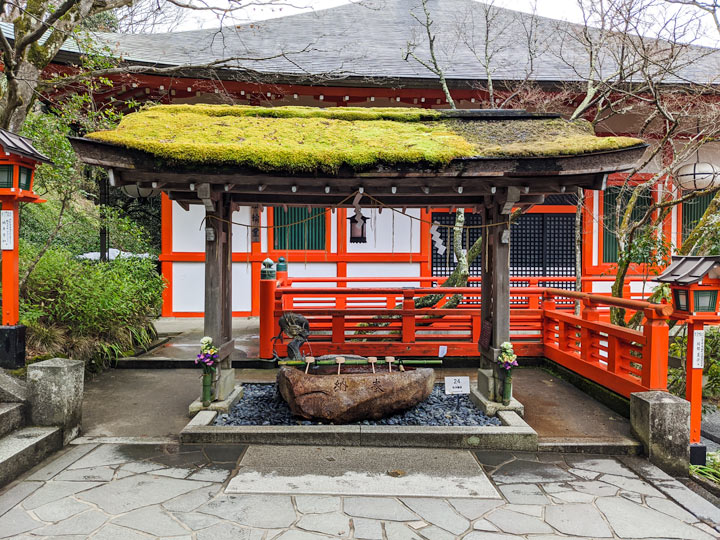
If you’re looking to do some hiking near Kyoto, chart a course for Kurama.
This peaceful mountain village feels surprisingly remote despite its proximity to northern Kyoto. Kurama offers phenomenal hiking trails, relaxing onsen, and mystical temples, and a day trip is just enough time to enjoy the highlights.
Kurama’s serene temple walk is popular with solo travelers in Japan . The winding path up Mount Kurama runs along tranquil streams, beneath towering trees, and past temples big and small. It takes about 90 minutes to hike to the top from Kurama Station , so if you’re short on time or energy, you can take the nearby cable railway to skip most of the trail.
Check out my hiking gear guide for tips on what to bring on the trail!
At the mountain’s summit lies Kurama-dera , an important and sacred Buddhist site that stands for nonviolence and peace on Earth. Just outside the temple entrance, you’ll find the Kongoshō Six-Pointed Star. It’s said that those who stand on the central triangle can feel a surge of energy that connects the mountain to the heavens.
After hiking back down the mountain, stop into Yoshuji cafe for a refreshing vegetarian lunch of soba and tea. I highly recommend ordering a cup of amazake if you visit in the colder months.
Just a short distance up the road, you’ll find Kurama Onsen (Kurama Hot Springs). While it’s listed as a hotel on Google Maps, they have several indoor and outdoor onsen that visitors can pay to access. Admission comes with a towel, and there are coin lockers to store your clothes and belongings. And be sure to learn the onsen etiquette before you visit!
Rebuilding Kurama
In October 2019, several of Kurama’s sacred sites suffered damage from Typhoon Hagibis. If you visit Kurama-dera, please consider donating money to the temple to aid the rebuilding efforts. There are white donation forms on a table inside the temple for 1000円 (1,000 yen) offerings.
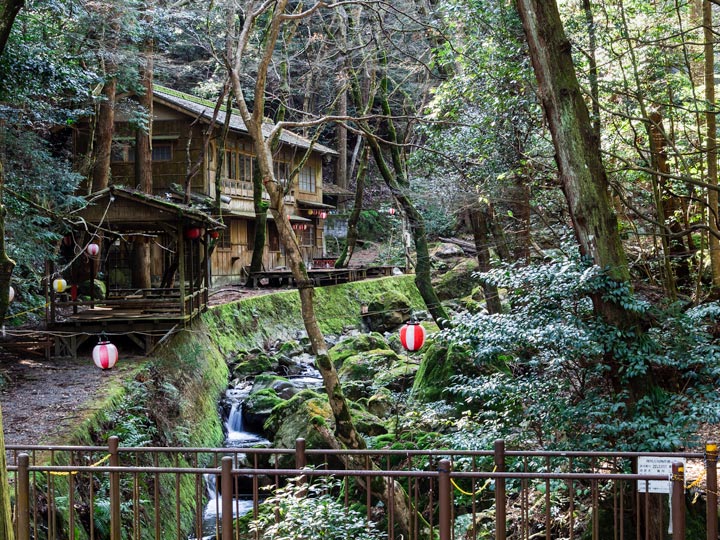
Otsu is a sprawling city sandwiched between Mount Hiei and the western coast of Lake Biwa. There are several enchanting temples and shrines set among the forested mountainside, and they can all be combined into a day trip from Kyoto.
Start by traveling to Biwako-Hamaotsu Station (the Tozei line runs here from central Kyoto and becomes the Keihan-Kaishin line). From here, it’s an easy 15-minute walk to Mii-dera , Japan’s fourth largest shrine. Mii-dera’s complex of shrine buildings stretches from the base of Mount Hiei to an amazing lookout point part-way up the mountain.
After soaking up the panoramic views, head back down to Mii-dera Station and take the Ishiyama Sakamoto line to Omi-Jingu Mae station.
Omi-Jingu is a colorful Shinto shrine dedicated to Japan’s 38th Emperor: Tenji. Unlike the ancient shrines of Kyoto, Omi-Jingu was constructed in the 1940s. However, its serene forest setting and wooden torii gate make it seem much older. The long staircase leading up to the main gate is especially lovely.
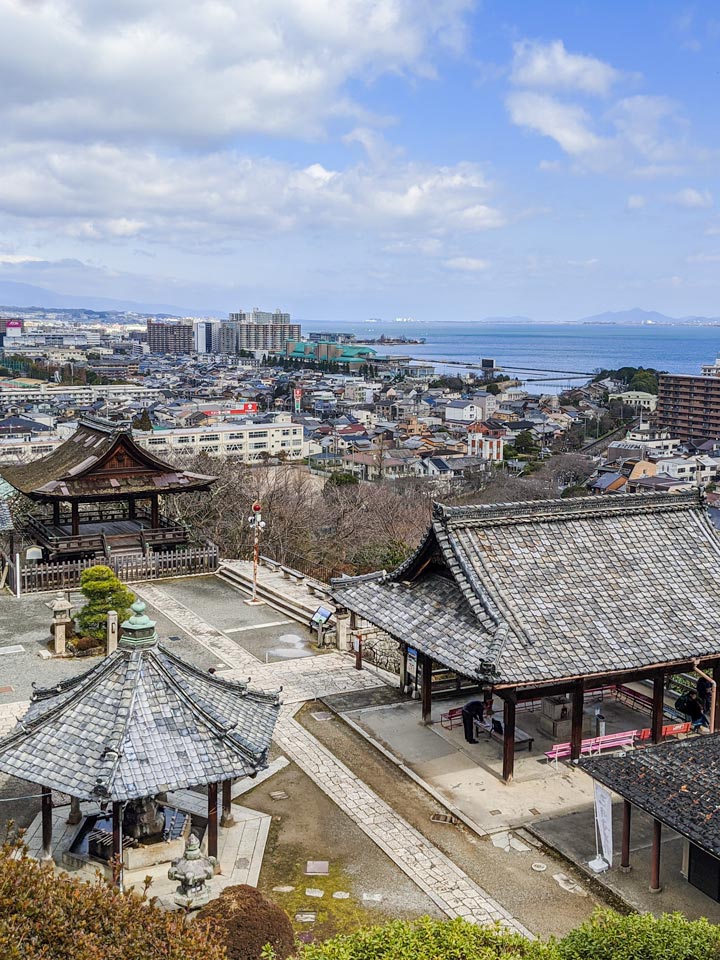
Wrap up your Otsu day trip with a visit to Hiyoshi-Taisha. To get here, take the Ishiyama Sakamoto line from Omi-Jingu Mae station to Sakamoto-hieizanguchi station. The walk from the station to Hiyoshi-Taisha is absolutely beautiful. A small stream runs next to the tree-lined path, with multiple small temples and shrines to see along the way.
Hiyoshi-Taisha was built to protect Mount Hiei from evil forces, and is said to house Sanno Gongen, the mountain’s guardian deity. It’s a pleasant place any time of year, though autumn is particularly amazing thanks to the red maples.
Don’t Forget Your Japan Rail Pass!
Buying a Japan Rail Pass will save you a ton of time and money when traveling across Japan.
I’ve purchased a JR pass for two out of three Japan trips, and here’s why:
– Free bullet trains and reservations : Quickly travel all over Japan to maximize vacation time.
– Easy to use: Just show your pass to the gate attendant and walk to your train!
– Affordable day trips: Visit popular places like Nagoya, Kanazawa, and more without spending a fortune on tickets.
Order your Japan Rail Pass now for speedy delivery!
Enryaku-ji and Mount Hiei
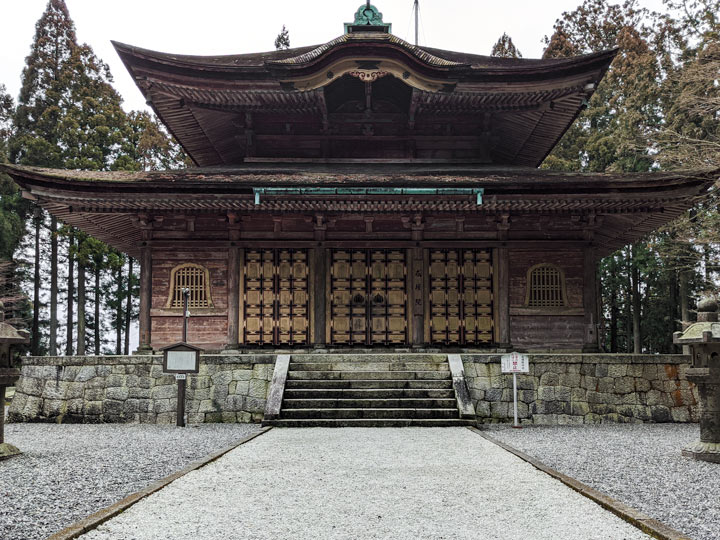
Mount Hiei is a premier hiking destination in Japan. This sacred mountain northeast of Kyoto offers beautiful trails that hikers of all abilities can appreciate.
Those looking for a lengthy hike can follow the Kyoto Isshu Trail segment that runs from Higashiyama (near the Philosopher’s Path) to Ohara. This route will lead you up the mountain to Enryaku-ji , the famous temple complex that sprawls across Mount Hiei.
For those looking to reach Enryaku-ji from Kyoto faster, there’s the Eizan Cable Car and Ropeway . This is a great option for those who’d rather do the easier hike down (or skip hiking entirely).
Enryaku-ji is an ancient Buddhist monastery and a UNESCO World Heritage Site. Rustic walking paths connect the series of temples, halls, and pagodas along the mountaintop. The remarkably tall trees, cool mountain air, and impressive viewpoints make Enryaku-ji a must see for nature lovers.
You could also combine a visit to Mount Hiei and Enryaku-ji with Otsu for one epic day trip from Kyoto. To save time, you’ll need to use the Hieizan-Sakamoto cable car line–the longest cable railway in Japan. It connects Cable Sakamoto station (near Hiyoshi-Taisha) to Cable Enryakuji station, eliminating the hike up/down mountain’s eastern side.
In the warmer months, the cable car stops at multiple points along the mountain, but runs directly to and from Enryakuji in the winter. Ticket machines are located inside both cable stations, and they operate in both Japanese and English.
RELATED: Comprehensive Japan Travel Checklist for First-Time Visitors
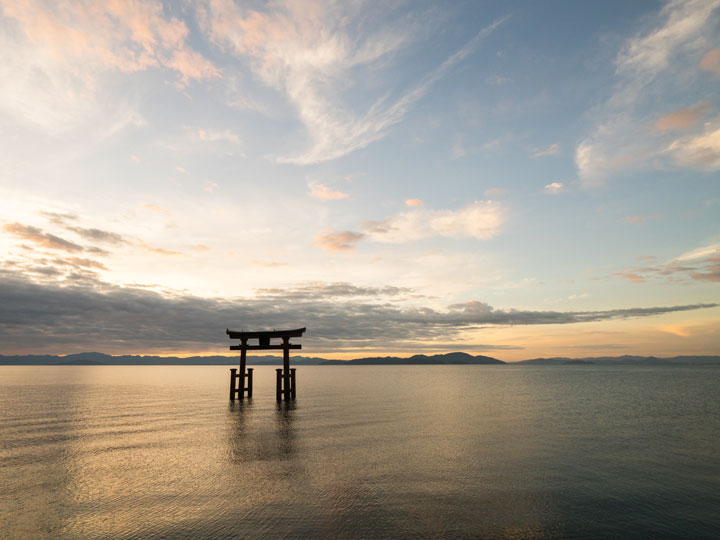
If you’re traveling to Japan in the summer, Lake Biwa among the best day trips from Kyoto. Japan’s largest freshwater lake is a popular destination for locals to swim, kayak, fish, and generally enjoy the gorgeous surroundings.
Scenic points dot Lake Biwa’s coast, including Ishiyama-dera Temple , Kaizu Osaki ’s cherry blossom park, Hikone Castle , and the “floating” Shirahige Torii gate. There are numerous cycling trails around the lake, and bike rental shops are plentiful in the coastal towns.
And if you’re a fan of boat tours, Lake Biwa has several options, including a vintage paddle boat dubbed The Michigan that cruises around the southern waters.
The Lake Biwa area is best explored with a car. However, it’s totally possible to do a Lake Biwa day trip via train and walking, thanks to the train lines that encircle the coast.
Save me for later!
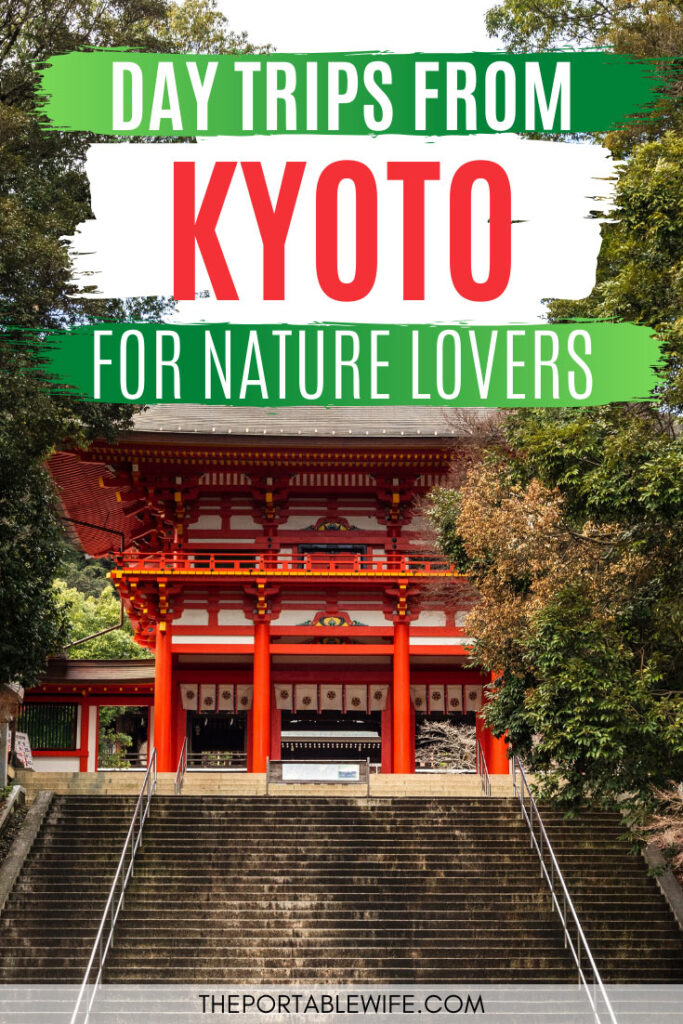
Uji is synonymous with “matcha” in Japan. This riverfront city between Kyoto and Nara is famous for green tea production, and the leaves are used in everything from traditional tea ceremonies to ice cream.
Uji’s matcha dishes are among the must-try foods in Japan , and Nakamura Tokichi serves some of the best. Guests can enjoy matcha tea, soba, jelly, and more in their riverfront dining room. They also have a small shop that sells loose leaf tea, cake, and even matcha-infused chocolate!
Aside from green tea, visitors flock to Uji to see Byodo-in , the iconic 10th century temple featured on the back of the 10 yen coin. Byodo-in’s Phoenix Hall sits on an island amidst a large reflecting pond, and each season brings a beautiful accent to the view: plum and cherry blossoms in spring, wisteria in summer, and red maple in autumn.
Uji’s rich history includes Ujigami (Japan’s oldest Shinto shrine), the Tale of Genji museum , and the Ujigawa Sakura Festival held every April.
Book your Uji tea ceremony and historic walking tour here!
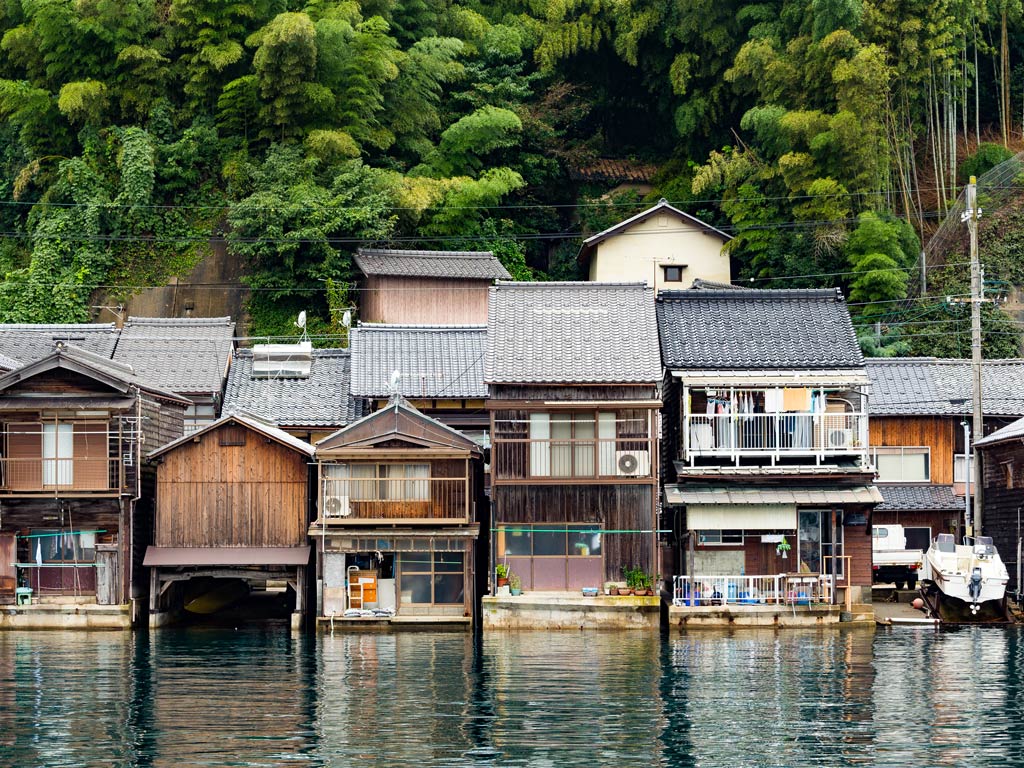
If you’re after day trips from Kyoto that shows you the “real Japan”, head to Ine Funaya. While it takes a bit of effort to get here, it’s worth the journey.
The village’s traditional fisherman’s houses, called Funaya, are right on the water’s edge for easy water access with their boats. The best way to see these unique houses is from the water, and a sightseeing ferry runs throughout the day from Ine Marina.
You can get to Funaya entirely by public transit, though it’s best if you rent a bike for the last leg of the journey. You can take a train from Kyoto to Miyazu Station, followed by one of the local buses to reach Funaya. Buses to get around the area are irregular, so this is a good place to rent a bike and cycle around the village.
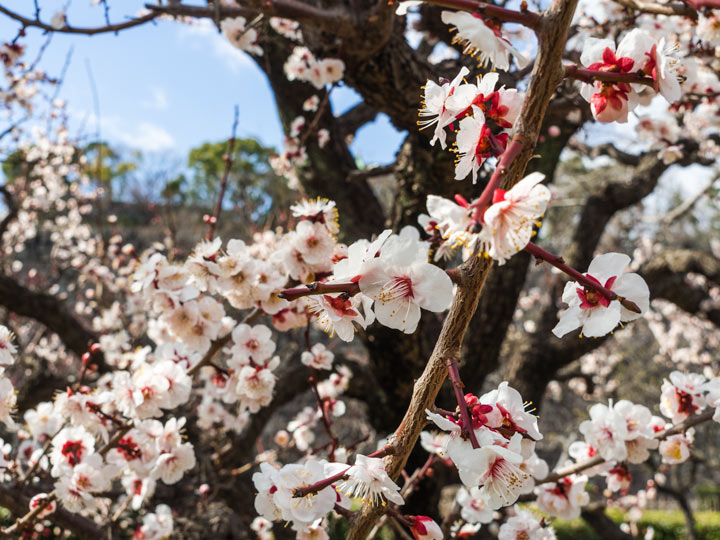
Kameoka is one of those Japan hidden gems that Western travelers rarely visit. But if you’re a fan of scenic travel, you’ll want to schedule a day trip here.
Getting to Kameoka from Kyoto is part of the sightseeing experience. Hop on an old-fashioned steam train at Saga Torokko station and ride the Sagano Scenic Railway into the city. During the 25 minute journey, you’ll pass by cherry blossoms, lush forests, and red maples depending on the season.
Kameoka highlights include Hozu River boat tours through the stunning gorge, Anao Temple , and Izumo-Daijingū Shrine.
If you’re visiting Japan in October , you’re in luck! Autumn brings a spectacular display of colors to Kameoka, especially at Tama-Kokubunji Temple and along the Hozu River. There’s also the Kameoka Festival in late October, which includes a beautiful procession of floats down the city’s main streets.
Still Planning Your Kyoto Trip?
Check out these detailed guides for more inspiration:
– 6 Days in Osaka, Kyoto, and Nara Itinerary
– 2 Days in Kyoto Itinerary
Shizuoka City
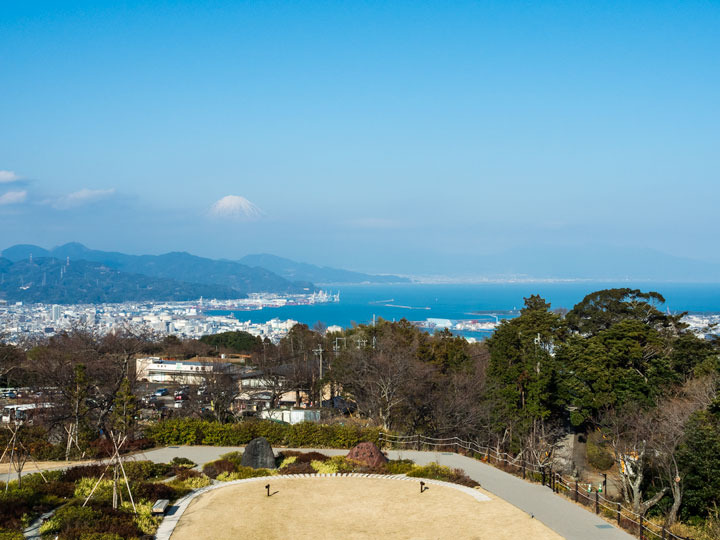
Anyone who loves nature, photography, or green tea needs to put Shizuoka city on their itinerary. Despite its beautiful scenery, many travelers don’t take advantage of this easy day trip from Kyoto.
If you’re longing for great views of Mount Fuji, you’ll love the Nihondaira . This park and observatory sits at the top of Mt. Udo, and it’s totally free to enter. You’ll have 360 degree views over Shizuoka prefecture, along with pretty walking paths dotted with winter sakura blossoms.
Looking at a map, you might think Nihondaira is too far to visit without a car. But fortunately, Japan has amazing public transit, and you can catch a direct bus here from outside Shizuoka station.
Once you’ve soaked up all the Mount Fuji views, you can take a scenic cable car ropeway down to Kunozan Tosho-gu shrine . This colorful complex is where renowned shogunate leader Tokugata Ieyasu is enshrined.
Kunozan is the kind of place that draws people to Japan. Walking through the beautiful grounds, it feels like you’ve entered a secret, magical place. There’s a light, salty scent from the ocean below, and a soft trickle of water from the purification fountains.
And for even more natural beauty, head to Miho no Matsubara . This tree-lined beach is considered one of Japan’s best scenic points, especially when Mount Fuji is visible in the distance on clear days.
Shizuoka city lies on the Tokaido Shinkansen line, and a Hikari train journey from Kyoto Station takes around 90 minutes. JR pass holders can ride for free with no reservation needed.
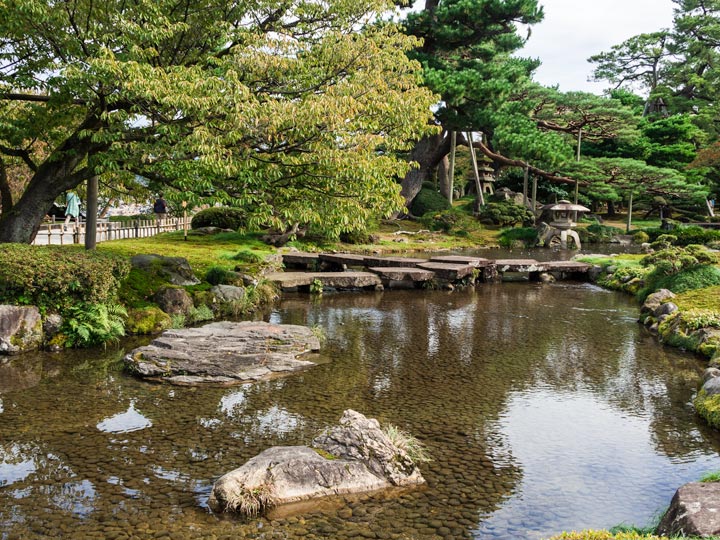
Looking at a map, Kanazawa may seem too far to be a day trip to Kyoto. But thanks to the JR Thunderbird limited express, you can be in Japan’s samurai city within two hours.
Kanazawa is a wonderfully-preserved city on Honshu’s northern coast. It’s best known for its historic “chaya” tea districts with Edo period buildings, ninja and samurai museums, and a vast castle.
But nature lovers should come here to visit Kenroku-en , one of Japan’s three perfect gardens. This vast green space has moss gardens, reflecting pools, a tea house, and several panoramic overlook points. Anyone who appreciates Japanese gardens should have Kenroku-en on their bucket list.
Check out my Kanazawa day trip itinerary to plan your visit!
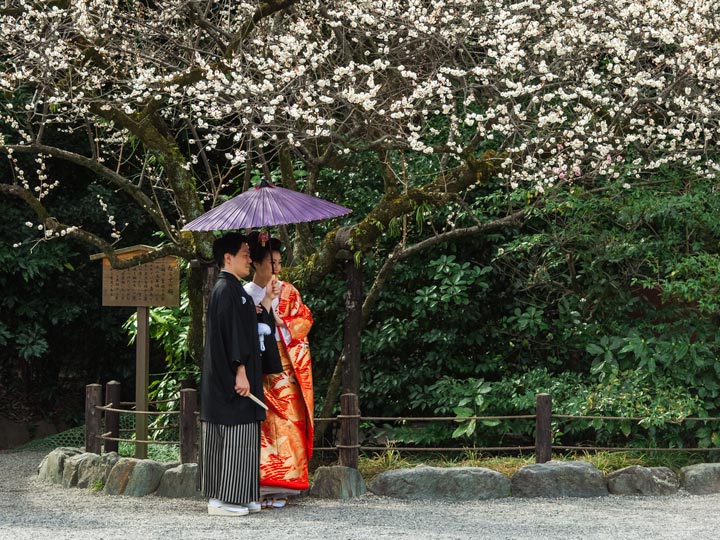
Thanks to its impressive castle, Nagoya is a popular place to visit between Tokyo and Kyoto . But there’s more to this city than pretty architecture.
Located in the middle of the bustling city, Atsuta Jingu is a peaceful haven of nature. Cypress trees tower behind the main hall, and plum blossoms add pops of color throughout the grounds. Multiple walking paths criss cross the area, passing through dense foliage full of birdsong.
Just north of Nagoya Castle lies Meijo Park . In the warmer months, you’ll find families enjoying picnics, walking dogs, and riding bikes. It’s a popular cherry blossom viewing spot as well.
And of course, there’s Nagoya Castle Park . The area surrounding the castle has a mix of Japanese gardens, ponds, hanging wisteria, and even a plum blossom grove.
To reach Nagoya from Kyoto, take the Hikari train on the Tokaido shinkansen line from Kyoto Station to Nagoya Station. The journey takes about 40 minutes and doesn’t require a reservation (though it can help in the busy season).
Fushimi Inari Shrine
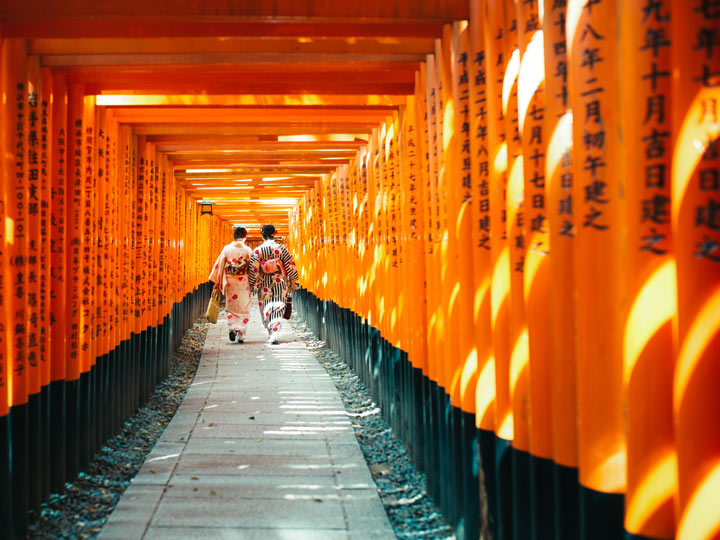
According to Japan’s tourism bureau, Fushimi Inari shrine is the country’s most popular destination.
It’s seemingly endless vermillion torii gates–more than 10,000–line the path up Mount Inari, linking the main Shinto shrine at the base to smaller ones further up the mountain. You’ll also see numerous fox statues in the area that represent the god Inari, protector of rice growing.
But if you want to experience Fushimi Inari without being part of the world’s longest conga line, you’re in luck! There’s a secret hiking trail that runs through lush forests and bamboo. The trail eventually links up with the main shrine path, so you’ll still get the iconic experience of passing through the torii gate tunnel.
Book your Fushimi Inari hidden hiking tour here!
Have you booked you Kyoto accommodation yet?
I’ve been to Kyoto a few times, and my favorite place to stay is Kyoto Traveler’s Inn .
It’s conveniently located across from a sightseeing loop bus stop and a giant torii gate (so you’ll never get lost!). Gion and Pontocho are a short walk away. Plus, they offer a mix of Western and Japanese-style rooms depending on your preference. And the staff are super friendly and speak enough English to help you navigate the city.
Book your stay at Kyoto Traveler’s Inn now!
Leave a Comment Cancel reply
This site uses Akismet to reduce spam. Learn how your comment data is processed .
Kyoto 5 days itinerary – all 17 Beautiful UNESCO World Heritage Sites
LAK Itinerary 5 days itinerary , Itinerary , Japan , Kansai , Kyoto , Kyoto itinerary , UNESCO , World Heritage Sites 0
Embark on a captivating 5 days itinerary through Kyoto , exploring all 17 UNESCO World Heritage Sites , including the Historic Monuments of Ancient Kyoto . This carefully curated itinerary takes you through iconic temples, serene shrines, and stunning gardens, showcasing the city’s rich cultural heritage. From the majestic Kiyomizudera and the Golden Pavilion to the tranquil moss gardens of Saihō-ji , each day offers a unique glimpse into Kyoto’s history and beauty. Experience the harmonious blend of nature and architecture at renowned sites like Enryaku-j i and Byōdō-in , making this itinerary a must for history enthusiasts and cultural explorers alike.
Day 1: Higashiyama and Northern Kamo River
Major Destinations: 5 UNESCO World Heritage Sites
Kiyomizu-dera (清水寺)
- Morning: Start your day at Kiyomizu-dera , famous for its wooden stage that offers breathtaking views of cherry and maple trees. Explore the main hall and the Otowa Waterfall.
- Tips: Arrive early to avoid crowds.
- Transportation: Take the bus (Kyoto City Bus #100 or #206) from Kyoto Station to Kiyomizu-dera. Get off at “Kiyomizu-michi” bus stop.

Jishō-ji (慈照寺) a.k.a. Temple of the Silver Pavilion (銀閣寺, Ginkaku-ji)
- Late Morning: Visit Ginkaku-ji, known for its beautiful gardens and the Silver Pavilion . Enjoy the serene atmosphere and the view from the hilltop.
- Transportation: From Kiyomizu-dera, walk back to the bus stop and take Bus #100 to Ginkaku-ji, getting off at “Ginkaku-ji-mae” stop.
- Lunch Nearby: Try local soba noodles at a nearby restaurant.

Kamowakeikazuchi Shrine (賀茂別雷神社) a.k.a. Kamigamo Shrine (上賀茂神社)
- Early afternoon: Head to Kamigamo Shrine , one of the oldest Shinto shrines in Japan . Explore its beautiful grounds and the unique architecture.
- Transportation: Take Bus #204 from Ginkaku-ji to Kamigamo Shrine, getting off at “Kamigamo-jinja” stop.

Kamomioya Shrine (賀茂御祖神社) a.k.a. Shimogamo Shrine (下鴨神社)
- Afternoon: Visit Shimogamo Shrine , known for its tranquil forest setting and ancient trees.
- Transportation: From Kamigamo Shrine, take Bus #4 or #205 to Shimogamo Shrine, getting off at “Shimogamo-jinja” stop.

Nijō Castle (二条城, Nijō-jō)
- Late afternoon: End your day at Nijō Castle , a UNESCO site famous for its beautiful gardens and “nightingale” floors that chirp when walked upon.
- Transportation: Take Bus #12 from Shimogamo Shrine to Nijō Castle, getting off at “Nijō-jō-mae” stop.

Day 2: Northern Arashiyama and Mount Takao
Major Destinations: 4 UNESCO World Heritage Sites
Rokuon-ji (鹿苑寺) a.k.a. Temple of the Golden Pavilion (金閣寺, Kinkaku-ji)
- Morning: Begin your day at Kinkaku-ji , an iconic Zen temple covered in gold leaf. Stroll through the beautiful gardens surrounding the temple.
- Transportation: Take Bus #101 or #205 from Kyoto Station to Kinkaku-ji, getting off at “Kinkaku-ji” stop.

Ryōan-ji (竜安寺、龍安寺, The Temple of the Peaceful Dragon)
- Late Morning: Visit Ryōan-ji , famous for its rock garden . Spend time reflecting in this tranquil setting.
- Transportation: From Kinkaku-ji, walk to Ryoanji Temple (10-15 minutes) or take Bus #101 to Ryoan-ji, getting off at “Ryoan-ji” stop.

Ninna-ji (仁和寺)
- Afternoon: Explore Ninna-ji, known for its five-story pagoda and seasonal gardens. Take your time to enjoy the peaceful atmosphere.
- Transportation: Walk from Ryōan-ji to Ninna-ji (about 20 minutes), or take Bus #50 from Ryoan-ji to Ninna-ji, getting off at “Ninna-ji” stop.

Kōzan-ji (高山寺)
- Late Afternoon: Head to Kōzan-ji, located in the mountains. Visit the temple known for its beautiful gardens and the famous “Shōnen-ji” paintings.
- Transportation: Take a bus from Ninna-ji to the nearest stop for Kōzan-ji (via the Randen Arashiyama Line, then a short bus ride). Alternatively, hire a taxi for convenience.

Day 3: Southern Arashiyama and Kyoto Station
Tenryū-ji ( 天龍寺 ).
- Morning: Start at Tenryū-ji, a major Zen temple with stunning gardens and views of the Arashiyama mountains.
- Transportation: Take the JR San-in Line from Kyoto Station to Saga-Arashiyama Station. Tenryū-ji is a short walk from there.

Saihō-ji ( 西芳寺 ) a.k.a. “Moss Temple” ( 苔寺 , Koke-dera)
- Late Morning: Visit Saihō-ji, known for its lush moss gardens. Note that reservations are required to visit.
- Transportation: From Tenryū-ji, take a taxi to Saihō-ji as it’s a bit remote.
Kyōōgokoku-ji ( 教王護国寺 ) a.k.a. Tō-ji ( 東寺 )
- Afternoon: Head to Tō-ji , famous for its five-story pagoda and the bustling flea market if you visit on the 21st of the month.
- Transportation: Return to Saga-Arashiyama Station, take the JR San-in Line back to Kyoto Station, and then take the Kintetsu Line to Tō-ji. It’s a short walk from the station.

Nishi Hongan-ji ( 西本願寺 )
- Late Afternoon: Explore Nishi Hongan-ji, an important temple known for its beautiful architecture and tranquil atmosphere.
- Transportation: From Tō-ji, take a short walk to Nishi Hongan-ji, which is nearby.

Day 4: Enryaku-ji
Major Destinations: 1 UNESCO World Heritage Site
Enryaku-ji ( 延暦寺 )
- All Day: Take a trip to Mount Hiei to visit Enryaku-ji , a significant temple complex with stunning views and historical importance. Spend the day exploring its various halls and gardens.
- Transportation: Take the JR train from Kyoto Station to Hieizan Sakamoto Station (on the Keihan Line), then take the Eizan cable car up to Enryaku-ji. Enjoy the scenic ride and explore the temple complex.

Day 5: Southern Kyoto and Uji
Major Destinations: 3 UNESCO World Heritage Sites
Daigo-ji ( 醍醐寺 )
- Morning: Start your day at Daigo-ji, known for its beautiful cherry blossoms and historical significance. Explore the various buildings and gardens.
- Transportation: Take the bus from Kyoto Station (Bus #45) to Daigo-ji, getting off at “Daigo-ji” stop.
Byōdō-in ( 平等院 )
- Afternoon: Head to Uji to visit Byōdō-in, famous for its Phoenix Hall and beautiful gardens. Learn about its history and enjoy the serene surroundings.
- Transportation: From Daigo-ji, take Bus #202 or a taxi to Uji. Byōdō-in is a short walk from Uji Station.

Ujigami Shrine ( 宇治上神社 )
- Late Afternoon: Visit Ujigami Shrine , one of the oldest shrines in Japan. Enjoy its peaceful setting and historical architecture.
- Transportation: Ujigami Shrine is within walking distance from Byōdō-in, about a 10-minute walk.

Additional Tips:
- Transportation: Use the subway and bus systems for easy access to these sites. Consider purchasing a Kyoto transport pass for convenience.
- Timing: Start your days early to maximize your time at each site, especially the more popular ones.
- Reservations: For certain temples like Saihō-ji , make reservations in advance.
- Cultural Etiquette: Be respectful at all sites, especially in places of worship.
Enjoy your journey through the rich history and stunning beauty of Kyoto UNESCO World Heritage Sites through these 5 days itinerary!
Where should you stay in Kyoto for this 5 days itinerary for all 17 UNESCO World Heritage Sites in Kyoto?
For a convenient and enjoyable stay in Kyoto that complements your 5-day itinerary exploring all 17 UNESCO World Heritage Sites, consider these areas and accommodations:
Kyoto Station Area
- Why Stay Here: Central transportation hub with easy access to buses and trains, making it convenient to reach all UNESCO sites.
- Hotel Granvia Kyoto : A luxury hotel located directly above Kyoto Station, offering comfortable rooms and excellent amenities.
- Kyoto Century Hotel : A modern hotel with spacious rooms and easy access to public transport.
Gion District
- Why Stay Here: Known for its historic charm, traditional wooden machiya houses, and proximity to several cultural sites.
- Gion Hatanaka : A ryokan offering traditional Japanese hospitality with kaiseki dining experiences.
- Hotel Mume : A boutique hotel that blends modern comforts with traditional aesthetics, located in the heart of Gion.
- Why Stay Here: Close to several UNESCO sites in the Arashiyama area, including Tenryū-ji and the bamboo grove.
- Suiran, a Luxury Collection Hotel : A beautiful hotel with traditional ryokan elements and stunning views of the river.
- Arashiyama Benkei : A charming ryokan with a cozy atmosphere and easy access to local attractions.
Higashiyama
- Why Stay Here: A picturesque neighborhood that provides easy access to Kiyomizu-dera and other historic sites.
- Hoshinoya Kyoto : A luxurious riverside retreat offering traditional ryokan experiences and stunning views.
- Gion Shinmonso : A traditional inn with easy access to both Gion and Higashiyama attractions.
Northern Kyoto (Near Kinkaku-ji)
- Why Stay Here: Close to several key UNESCO sites like Kinkaku-ji and Ryōan-ji.
- Kyoto Garden Ryokan Yachiyo : A charming ryokan with beautiful gardens and traditional accommodations.
- Rihga Royal Hotel Kyoto : Offers a blend of modern amenities and traditional Japanese hospitality, conveniently located near public transport.
Tips for Choosing Your Accommodation
- Book in Advance: Kyoto can be busy, especially during peak seasons, so securing your stay early is advisable.
- Check Reviews: Look for recent guest reviews to ensure quality and service.
- Consider Amenities: Depending on your needs, check for amenities like free Wi-Fi, breakfast options, and on-site dining.
Staying in any of these areas will enhance your experience, providing easy access to Kyoto rich cultural heritage and all 17 UNESCO World Heritage Sites on this 5 days itinerary.

Share this:
Discover more from mapleventurous.
Subscribe to get the latest posts sent to your email.
Type your email…
Related Posts

The Best one day itinerary of Nikko

The Best 3 days itinerary of Kyoto

The most wonderful one day itinerary of Melaka

The most amazing one day itinerary of Kuala Lumpur

The Best One Day Itinerary of Free Attractions in Kyoto

The Most Amazing One Day Itinerary at Nara Park
Leave a reply cancel reply.
Subscribe now to keep reading and get access to the full archive.
Continue reading
Hrmm. Looks like you're using an older browser, which means some site features may not work they way they should. For the full gadventures.com experience, we recommend upgrading to the most recent version of your browser . It's worth it! Honest!
View all tours
North America
Central america & caribbean, south america, north africa & middle east.
Few travellers make it to this icy continent, but the lucky ones who do get to explore a frozen Eden ruled by the elements and teeming with wildlife.
G Adventures Land
G adventures sailing & cruises, g adventures private travel.
Whether it’s a family retreat or a girls trip, you can surround yourself with a hand-picked crew and customize a tour that fits you all perfectly.
The Geluxe Collection
Our new line of premium active adventures is officially here. With perfectly paced itineraries, one-of-a-kind accommodations and elevated dining, this is adventure at its finest.
National Geographic Journeys
Go deeper into the cultures and habitats of the places we explore. More is included and you’ll enjoy greater hands-on exploration, interactions with local experts, and freedom to roam.
National Geographic Family Journeys
Are you an adventure-loving family in search of meaningful ways to discover the world together? These tours are specially designed for travellers seven and up and their inquisitive families.
Jane Goodall Collection
Step deeper into the animal kingdom while respecting all of its inhabitants. Our incredible collection of wildlife-focused tours is endorsed by the world-renowned ethologist.
Roamies by Hostelworld
The thrill of adventure. The awesomeness of hostels. Get ‘em both on these immersive small group trips for 18 to 35-year-old travellers.
Why choose us
As the leader in small group travel for 30 years, we know how to do it right: flexible itineraries, freedom to roam, safety, peace of mind, and locally based guides.
Change the world just by having the time of your life. When you travel with us, you become a force for good by acting responsibly and creating positive impact.
Together with our non-profit partner, Planeterra, we ensure local communities touched by our tours benefit from our visits in as many ways possible.
Trees for Days
Leave your destination even greener than you found it! For every day on tour, we’ll plant a tree in your honour and ensure that our forests get to live their best lives.
Travel resources
Last minute deals.
Looking to have the time of your life in the next 90 days or so? You can save big if you’re ready to book now.
Loyalty discount
Back home from a G Adventures tour? Submit a quick trip evaluation to save 5% on your next tour with us.
Student discount
Got proof that you’re pursuing higher learning? Then we’ve got a travel voucher with your name on it.
All travel deals
New ways to save pop up all the time. Here’s where you’ll find every hot deal in one easy place.
Croatia: Walking & Island-Hopping Along the Dalmatian Coast
9 days, dubrovnik to trogir.

- Full itinerary
- Tour details
Croatia’s stunning coastline calls on this nine-day adventure through historic towns and dazzling Adriatic islands. Explore Dubrovnik from every angle — on foot, by kayak, and from a cable car ride to the mountain's peak. Hop on hydrofoils and high-speed catamarans to discover the islands of Korčula and Hvar, then sail by private boat to the Pakleni Islands for a day of walking, swimming, and sun-soaked bliss. Wander Split’s old town and hike to the breathtaking Krka Waterfalls. With a perfect blend of action, culture, and mouthwatering food, Croatia will capture your heart and leave you craving more.
Dubrovnik to Trogir
Is this tour for me, travel style: the geluxe collection.
With perfectly paced itineraries, one-of-a-kind accommodations, and comfort at their very core, these premium active trips are adventure at its finest.
Service Level: Upgraded
Quality accommodations and more inclusions than on other G Adventures tours, like meals, private transport, and activities.
Physical Rating: 3 - Average
Some tours may include light hiking, biking, rafting, or kayaking in addition to walking.
Trip Type: Small Group
Small group experience; Max 16, avg 12
Age requirement: 18+
Check your visa requirements.
Before booking, use our handy entry requirements tool so you know which documents you need to enter and travel through the countries on your trip.
Chief Experience Officers with a capital E
Call us biased but we've seen 30+ years of proof: our Chief Experience Officers are the best travel guides on the planet. And on Geluxe trips, you'll be led by the most experienced CEOs we have.
CEO Costa Rica
See how your trip uplifts communities
In a number of impactful ways, your adventure directly benefits the local people and places we visit.
Help us spread love around the world with Trees for Days. Together with Planeterra, we'll plant one tree in your name for every travel day.
Trees planted for this trip: 9

Places visited
Day 1 dubrovnik: a gem of the adriatic.
Take in the long stretch of the Adriatic coastline as your plane makes it's descent As the high stone walls and medieval buildings come into view, imagine life here thousands of years ago and perhaps even the occasional dragon beating its wings in the distance. We welcome you to Dubrovnik and to Croatia, and we invite you to unleash your sense of adventure and imagination as you discover the best of the country's coast and islands.
Exclusive Inclusions:
Meals included:, day 2 dubrovnik: from below and above.
Often the best views of the city are actually from outside of it. Put that theory to the test as you paddle a kayak along the historic city walls, exploring hidden caves and stopping to swim and snorkel. Back on dry land, you'll swap the views from the water for views from above as you ride a cable car up nearby Mount Srđ for breathtaking vistas of Dubrovnik and the surrounding islands.
Day 3 Korčula: Along the Dalmatian Coast
Dubrovnik begs to be further explored and you'll have some extra time to do so today on your own. Soak in every last bit of the city's beauty before taking to the sea and heading up the Dalmatian Coast to the island of Korčula for your first taste of life on the Croatian isles.
Day 4 Korčula: Your OMG Day
Discover Korčula today on your own terms. Choose between 2 activities which will get you outdoors and active as well as sampling some of the regions delicacies. Whichever you choose, your body,, mind and stomach will be forever grateful.
Day 5 Hvar: Island Life
The Dalmatian Islands are nothing short of spectacular and each one is quite unique with its own feel. Swap Korčula Island for Hvar and see for yourself, exploring the town of Hvar as well as taking in the island's gorgeous beaches and lively nightlife.
Day 6 Hvar: A Day on the Water
Feel the wind on your face and taste the sea in the air as you head out from Hvar to explore some of the nearby islands. You'll spend the day in and out of the water, exploring hidden coves, swimming from the boat and hiking to a secluded beach. If you. could imagine a perfect day actively exploring and island-hopping in the sun and sand, this would be it.
Day 7 Trogir: Explore Split
Back on the mainland, the city of Split is the largest along Croatia's coast, where you'll be immersed in its history and beautiful architecture in the old part of the city. An important maritime transport hub in the region, Split occupies a strategic position on a peninsula that juts out into the Adriatic Sea, and has been inhabited for over 2000 years.
Day 8 Trogir: Krka Waterfalls and National Park
Immerse yourself in Croatia's natural beauty on a hike through a lush forest, following a river until the sight of a breathtaking waterfall comes into view. Enjoy the moment and the sound of the cascading water before re-entering the forest and allowing the sound of the birds to take over. Back in urban civilization, take in more beautiful architecture and historical landmarks in Sibenik on the way back to Trogir.
Day 9 Trogir
The adventure finishes today, and you can depart at any time.
What's Included
- Your Welcome Moment: Welcome Moment - Meet Your CEO and Group
- Your OMG Day: Korčula Biking or Hiking and Winery Visit, Korčula
- Complimentary arrival transfer
- Evening guided walking tour of Dubrovnik's old town
- Welcome dinner
- Kayaking excursion along Dubrovnik's old city walls
- Cable car ride up Mount Srd
- Orientation walk of Korčula
- Guided walking tour of Hvar town
- Full-day excursion by private boat to the Pakleni Islands
- Guided Walking tour of the Old Town of Split
- Orientation walk in Trogir
- Hike in Krka National Park to the Skradinski Buk Waterfall
- Guided Walking tour of Sibenik
- Farewell Dinner
- Transport to/from all included activities and between all destinations
Accommodations
Hotels (8 nts).
8 breakfasts, 3 lunches, 5 dinners Allow USD250-325 for meals not included.
Transportation
Private vehicle, kayaking, cable car, hydrofoil, high-speed catamaran, private boat, walking,
Staff & experts
CEO (Chief Experience Officer) throughout, local guides.
Available extras (Add these to your tour when you book)
My own room - from $1899.00.
If you're travelling solo and would prefer to have your own private room throughout your trip, select this option during the online booking process.
Make it a private tour
Book this tour as a private departure, with your own CEO and all the benefits of a G Adventures group tour.
Inside Kyoto
A Kyoto Travel Guide
Walking the Nakasendo from Kyoto Guide and Map
Walking the Nakasendo, an old mountain route between Kyoto and Tokyo, is a great way to sample Japan’s rural scenery. You can walk the most popular section, Magome to Tsumago, as a daytrip from Kyoto. Here’s our full transport, walking guide and map.

Introduction
In recent years, the old mountain route between Kyoto and Tokyo, known as the Nakasendo (literally, “Middle Mountain Way”), has become one of Japan’s most famous hiking routes. The most popular section of the route is the 7.7km section that links Magome and Tsumago, two of the “juku” (rest stations) along the route. These both have many well-preserved and restored traditional buildings.
Despite the fact that this section is about 170km northeast of Kyoto in the mountains of Gifu and Nagano Prefectures, you can actually do this as a long day trip from Kyoto if you use the shinkansen and the Shinano Express trains and plan carefully. Of course, we recommend slowing down a bit and spending one night on the trail, in either Magome or Tsumago (see below for accommodation recommendations).
Check Hotel Availability
Destination, check-in date, check-out date.

Please keep in mind that this is a pretty touristy trail. It’s quite scenic, but if you’re looking for unspoiled mountain scenery, you might prefer the northern Japan Alps (near Kamikochi , for example). And, if you want to something a bit less touristy, consider the Kumano-kodo, down in southern Kansai.
How to Get to the Nakasendo from Kyoto

The basic route is as follows:
- Kyoto to Nagoya by shinkansen (about 45 minutes)
- Nagoya to Nakatsugawa by Shinano Express (about 48 minutes)
- Nakatsugawa to Magome by bus (about 25 minutes)
- Magome to Tsumago on foot (about 7.7km and 3 hours)
- Tsumago to Nagiso by bus (about 10 minutes)
- Nagiso to Nagoya by Shinano Express (about 48 minutes)
- Nagoya to Kyoto by shinkansen (about 45 minutes)
Here are the details:
You’ll have to get an early start from Kyoto in order to do this as a daytrip. In the following route description, we will assume that you are traveling with a Japan Rail Pass . We list specific train times here, but they might change by the time you read this, so check times at a JR station before setting out (a day in advance, so you aren’t rushing).
First, get to Kyoto Station and board a Hikari or Kodama shinkansen in the direction of Nagoya and Tokyo (you cannot board the fastest Nozomi shinkansen with a rail pass). You want to arrive in Nagoya in time to catch the 9am Shinano Express to Nakatsugawa, so we recommend taking the Hikari #510, which departs Kyoto at 7.42am and arrives in Nagoya at 8.34am. This gives you plenty of time to change trains. Exit the shinkansen station and look for signs for the Chuo Line to Nakatsugawa and Shiojiri. Board the Shinano Express #5, which departs at 9am.

The Shinano will take you northeast into the mountains of Gifu Prefecture. You will arrive at Nakatsugawa Station in about 48 minutes. Exit the station and head outside to the Nakatsugawa Tourist Information Office to get some maps. It’s just beyond the bus stops.

Board the next bus that departs for Magome. If you’re using the schedule described above, this will probably be the 10.15am departure. Buses for Magome leave from stand #3, which is clearly marked. The trip to Magome costs Y560. You should get some change before boarding and you pay as you get off the bus.

The trip to Magome takes about 25 minutes. Get off and walk back a few meters in the direction from which you came. You are now at the start of the walk. There are plenty of stores around if you need supplies. Buy a few bottles of water if you don’t have any.
Nakasendo Magome to Tsumago Section Map
This map shows the main train stations, important points and some of the accommodations on this section of the trail. It also shows the Nakasendo Route between Magome and Tsumago. Note, the Nakasendo Route on this map is only approximate: do not rely on this map for route finding.
Walking the Nakasendo from Magome to Tsumago
The walk from Magome to Tsumago is about 7.7km and takes about three hours as a leisurely pace. You can do it in as little as an hour if you rush or it can take half a day if you stop to eat, take pictures and relax. There are signs pointing to the start of the route to Tsumago (often written as “Tsumagojuku” or “Tsumago-juku”). Follow these up and away from the main road.

At first, the trail heads through Magome along an attractive route paved with stones and blocks.

There are plenty of shops, restaurants and lodges in Magome.

The trail climbs relatively steeply out of Magome and into the countryside. If it’s a hot day, you’ll already be sweating by the time you get out of town. Just keep following the signs as you head out of town.

There are some puzzling signs and a few dead ends above Magome, but route finding isn’t that difficult and there are usually plenty of people coming the other way who can give directions.

The trail is very attractive above Magome, as it winds through small farms and rural houses.

You will soon come to your first road crossing, where you cross rural route #7. Keep a close eye on children here.

About 2.2km after leaving Magome and climbing most of the way, you will arrive at Magome-toge Pass, which is the highpoint of the trail. You can relax now – it’s all downhill from here! The pass is on the border of Gifu and Nagano prefectures.

The pass is 801 meters above sea level.

From Magome-toge Pass it’s 5.5km down to Tsumago.

As you walk down from Magome-toge, you will see bells mounted on posts. You are supposed to ring these as you walk by to scare of any bears that might be around. For what it’s worth, I didn’t see any when I walked this route.

The trail below Magome-toge passes through mixed forest, including a fair bit of planted sugi (cryptomeria).

You will cross a few bridges between the pass and Tsumago.

A few minutes after starting down from the pass, you will come to the Tateba-jaya Tea House and rest stop.

It’s free to enter the tea house and you can buy tea and snacks and, if it’s cold, warm up by the fire.

You will catch glimpses of rivers and creeks as you descend toward Tsumago.

Not long after leaving Tateba-jaya, you will come to a sign that points off to Odaki and Medaki Falls (Male and Female Falls). This is a nice side trip if you have the time.

From the turnoff to the falls, it’s 3.1km to Tsumago.

The section between the falls and Tsumago is one of the most picturesque sections of the trail, as you pass through several small hamlets with farmhouses and fields.

On this section of the trail, you are literally walking through the middle of people’s daily lives.

As you get closer to Tsumago, the trail descends steeply down some sections paved with stones.

You come out of the forest and cross route #7 again above Tsumago.

Just as you enter Tsumago, there’s a bridge with a nice running river below it.

The waters are mighty tempting on a hot summer day, but beware of fast currents, especially with children.

The trail now takes you into the heart of Tsumago, where the road is lined with lovely old traditional buildings.

There are several shops and small restaurants here, as well as some lodges.

Where two roads meet, there is a lovely little shrine.

After exploring Tsumago, and perhaps eating lunch in one of the restaurants, walk out to the main road (route #7) and find the bus stop. The nearest bus stop of the center of Tsumago is the Tsumagbashi bus stop. This is where you catch the bus to Nagiso, where you can catch a train back to Nagoya and on to Kyoto.
Getting From Tsumago Back to Kyoto
From the Tsumagobashi bus stop, board a bus to Nagiso (10 minutes, Y300). At Nagiso, you can catch trains south to Nakatsugawa and Nagoya. The best train for this itinerary is the Shinano #16, which departs Nagiso at 3.54pm and arrives in Nagoya at 5.01pm. If you miss this train, you can catch the Shinano #18, which departs Nagiso at 4.55pm and arrives in Nagoya at 6.05pm. If you miss these, your best bet is to catch the next local train south to Nakatsugawa, and then switch to another train there that will take you onward to Nagoya. Consult with the stationmaster about the best times and trains.
From Nagoya, catch any Kodama or Hikari shinkansen heading west to Kyoto and Osaka.
Recommended Accommodation in Magome and Tsumago
Needless to say, doing the Nakasendo as a daytrip from Kyoto makes for a long and busy day. It’s much better to slow down and spend one night in Magome or Tsumago. This allows you to enjoy the rural atmosphere and relax back in Kyoto rested and refreshed. Here are a few recommended lodges in Magome:
- Tajimaya This inn, which is located in the heart of Magome, is a lovely place to stay. The rooms and food are Japanese style and the owners are very welcoming. It’s highly recommended!
- Magome Chaya Also in Magome, this is a decent choice if Tajimaya is booked out.
Hints for Enjoying the Nakasendo
- It can be very hot and humid in summer. Dress appropriately, wear a wide-brim hat, and consider bringing a dry shirt for the return trip.
- Bring plenty of water, especially on hot days.
- Food is available en route at the Tateba-jaya Tea House, but you should consider buying snacks before you start hiking in Nakatsugawa, Magome or Tsumago.
- Check the local weather before you go. If necessary, call the Natatsugawa Tourist Information Center on +81-(0)573-62-2277 to check if there is snow on the trail, which is possible between October and April.
More Useful Japan Hiking Information
- Mt Fuji Climbing Guide
- Best Kyoto Hikes
- Hiking in the Japan Alps: Kamikochi to Mt Yari-ga-Take via the Daikiretto Traverse
- The Kumano Kodo Walking Trail: A Guide with Maps
- Walking the Nakasendo from Kyoto
- Hiking In Japan – A Full Guide
Kyoto Vacation Checklist
- For all the essentials in a brief overview, see my First Time In Kyoto guide
- Check Kyoto accommodation availability on Booking.com and Agoda.com - often you can book with no upfront payment and free cancellation
- You can buy shinkansen (bullet train) tickets online from Klook - popular routes include Tokyo to Kyoto , Kyoto to Osaka and Kyoto to Tokyo
- Need tips on where to stay? See my one page guide Where To Stay In Kyoto
- See my comprehensive Packing List For Japan
- You can buy an eSim to activate in Japan or buy a data-only SIM card online for collection when you arrive at Tokyo's Narita or Haneda Airports or Kansai International Airport . You can also rent an unlimited data pocket wifi router
- Compare Japan flight prices and timings to find the best deals
- If you're making frequent train journeys during your visit, you might save money with Japan Rail Pass – see if it's worth it for you
- A prepaid Welcome Suica card makes travelling around Kyoto easy – here's how
- World Nomads offers simple and flexible travel insurance. Buy at home or while traveling and claim online from anywhere in the world
- Do you want help planning your trip? Chris Rowthorn and his team of Japan experts at Japan Travel Consulting can help
Kyoto District Map

- Central Kyoto
- Northwest Kyoto
- Northern Higashiyama
- Southern Higashiyama
- Downtown Kyoto
- Kyoto Station Area
- South East Kyoto
Disclosure: InsideKyoto.com is a participant in the Amazon Services LLC Associates Program, an affiliate advertising program designed to provide a means for sites to earn advertising fees by advertising and linking to amazon.com and amazon.co.uk. World Nomads provides travel insurance for travellers in over 100 countries. As an affiliate, we receive a fee when you get a quote from World Nomads using this link. We do not represent World Nomads. This is information only and not a recommendation to buy travel insurance.

IMAGES
VIDEO
COMMENTS
Hikes near Kyoto. Kurama to Kibune Hike This hike from one village to another in the Kitayama Mountains north of Kyoto, via scenic Kurama-dera Temple, is my favorite half-day trip out of Kyoto. It's a classic. Takao to Hozukyo Hike This lovely hike in the mountains west of the city takes in two great temples and a lovely stretch of riverside ...
7. Mt Atago climb. Best hike for a workout. 4km (2.5 miles) round trip, 4-6 hours, challenging but accessible. The only way to reach the 924m (3032ft) summit of Kyoto's highest mountain is on foot. Located northwest of the city, Mt Atago is open for hiking year-round (though conditions in winter can be daunting).
6. Mount Atago hike. Mount Atago, situated on the western side of the city not far from Arashiyama, is the highest peak of the mountain range surrounding Kyoto. This 924 meter high mountain is a very popular day hike for the residents of Kyoto and the surrounding areas.
Ready to check out the best trails in Kyoto for hiking, mountain biking, climbing or other outdoor activities? AllTrails has 162 hiking trails, mountain biking routes, backpacking trips and more. Discover hand-curated trail maps, along with reviews and photos from nature lovers like you. No matter what you're looking for, you can find a diverse range of the best hiking trails in Kyoto to suit ...
Mount Atago. For avid hikers, this four-to-six hour (round trip) hike requires more stamina than that of the previously mentioned hikes in this list, and should be avoided during the icy winter months. Measuring an impressive 924m (3,032ft) in height, hiking is the only way to reach the summit of Kyoto's highest mountain, Mount Atago.
Walking Itinerary 3: Arashiyama. Arashiyama is the next main sightseeing area in Kyoto after Southern Higashiyama and Northern Higashiyama. It's very popular with Japanese sightseers and it gets crowded in the March/April cherry blossom season and the November fall foliage season. The itinerary here is described from south to north.
The Ohara countryside hike offers a unique blend of nature and culture, making it one of the best day hikes in Kyoto. ... Yes, several tour companies offer guided hiking tours in Kyoto catering to various skill levels. These tours provide insights into local culture, history, and nature while ensuring safety on the trails. ...
Explore the most popular hiking trails near Kyoto with hand-curated trail maps and driving directions as well as detailed reviews and photos from hikers, campers and nature lovers like you. ... Takaosan Jingoji Temple (嵐山 - 小倉山 - 高雄山神護寺) This long hiking trip commences from the historical Takaosan Jingoji Temple to Mount ...
Your guide will meet you at your hotel and escort you to Kurama by the Eizan Railway.From there you will take a short 15 minute walk to Yuki Shrine. Yuki Shrine was actually built in central Kyoto, but in 940 AD was moved to Kurama to protect the area from mysterious evil.One of the highlights of this mountainous shrine is an 800-year-old cedar ...
2 Mount Atago. Mount Atago, located in the western part of Kyoto, is a prominent mountain known for its forested hiking trails and a Shinto shrine on the summit that offers stunning city views. The Isshu trail, which goes around the city's eastern, northern, and western edges, includes Mount Atago as a side quest.
62mi (100km) 9-day inn to inn hike. This multi-day hike connects Oe to Tateiwa through the mountains northwest of Kyoto and ending with UNESCO San'in Kaigan Geopark on the Sea of Japan. Designed by Adventure Travel Kyoto to highlight the oni (malevolent spirit) legends and statues of this region, the Oni Trail can be walked inn to inn. NOTE ...
From there, board the Eizan Kurama Line (叡山電鉄) and disembark at Kibuneguchi Station (貴船口). From the station, take a ride on local bus no 33 for 6 minutes (170 Yen one-way) and disembark at Kibune. The journey to either stations takes about 30 minutes and costs 470 Yen one-way.**.
The best half-day hike near Kyoto, the Kurama to Kibune hike has it all: mountain temples, shrines, plenty of greenery and a quaint village. Time: 2 to 3 hours. Distance: 3.9km. Difficulty: easy. Start point: Kurama Station on the Eizan Train Line. Finish point: Kibune-guchi Station on the Eizan Train Line.
The villages Kurama and Kibune (also called Kifune) in the mountainous area just north of Kyoto offer a perfect opportunity for a (half) day trip for those in need of a fix of nature after having traveled around Kyoto's historical central area.If you would like a bit more than a few hours of peace, tranquility, and forest bathing, you can easily turn your day trip into an overnight stay in a ...
In other words, Kyoto's hiking spots are not just about nature walks; they are deeply rooted in historical and religious backgrounds. By hiking with knowledge of this historical and religious context, you can have a valuable experience of touching Japan's traditional spiritual culture. 4 Hiking Courses You Can Easily Enjoy in 2-3 Hours
7. Taste the sizzle of street food in Osaka. Travel time: under 30 minutes. Osaka's street-food stalls are a festival of lanterns and delicious, sizzling smells, enjoyable day or night - easily done in a quick jaunt from Kyoto. Since the city is known as "Japan's kitchen," arrive hungry.
Getting from Kurama to Kyoto. From Kurama Station, take the Eizan Kurama Line to Demachi-yanagi Station. Transfer to the Keihan Main Line and ride into town. Post by Japan Journeys. The Kibune Kurama hike is a great half-day activity just 1 hour from Kyoto. It winds through the mountains and past the powerful Kurama dera.
Hike up Mount Yoshino in the Nara prefecture and experience sweeping panoramic views. If you're short on time, I'd recommend taking a tour of Nara. Then you get to see everything with a guide. The ancient capital of Nara is probably the most popular Kyoto day trip due to its super close proximity.
Kyoto Day Trip Destinations Uji. About 15 kms southwest of Kyoto, and easily accessed by both the Keihan Line and the JR Line, Uji is famous for the lovely Byodo-in Temple (the temple on the back of the Y10 coin). ... Kyoto Day Hikes Kurama to Kibune Hike. The easy hike from Kurama to Kibune, in the hills north of Kyoto, is our favorite half ...
Arashiyama. Bamboo groves, sparkling waters, and a monkey mountain: Arashiyama has everything a nature lover could want in a Kyoto day trip! Sagano Bamboo Forest is one of the most recognizable and famous things in Japan. The experience of walking beneath these towering, swaying green stalks is truly otherworldly.
All Day: Take a trip to Mount Hiei to visit Enryaku-ji, a significant temple complex with stunning views and historical importance. Spend the day exploring its various halls and gardens. Transportation: Take the JR train from Kyoto Station to Hieizan Sakamoto Station (on the Keihan Line), then take the Eizan cable car up to Enryaku-ji. Enjoy ...
Japan is a country where futuristic cities meet timeless traditions, and this 12-day adventure showcases both sides perfectly. Start in the vibrant streets of Kyoto and Tokyo before diving deep into Okinawa's lesser-known islands, where ancient customs are still alive and well. Pedal through the charming village houses of Taketomi Island, soak in the serenity of Yambaru National Park with ...
Get ready for the ultimate active Jordan adventure with a side of extra time to soak up the vibes of Amman, the country's thriving capital. Kick things off with a visit to the iconic Roman Amphitheatre and a stroll through the bustling fruit market and Souq Al Bukhari. Dive deeper with an extended walking tour and enjoy traditional Jordanian coffee at a local hotspot. Then, it's full speed ...
Together with Planeterra, we'll plant one tree in your name for every travel day. Learn more. Trees planted for this trip: 21. Places visited. Japan; Itinerary. Day 1 Tokyo/Mount Fuji. ... Start your Kyoto based explorations with one of the iconic hikes outside the Kyoto downtown area. Hike from Kurama village to Kibune-two villages that mark ...
Make the most of your Kyoto trip with our Kyoto itineraries for visits lasting 1 day, 2 days, 3 days, 4 days and 5 days, plus tailored Kyoto itineraries for Shoppers, Temple Lovers, Hikers and Garden Lovers, as well as off-the-beaten track, foliage and cherry blossom itineraries.
Northern Japan may not be on your radar — but it definitely should be. This adventure-packed trip squeezes in all the highlights so you won't miss a thing. In just under two weeks, you'll hike Mt. Fuji, explore the buzzing streets of Tokyo with your CEO, and head off the beaten path to northern Hokkaido. This region is bursting with national parks, and you'll dive right into Shiretoko ...
11:45: Travel to Downtown Kyoto Exit Shoren-in and walk north (downhill) to reach Sanjo-dori Street. Walk a short distance west (left) on Sanjo-dori to reach Higashiyama Station on the Tozai subway line. Take it two stops west and get off at Kyoto Shiyakushomae (downtown). Noon: Lunch Downtown There's an almost endless selection of places to ...
Croatia's stunning coastline calls on this nine-day adventure through historic towns and dazzling Adriatic islands. Explore Dubrovnik from every angle — on foot, by kayak, and from a cable car ride to the mountain's peak. Hop on hydrofoils and high-speed catamarans to discover the islands of Korčula and Hvar, then sail by private boat to the Pakleni Islands for a day of walking, swimming ...
In recent years, the old mountain route between Kyoto and Tokyo, known as the Nakasendo (literally, "Middle Mountain Way"), has become one of Japan's most famous hiking routes. The most popular section of the route is the 7.7km section that links Magome and Tsumago, two of the "juku" (rest stations) along the route.